![]()
![]()
![]()
Group & Last Name Index to Full History:
A B C D E F G H I J K L M N O P Q R S T U V W X Y Z
Composers are listed chronologically. Tracks are listed alphabetically.
Not on this page? See history tree below.
Featured on this page in order of the composer's birth date.
| 1760 | Luigi Cherubini |
| 1770 | Ludwig van Beethoven |
| 1772 | Antonio Casimir Cartellieri |
| 1778 | Fernando Sor |
| 1781 | Anton Diabelli |
| 1782 | Daniel Auber Niccolò Paganini |
| 1786 | Carl Maria von Weber |
| 1791 | Carl Czerny Giacomo Meyerbeer |
| 1792 | Gioachino Antonio Rossini |
| 1794 | Ignaz Moscheles |
| 1797 | Franz Schubert Gaetano Donizetti |
| 1801 | Vincenzo Bellini |
| 1803 | Hector Berlioz |
| 1804 | Johann Strauss I Mikhail Glinka |
| 1809 | Felix Mendelssohn |
| 1810 | Frédéric Chopin Robert Schumann |
| 1811 | Ambroise Thomas Franz Liszt |
| 1813 | Alexander Dargomyzhsky Richard Wagner Giuseppe Verdi |
| 1822 | Franz Strauss Joachim Raff César Franck |
| 1823 | Francisco Barbieri Emilio Arrieta |
| 1824 | Bedrich Smetana Carl Reinecke Anton Bruckner |
| 1825 | Johann Strauss II |
| 1829 | Anton Rubinstein |
| 1830 | Karl Goldmark |
| 1831 | Joseph Joachim |
| 1833 | Johannes Brahms Alexander Borodin |
| 1834 | Amilcare Ponchielli |
| 1835 | César Cui Camille Saint-Saëns |
| 1836 | Mily Balakirev |
| 1837 | Théodore Dubois Alexandre Guilmant |
| 1838 | Max Bruch Georges Bizet |
| 1839 | Modest Mussorgsky |
| 1840 | Pyotr Ilyich Tchaikovsky |
|
This page indexes the early Romantic period of classical music. The
classical pages are structured differently from the other YouTube histories.
Due that specific dates are largely impossible with early classical music we
keep the convention of indexing works on those pages by alphabetical order
only. That is, they are not in chronological order. Dates are noted by
appendage and refer the year of publication if not composition. Brackets (: [Part 1]) indicate sections made by YouTube channels. If the
composer you're seeking isn't on this page
he may be in Classical or
Late Romantic.
Piano works by several composers of the Romantic period may be found under
Arthur
Rubinstein in
Early Modern.
As the history of classical music is largely European until its later
arrival to the United States in the 19th century, helpful in the use of this
account may be
chronological maps of Europe and its monarchs mentioned throughout
[1,
2,
3,
4]. The
earliest major European temporal power to which this history refers
throughout is the Roman Catholic Church and the
Papal States. Much of the
history of Europe is likewise that of the Holy Roman Empire (HRE) from the 9th
to the 19th centuries [1,
2,
3;
HMEA].
France
was a major player alongside the
Church in medieval music prior to the Renaissance and
became the major European check to the HRE. Venice didn't acquire a lot of territory
but became a major cultural center during the Renaissance alike
Italy
of which it became a part in 1866. Other
European nations important to these accounts include in alphabetical order
Austria,
England [GB UK: 1,
2],
Germany,
Poland [1,
2],
Prussia [1,
2],
Russia and
Spain. Also
much affecting European music was northern Europe or, Scandinavia
[1,
2,
3],
particularly as an adversarial check to Russia.
Quick dates for monarchs and popes:
1,
2,
3,
4. See also America [1,
2].
Where World War I (7/28/1914-11/11/1918) is cited see: text: 1,
2,
3,
4,
5,
6,
7,
8;
video: 1,
2,
3.
As for music, one among numerous good locations to source audio is Idagio.
|
||
|
The Romantic period is generally understood to extend from 1815 to 1910.
Ludwig van Beethoven
was born in 1770 in Bonn, Germany [*], baptized on 17 December. Though largely a classical composer in
his first period, Beethoven also serves as
the Big
Bang to the Romantic. The Romantic period is characterized by
free-flowing composition without the bounds of classical structures,
pursuing a greater individuality, a bit like the development of bop in jazz
of out of swing. Beethoven received his early instruction from his father
who was a kapellmeister. He gave his first public performance at age eight.
A year or so later he began studying under opera composer, Christian Gottlob
Neefe, then published his first compositions at age 12 in 1782 per
IMSLP: WoO 63
[*;
audio].
Those were a set of
nine keyboard variations in C minor on a march by Ernst Dressler.
Beethoven's first three sonatas in 1783 were a set
dedicated to the Archbishop-Elector of Cologne titled 'Kurfürstensonaten'
(Kurfurst = Elector) [1,
2].
In 1787 Beethoven left Bonn for a brief trip to Vienna to study with
Mozart, his senior by fifteen years, but there is no record that the two
were ever able to meet. In 1789 Beethoven found it needful to obtain a court order to be
directly paid half his father's salary in order to care for his younger
brothers, his father having fallen into an alcoholism through which he could
somehow work but not much else. If Beethoven's earlier endeavor to meet
Mozart
wasn't successful, he did manage to meet and study with
Johann Michael Haydnin Vienna in 1792, where he remained to study with
Johann Georg Albrechtsberger. By 1793 he was a favored virtuoso in the
salons of the nobility. His first public performance was of a concerto on 29 March 1795 at the
Burgtheater in Vienna, probably his 'Piano Concerto No.2' in B-flat Op 19.
His 'Piano Concerto No.1' in C Op 15 may have followed on 18 December 1795 in
Vienna [1,
2,
3,
4,
5,
6,
7].
A publishing error placed those concertos out of sequence, for Beethoven had
actually written 'Piano Concerto No.2' before 'Piano Concerto No.1'. Beethoven's
Opus 1 arrived in 1795 for Prince Karl Lichnowsky, No. 1 of which was 'Piano Trio in E flat major'
[*;
audio]. By 1796 Beethoven began to lose his hearing so severely as to avoid
conversations for frustration. Severe tinnitus was the early symptom. It was
1799 when he tutored the daughters of Hungarian Countess Anna Brunsvik,
notably Josephine whom some believe to be the enigmatic "Immortal Beloved"
[1,
2,
3,
4,
5]. Come Beethoven's 'Symphony No. 1 in C Major' Op 21 on 2 April 1800 at the K.K. Hoftheater in Vienna [1,
2,
3,
4,
5,
6,
7,
8,
9,
audio].
Beethoven had composed his
first string quartets, Op 18, in 1798 and 1800 for Prince Joseph Franz
Maximilian Lobkowitz, published in 1801. The first of those was 'String
Quartet No. 3 in D major' [1,
2;
audio: 1,
2].
By 1801 Beethoven was frustrating others in conversations. He found another
way of conversing at age 32 when he thought to break the heart of one his pupils, 18
year-old Countess Giulietta Guicciardi, w his 'Moonlight Sonata' dedicated
to her, otherwise known as 'Piano Sonata No. 14 in C-sharp minor' Op 27 No.
2 [1,
2;
audio].
Beethoven's 'Symphony No. 2 in D major' Op 36 premiered at the Theater an
der Wien on 5 April 1803 [1,
2,
3,
4,
5,
6,
7; audio:
1,
2,].
In 1803 or 1804 Beethoven enjoyed the patronage of Archduke Rudolph, youngest son of Emperor Leopold II. Come 'Symphony No. 3 in E-flat major' Op 55 ('Eroica') on 7 April 1805
[1,
2,
3,
4,
5,
6,
7,
8;
audio],
that marking the beginning of his middle or heroic period. First dedicating
that to Napoleon, Beethoven later changed his mind to Prince Lobkowitz
(above). The only opera Beethoven wrote was 'Fidelio' Op 72
premiering on 20 November 1805 [1,
2,
3,
4,
5,
6,
7,
8,
9;
audio;
libretto]. That was only a few days after Napoleon's
occupation of Vienna just prior to the Battle of Austerlitz on 2 December
lost by Austrian and Russian forces to the French. As only some
acquaintances and French soldiers arrived to its performance it flopped,
perhaps just as well since Beethoven wasn't drawn to theatre. It was March
of 1807 that Beethoven's 'Symphony No. 4 in B-flat major' Op 60 premiered at
the town house of Lobkowitz [1,
2,
3,
4,
5,
6,
7,
8,
9;
audio].
In 1808 Beethoven found patronage in Jérôme Bonaparte, brother to Napoleon.
That was the year his 'Symphony No. 5 in C minor' Op 67 premiered at the
Theater an der Wien on 22 December [1,
2,
3,
4,
5,
6,
7,
8,
9,
10,
audio].
That was an especially long performance as his 'Symphony No. 6 in F major'
Op 68 ('Pastorale') was performed on the same date at the same venue
[1,
2,
3,
4,
5,
6,
7,
8,
9;
audio: 1,
2,
3]. 1809 found Beethoven covering his head
with pillows while hiding in a basement during the continued
Napoleonic Wars.
He was back to breaking some (unknown) heart again when he composed 'Fur Elise' in
1810 also known as 'Bagatelle No. 25 in A minor' catalogued as WoO 59 and
Bia 515 [1,
2;
audio: 1,
2;
score].
It was 'Piano Concerto No. 5 in E-flat major' Op 73 called the 'Emperor
Concerto' that premiered on 13 January 1811 at the Lobkowitz palace. Due to
being nigh completely deaf by that time, that performance didn't come off as
well as he'd have liked, so Beethoven ceased conducting and performing. Piano
performances had been Beethoven's emphasis up to that point. Now he more concentrated on composing
alone. Relevant to the period arrived
Beethoven's 'Wellington's Victory' ('Battle Symphony') in 1813 [1,
2,
3,
4,
5,
6,
7;
audio],
celebrating triumph over Napoleonic forces at the Battle of Vitoria in Spain on June 21, 1813 [1,
2,
3,
4].
Beethoven's 'Symphony No. 7 in A Major' Op 92 arrived in Vienna on 8
December 1813 [1,
2,
3,
4,
5,
6,
7,
8;
audio: 1,
2,
3].
On 27 February 1814 Beethoven's 'Symphony No. 8 in F major' Op 93 was
performed in Vienna [1,
2,
3,
4,
5,
6,
7,
8,
9;
audio: 1,
2,
3].
He began composing his '33 Variations on a Waltz by Anton Diabelli' Op 120
in 1819, finished in 1823 [1,
2;
audio: 1,
2]. As
Beethoven approached
his latter decade he began to keep conversation books, it now easier to read
than hear. Some four hundred such books yet survive [see also
Schindler]. 'Symphony No. 9 in D
Minor' Op 125 appeared at the Theater am Kärntnertor in Vienna on 7 May 1824
[1,
2,
3,
4,
5,
6,
7,
8,
9;
audio: audio].
Beethoven is thought to have written sketches toward a tenth symphony in 1822 and 1825
of which Barry Cooper wrote a hypothetical
'Symphony No. 10 in E-flat major' in 1988
[1,
2,
3,
4;
audio]. Attempt has been made to complete that work w artificial intelligence
as well
[1,
2,
3,
4].
Beethoven's controversial and difficult 'Große Fuge' ('Great Fugue') Op 133 [1,
2,
3,
4,
5,
6,
7;
audio] was written in 1825 as the last movement
of 'String Quartet No. 13 in B-flat major' Op 130, later replaced w a finale
[1,
2,
3;
audio: 1,
2]
and catalogued as an independent work. It was also 1825 when 'String
Quartet No. 15 in A minor' Op 132 appeared on 6 November
[1,
2,
3,
4;
audio: 1,
2,
3;
score]. In
1826 he wrote what he himself favored as his finest late quartet: 'String
Quartet 14 in C sharp minor' Op 131 [1,
2,
3,
4,
5].
Beethoven's 'String Quartet No. 16 in F major' Op 135 arrived in October of 1826, his last major work
[1,
2,
3,
4,
5;
audio: 1,
2].
His final composition was the Finale of 1826 with which he replaced 'Große
Fuge' in 'String Quartet No. 13 in B-flat major' Op. 130. His health having
begun to fail him in 1825, Beethoven's last remaining
months were bedridden, he dying on 26 March of 1827 [1,
2]. Like
Mozart, it isn't known just what illness killed him. But unlike
Mozart, who died in debt 36 years earlier to a common grave with only everal musicians
arriving to his funeral, Beethoven's services were
attended by about 20,000 people. Of Beethoven's prolific production of 849
compositions from fragments to whole works, beyond symphonies, concertos and overtures,
he also contributed dances and marches. He wrote chamber music for piano and strings as well as
piano solos such as sonatas and variations. Beethoven also wrote for
voice, including a long list of specifically British, Scottish, Irish and
Welsh folk songs. References: Bach Cantatas,
Classical,
LVBeethoven; Wikipedia:
1,
2,
3,
4.
Chronologies: 1,
2.
Portraits.
Compositions: 1,
2,
3,
4,
5,
6,
7,
8,
9,
10,
11;
exhaustive: 1,
2;
categorical: chamber: 1,
2;
concertos: 1,
2,
3 (violin);
overtures;
piano (sonatas
out);
quartets: 1,
2,
3;
sonatas piano: 1,
2,
3;
sonatas piano & cello: 1,
2,
3;
sonatas piano & violin: 1,
2,
3;
songs: 1,
2;
symphonies: 1,
2;
trios: 1,
2.
Manuscripts & scores: 1,
2,
3,
4,
5.
Editions: 1,
2,
3.
Sheet music: 1,
2,
3,
4,
5,
6;
choral works.
Audio: 1,
2,
3,
4,
5,
6 (w bio),
7;
cylinder;
graphical scores by Stephen Malinowski;
MIDI files by catalogue: Biamonti,
Gardi,
Hess,
Opus,
WoO;
String Quartets Nos. 11-16: 1,
2.
Recordings of: discos: 1,
2,
3,
4,
5,
6;
Deutsch;
Francais;
'Beethoven Complete Edition' *
w
review by Keith Anderson;
'Piano Sonatas: 'Kurfurstensonaten'' * w
review by Jeno Jandó.
Performances on Broadway.
Film: portrayals; in
scores.
Further reading by source:
Austria-Forum;
Beethoven Depot;
Beethovensite (FAQ);
Patrick Castillo;
Classic fM;
HMR Project;
Internet Archive;
Musicologie;
Alex Ross;
Tom Service.
Further reading by topic: concertos;
contemporaries; deafness:
1,
2,
3; illness:
1,
2;
Mozart and;
overtures; periods:
1,
2;
piano built by Conrad Graf;
pupils: 1,
2;
sonatas piano: 1,
2;
sonatas piano & callo;
sonatas piano & violin;
string quartets;
symphonies;
timpani;
trios.
Bibliography: 'Beethoven and His World' by Brinkmann & Steinberg (Princeton U Press 2000)
*;
'Beethoven: leyenda y realidad' by Edmond Buchet (Ediciones Rialp 1991)
*;
'Beethoven and His World: A Biographical Dictionary' by H. P. Clive (Oxford U Press 2001)
*;
'Beethoven'by Barry Cooper (Oxford U 2000)
*;
'Beethoven and His World: A Biographical Dictionary' by H. P. Clive (Oxford U Press 2001)
*;
'Beethoven et ses trois styles' by Wilhelm von Lenz (G. Stapleaux 1854):
Vol 1,
Vol 2;
'Beethoven: The Music and the Life' by Lewis Lockwood (W.W. Norton 2005)
*;
'Beethoven: The Universal Composer' by Edmund Morris (Harper Collins 2005)
*;
'The Classical Style: Haydn, Mozart, Beethoven' by Charles Rosen (1997)
*;
'The Life of Beethoven' by Anton Schindler (English edition Clowes & Sons
1841 trans. and ed. by
Moscheles)
*;
''Beethoven as I Knew Him' by Schindler & MacArdle (Courier Corp 1996)
*;
'Beethoven' by Maynard Solomon (Music Sales Corporation 2000)
*;
'Beethoven Essays' by Maynard Solomon (Harvard U Press 1990)
*;
'The Cambridge Companion to Beethoven' by Stanley & Cross (Cambridge U Press 2000)
*;
'Beethoven: Anguish and Triumph' by Jan Swafford (Houghton Mifflin Harcourt 2014)
*;
'Ludwig van Beethoven's Leben' by Alexander Wheelock Thayer (Breitkopf & Härtel 1907)
*;
'The Life of Ludwig Van Beethoven' by Thayer, Deiters & Riemann (Beethoven Association 1921):
Vol 1,
Vol 2,
Vol 3;
'Thayer's Life of Beethoven' (Princeton U Press 1967)
Vol 1,
Vol 2;
'The Beethoven Quartet Companion' by Winter & Martin (U of California Press 1994)
*.
Other profiles:
Catalan;
Deutsch: 1,
2,
3,
4,
5,
6,
7,
8,
9,
10;
Dutch;
English: 1,
2,
3 (exhaustive),
4,
5 (exhaustive),
6,
7;
Finnish;
Francais: 1,
2,
3 (exhaustive),
4;
Italiano;
Norwegian;
Russian;
Swedish'. See also:
the Beethoven Center at San Jose State University;
the Beethoven-Haus in Bonn;
Hallo Beethoven;
LibriVox.
Beethoven's five piano
concertos are played by Arthur Rubinstein in
Early Modern. Per below, there are a
number of cataloguing systems for Beethoven. Opus numbers were ascribed by Beethoven or his publishers.
"WoO"
numbers ("Without Opus") were ascribed by Georg Kinsky and Hans Halm in the
Kinsky–Halm Catalogue of 1955.
The Hess catalogue is per 1957.
The Biamonti Catalogue was published in 1968
by the ILTE of Turin incorporating earlier catalogues. Ludwig van Beethoven Composed 1824 Op 126 Piano: Anna Radchenko 1802 Op 33Piano: James Boyk 1801 Op 27 No. 2Piano: Rousseau 1781 WoO 63First published composition Pianoforte: Rintaro Akamatsu WoO 158aAlbum: 'Beethoven Folksong Arrangements' 1826 Op 133Alban Berg Quartett 1801 Op 27:2 'Moonlight Sonata'Piano: Tomasz Trzciński 1826 Op 131Afiara Quartet 1799–1800 Op 21Orchestra di Padova e del Veneto Peter Maag 1803-04 Op 55Radio Kamer Filharmonie Philippe Herreweghe 1804–08 Op 67Vienna Philharmonic Orchestra Christian Thielemann 1808 Op 68:1 Allegro ma non troppoFrom the film 'Fantasia' 1940 Philadelphia Orchestra Arrangement: Leopold Stokowski 1817–24 Op 125London Symphony Orchestra Josef Krips 1813 Op 91Octophoros/Paul Dombrecht
|
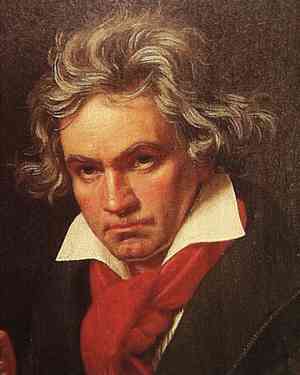 Ludwig von Beethoven 1820 Painting: Joseph Karl Stieler Source: Tutt Art |
|
| Born on
27 Sep 1772 in present-day Gdańsk,
Antonio Casimir Cartellieri is
the first composer from Poland to enter these histories of classical music,
though he wasn't Polish, his father Italian and his mother Latvian.
Cartellieri was age thirteen when they divorced and his mother took him to
Berlin. In 1791 he became court composer to Count Oborsky in Poland, with
whom he traveled back to Berlin, producing the opera, 'Die Geisterbeschwörung', in 1793.
He then followed Oborsky to Vienna where he studied with
Johann Albrechtsberger.
On 29–30 March 1795 Cartellieri premièred his oratorio, 'Gioas re di
Giuda' [1
2], at the Burgtheater where he met
Beethoven
who performed his first or second piano concerto during the intermission. The text for that had been written by
Metastasio back
in 1735. Prince Joseph Franz Maximilian
Lobkowicz hired
Cartellieri as Kapellmeister in 1796, the opera, 'Anton', appearing that year. Cartellieri
remained as a voice tutor and violinist at the court of Lobkowicz, chumming
w Beethovenwho was also a Lobkowitz
favorite, the remainder of his career. Internet Archive lends a date of 1797
for the publishing of 'Flute Concerto in G major'
[1,
2,
3]. The opera, 'Il Secreto', appeared in
1804 w libretto by Luigi Prividali.
Cartellieri's 'Celebre Nativita del Redentore' arrived in 1806 [1
;
audio]. Cartellieri died young on 2 Sep 1807 in Liebshausen, Bohemia. Preceding
Beethoven's death by twenty years,
the causes of his passing onward at not quite age 35 are unidentified.
References: 1,
2.
Audio: 1,
2.
Discos: 1,
2,
3,
4,
5.
Editions.
Bibliography: 'Antonio Casimir Cartellieri (1772-1807) and his mysterious patron ‘Count Oborsky’' by Olga Baird (Yatsenko)
*;
GMG Classical Forum.
Other profiles: 1,
2,
3,
4.
Antonio Cartellieri Prague Chamber Orchestra Clarinet: Dieter Klöcker Prague Chamber Orchestra Clarinet: Dieter Klöcker 1806 Oratorio Chorus Musicus-Köln/Das neue Orchester Christoph Spering Evergreen Symphony OrchestraGernot Schmalfuss |
||
|
Baptized on 14 February 1778 in Barcelona,
Fernando Sor
was a romantic distinctly different from
Beethoven
or
Rachmaninoff. He is the first Spanish
composer to enter these histories since Renaissance musician,
Tomás Luis de Victoria (1548-1611).
There have not been a lot of Spanish composers in this history largely for
reason of the shifting Muslim occupation of portions of Spain from 709 until their
final expulsion by the Habsburgs in 1614. While the rest of Europe was
producing music the Iberian Peninsula was fraught with relentless battle for
several centuries. The so-called peaceful Caliphates had far less interest
in
European music than conquest where they might.
Battle-torn Spain produced many a minor composer in the shifting regions
that it
controlled, and attracted others like
Domenico Scarlatti to
its royal court in the early 18th century. But during the medieval ages in
particular Spain had been as foreign as more remote Russia. As for Sor, he was a virtuosic guitarist who had begun composing by age eleven.
His only formal training was in the choir at the Santa Maria de Montserrat
Abbey in Catalonia as a teenager. He began writing nationalistic music upon
Napoleon's invasion of Spain in 1808. He became a captain during Spain's
resistance, then an administrator in Napoleon's new government in Spain.
Having switched allegiances, he fled to Paris upon the Spanish uprising
against French domination in 1813, never to see Spain again. He there left
his government career and drilled full bore into music. His initial operas
there fared not well, but his abilities with a guitar made for success that
found him in London in 1815 where his works were better received.
Starting in 1823 he lived in Moscow for three years, then toured Europe.
Settling in Paris in 1827, he there composed the majority of his pieces for
guitar. His 'Méthode pour la Guitare' was published in 1830 [*]. His last
composition was a mass in honor of his daughter who died in 1837. He himself
followed on 10 July 1839 of throat and tongue cancer. Sor's place in classical music
is cemented due his works for guitar, but he also composed for piano and
voice, ballets, church music, works for chamber and orchestra, and a good number of
didactic pieces. Sor was a composer of classical guitar as distinguished
from the Spanish folk guitar of flamenco.
References: 1,
2.
Compositions: 1,
2.
Manuscripts & scores: 1,
2.
Editions: 1,
2,
3;
'Fernando Sor: The Complete Studies, Lessons and Exercises' ed. by
Brian Jeffery:
1,
2;
'The New Complete Works for Guitar' in eleven volumes ed. by Brian Jeffery
*;
'Method for the Spanish Guitar' trans. by A. Merrick (1830)
*;
'Method for the Spanish Guitar' w preface by Brian Jeffery
*.
Sheet music: 1,
2.
Audio: 1,
2,
3,
4,
5,
6.
Recordings of: discos: 1,
2,
3,
4,
5,
6;
'Sor: Complete Studies for Guitar' w guitar by Enea Leone.
Further reading: Lawrence Johnson;
Gerardo Arriaga Moreno;
Stanley Yates (guitar sonatas).
Biblio: 'Fernando Sor: Composer and Guitarist' by Brian Jeffery (Tecla 1977):
review.
Other profiles: 1,
2,
3,
4,
5 (Brian Jeffery).
Fernando Sor 1833 Op 55:3 Guitars: Andrzej Olewiński Aleksander Wilgos 1832 Op 47: 5 Guitar: Lawrence Johnson Guitar: Evangelos Assimakopoulos 1837 Op 62:1 For 2 guitars Guitar: Jordi Codina & Josep Mangado 1828 Op 34 For 2 guitars Guitars: Julian Bream & John Williams 1836 Op 59 For guitar E minor Guitar: Thomas Viloteau Variations on a Theme by Mozart 1821 Op 9Guitar: Evangelos Assimakopoulos |
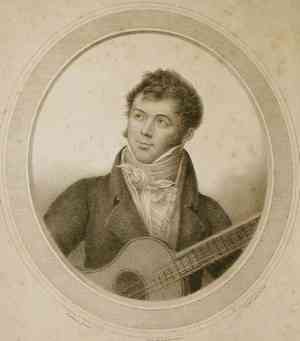 Fernando Sor Circa 1825 Lithograph: Gottfried Engelmann From a painting by Joseph Bordes Source: Classic Cat |
|
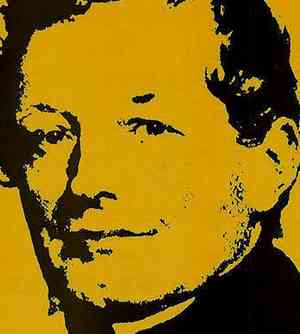 Anton Diabelli Source: Music Room |
Born on 6
Sep
1781 in Mattsee, Austria,
Anton Diabelli
studied with
Johann Michael Haydn.
He had already composed a number of works before becoming a priest in 1800
in Bavaria. The next year his monastery was closed, so he moved to Vienna to
teach guitar and piano, finding employment as a proofreader for a publishing
house. While continuing to compose, Diabelli founded his own publishing
enterprise in 1817 which would become Cappi & Diabelli, the next year.
Diabelli began his 'Vaterländischer Künstlerverein' project in 1819,
composing a waltz which he sent throughout Austria, requesting variations from composers such as
Carl
Czerny,
Johann Nepomuk Hummel and
Franz Schubert. That saw
publishing in 1823 and 1824 in two parts, Part 1 consisting of
Beethoven's
famous '33 Variations on a Waltz by Anton Diabelli' (Op 120). Part 2 was a
collection from fifty other composers including
Franz Liszt
who was seven years old and a student of
Czerny
at the time he wrote it. During the period that Diabelli was collecting
variations on his waltz he published works by
Schubert in 1821. Cappi left Cappi & Diabelli
in 1824 which then became Diabelli & Co. Upon
Schubert's premature death in 1728 Diabelli purchased
his estate of some 1000 works from
Schubert's brother, enabling his
firm to print unheard works by
Schubert
for the next three decades. Diabelli retired from publishing in 1851, dying
on 7 April 1858. Diabelli's double career as a musician and publisher found
him a solid composer, writing pieces largely for guitar, piano and
voice. Though he isn't the first musician in these
histories to have played or composed for guitar, he is the first,
aside from
Fernando Sor,
for whom that instrument is of particular interest in classical
music. References: 1,
2.
Compositions:
choral.
Manuscripts / scores / sheet music: 1,
2,
3,
4,
5,
6,
7,
8,
9,
10,
11.
Audio: 1,
2,
3,
4.
Discos: 1,
2,
3,
4.
Other profiles: English: 1,
2,
3;
German: 1,
2;
international Wikipedia: 1,
2,
3,
4,
5.
Antonio Diabelli Op 102 Sonata in D major Gitarre: Spiro Thomatos Klavier: Fritz Bernhard Op 147 Augsburger Domsingknaben Residenz Kammerorchester München Reinhard Kammler Op 105 Flute: Kaoru Namba Guitar: Masahiro Masuda Viola: Shizuka Inoue Op 29 Guitar: Wiwat Nawaboon Op 57 Guitars: Carlo Barone & Adrian Walter |
|
|
Born on 29 Jan 1782 in Caen, Normandy,
Daniel François Esprit Auber
studied music as a youth but was sent to London to study business at age 20.
Though having produced earlier compositions, his first to be employed were
four concertos for cello, used by violinist, Jacques-Michel Lamare, during
that period. His first opera, a one-act comedie titled 'Julie', premiered in
1805 w libretto by Jacques Marie Boutet. He began working with librettist,
Eugène Scribe, in 1822,
he and Scribe producing 38 stage works together over the next 31 years, largely a
string of happy endeavors. Their first opera was 'Leicester' on 25 Jan 1823, a
collaboration w dramatist, Melesville. In
1825 Auber joined the Legion of Honor formed in 1802 by Napoleon. Auber
remained w the Legion until 1847, eventually securing the
rank of commander. It was 1839 when Louis Daguerre introduced the
daguerreotype process, key to the invention of photography. Among the first portraits ever taken were the
1839 self-portrait of photographer, Robert Cornelius,
and the wife of scientist, John Draper [*].
This is mentioned as Auber is the first in these histories with portraits
not only etched (as to the right) but taken by camera
[*]. In 1842 he became director of the Paris Conservatoire. His opera, 'Haydée' (The Secret'), premiered on 28 Dec 1847 w libretto by
Scribe [1,
2].
Auber's last opera w Scribe was 'La Circassienne' premiering on 2 Feb of
1861 [1,
2]. Scribe died 18 days later on 20 Feb 1861.
Auber set music to one more opera by Scribe, 'La fiancée du Roi de Garbe'
[1,
2,
3,
4,
5,
6]
w assistance from librettist, Henri Vernoy de Saint-Georges, that premiering
on 11 January 1864. Auber's own final opera premiered on 20 December 1869, 'Rêve
d'amour' [1,
2,
3,
4] w libretto by Adolphe d'Ennery and Eugène Cormon. Auber died on 12 or 13 May 1871.
Though an obscure composer today, Auber was consistently popular during his
time, most of his 48 operas premiering in Paris.
References: 1,
2,
3.
Compositions:
operas: 1,
2,
3,
4,
5;
various other.
Editions & scores: 1,
2,
3,
4,
5,
6 (works list),
7.
Sheet music (choral works).
Audio: 1,
2,
3,
4;
cylinder.
Recordings of:
discos: 1,
2,
3,
4;
'Opera Overtures' by the Orchestre Régional de Cannes w Wolfgang Dörner:
*;
review by
Robert Letellier.
Further reading:
Talk Classical;
Tchaikovsky Research.
Biblio: texts by Robert Letellier: 'Daniel-François-Esprit Auber: The Man and His Music' (Cambridge Scholars Publishing 2010)
*;
'The Overtures of Daniel-François-Esprit Auber' (Cambridge Scholars Publishing 2011)
*';
other.
Other profiles: English: 1,
2; Francais: 1,
2;
international Wikipedia: 1,
2,
3,
4.
See also portraits. Per below, fairy operas were a French genre of opera based on fairy tales. Daniel Auber 1835 Fairy opera 3 acts Detroit Symphony Orchestra Paul Paray Les diamants de la couronne: Overture 1841 Opera comique 3 acts 1830 Opera comique 3 actsConductor: Bruno Campanella Fra Diavolo: Giuseppe Sabbatini 1837 Opera comique 3 acts Philarmonia Slavonica 1833 Grand opera 5 acts Ensemble Vocal Intermezzo Orchestre Lyrique Français Michel Swierczewski La muette de Portici: Overture 1856 Opera 5 actsRadio Bratislava Symphony Orchestra Ondrej Lenárd 1844 Opera comique 3 acts Stockholms Strauss Orkester Sven Verde |
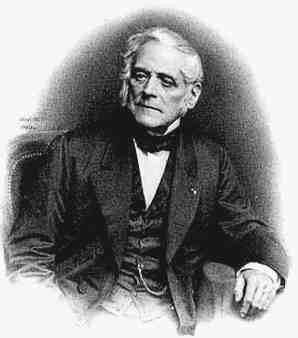 Daniel Auber Source: Wikimedia Commons |
|
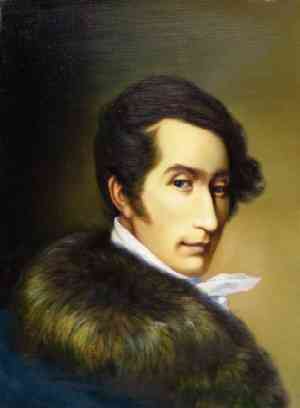 Carl von Weber Source: Wikipedia |
Born on 18 or 19
November 1786 in Eutin, Holstein (now in northern Germany),
Carl Maria von Weber's
father, Franz had been a military officer, violinist and musical director
before founding a theatrical company in Hamburg in 1787. His son, Carl, was
able to play piano and sing at age four. Franz gave Carl a thorough
education in music before he studied w oboist, Johann Peter Heuschkel
in 1796. Among Weber's other teachers was
Johann Michael Haydn while in Salzburg with his father in 1798, they having gone there upon his
mother's death earlier that year. Weber's compositions were first published
that year in Salzburg [IMSLP; Wikipedia: Leipzig], a set of
six fughettas for piano catalogued as Op 1 or J 1-6 (J for
Jähns). His first opera,
'Die Macht der Liebe und des Weins', was a singspiel completed in 1798
though never performed and now lost. 'Das Stumme Waldmädchen' ['The Mute Forest
Maiden': 1,
2,
3] appeared in Freiberg, Saxony, on 24 November 1800 w libretto by Carl von Steinsberg, Weber just turned fourteen years of age. He began publishing articles as a music critic in 1801. He
became Director at the Breslau Opera (now Wrocław Opera) in 1806. That position
presenting frustrations, Weber hired on as private secretary to Duke Louis
of Württemberg in 1807. His father also worked for the Duke, in such
capacity as to enable him to misappropriate large sums of the Duke's money.
Weber was charged alike his father with embezzlement and banished from
Württemberg in 1810. He thereafter traveled about Germany, amidst which he
worked as an operatic director in Prague, until obtaining the directorship
of the Dresden Opera in 1817. His rondo, 'Invitation to the Dance' Op 65/J
260, appeared in 1819 [1,
2,
3].
Among Weber's more popular works then and now is 'Der Freischütz' Op 77/J
277 [1,
2,
3,
4,
5,
6; audio:
1,
2]. The premiere of that
opera on 18 June 1821 in Berlin resulted in taking it on a European tour until 1826 when Weber
was invited to the Royal Opera in London. He there composed his final opera, 'Oberon',
to premiere on 12 April 1826 w text by James Planché [1,
2,
3;
scores: 1,
2,
3;
text]. Weber died two months
later on 5 June 1826 of tuberculosis. Three volumes of 'Hinterlassene
Schriften' were published posthumously in 1828 [
1,
2]. For the last
several decades opera had been experiencing a tug of war between the older
Italian and newer German opera, they differing both in fundamental approach
and style. Among the emphases of Weber's career was the firm establishment
of the German way of doing things. Along with 10 operas Weber composed
concertos, symphonies, vocal works for orchestra and sacred music.
References: 1,
2,
3.
Compositions: 1,
2,
3,
4;
operas.
Editions & scores: 1,
2,
3,
4;
choral works;
Internet Archive: 1,
2.
Audio: 1,
2,
3,
4;
cylinder.
Discographies: 1,
2,
3,
4,
5.
Further reading: Tchaikovsky Research.
Bibliography.
Other profiles: 1,
2,
3,
4,
5,
6,
7,
8,
9,
10;
Wikisource: 1,
2,
3.
See also: Carl Maria von Weber Museum;
Carl Maria von Weber University of Music;
portraits: 1,
2.
"J" numbers below are from the 1967 edition of
Friedrich Jähns's 1871 'Chronologisch-thematisches Verzeichniss seiner
sämmtlichen Compositionen' [*]. Carl Maria von Weber Der Freischutz (The Freeshooter) 1821 J 277 Op 77Opera Overture Czech Philharmonic Orchestra Dvořák Hall 1810-11 J 106 Opera Birmingham Symphony Orchestra Conductor: Lawrence Foster 'Jubelmesse' 1818-19 J 251 Op 76 Cologne West German Radio Chorus Cologne West German Radio Orchestra Helmut Froschauer Soprano: Anke Hoffmann 1825-26 J 306 Directed by Nikolaus Habjan Bavarian State Opera Chorus Bavarian National Orchestra Conducted by Ivor Bolton 1810 J 98 Op 11 Staatskapelle Dresden Herbert Blomstedt Piano: Peter Rösel 1812 J 155 Op 32 Koelner Akademie Michael Alexander Willens Piano: Ronald Brautigam 1819-22 J 287 Op 70 Piano: Michael Endres |
|
| Though
born on 21 Feb 1791 in Vienna,
Carl Czerny
was Czech. Nor did his family speak German. Czerny's father was a piano
teacher who wasted no time clearing Carl's path. Playing piano at three and
composing at seven, Czerny first publicly performed in 1800, a concerto by
Mozart.
Beginning in 1801 he studied under
Beethoven for the next three years.
Such was the start of a lifetime friendship. Czerny had a phenomenal memory
and could play any piece by
Beethoven on call by 1804-05.
Beethoven chose Czerny to premiere
his first concerto in 1806 (his fifth in 1812), the same year he began
teaching,
Franz Liszt
to become a pupil in 1819. Due to
Liszt's skill Czerny
instructed him for free. Czerny performed on tours in Italy, France and
England until 1840, when he decided to focus more on composition than playing
piano. He died a wealthy man in Vienna on 15 July 1857, bequeathing most his fortune
to charities. Czerny had composed above a thousand works, largely with piano
in mind, though sacred works as well. His piano works included fantasies,
impromptus (brief solo pieces reminiscent of improvisation), rondeaux,
sonatas, variations, etc.. Czerny's prestige carried onward into the modern
period due his advanced piano techniques and students who themselves became
successful composers. References: 1,
2.
Compositions: 1,
2.
Editions & scores: 1,
2,
3,
4,
5,
6,
7.
Sheet music: 1,
2,
3,
4,
5.
Audio: 1,
2,
3,
4.
Discographies: 1,
2,
3,
4.
Further reading by source:
'Queen's Quarterly' (1997);
'An Underestimated Master' by
Levi Keith Larson.
Further reading by topic: Beethoven and;
composers on.
See also Wikimedia Commons.
Other profiles English: 1,
2,
3;
international: 1,
2,
3,
4.
Carl Czerny 1850 Consortium Classicum Dieter Klöcker Piano: Claudius Tanski 1829? Op 153 Philharmonisches Orchester Altenburg-Gera Conductor: David Porcelijn Piano: Anna & Ines Walachowski Piano Sonata 1 in A flat major 1822? Op 7 RondoPiano: Martin Jones 1826? Pub 1827 Op 124 Piano: Martin Jones Op 299 40 exercizes Piano: Rino Nicolosi Op 780 Allegro Staatsorchester Frankfurt Nikos Athinäos Staatsorchester Frankfurt Nikos Athinäos |
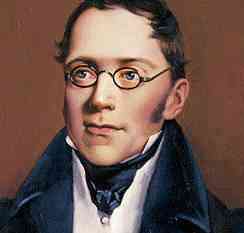 Carl Czerny Source: Bach Cantatas |
|
| Born near
Berlin on 5 September 1791 (capital of Prussia at the time),
Giacomo Meyerbeer
(Jacob Liebmann Beer) had a rich Jewish financier for a father and, with the
exception of
Romanos the Melodist with
whom these histories began thirteen centuries ago, is the first Jewish composer to find entry into
these histories. He studied with Franz Lauska and Muzio Clementi before
giving his first public piano performance in 1801 (a concerto by Mozart). He
then studied with composers
Antonio Salieri and Carl Zelter. Meyerbeer had gone to work on a couple
incomplete operas, 'Abu Hassan' in 1810 and 'Der Admiral' in 1811, that were
never performed. He did, however, produce his
first theatrical work in 1810 in Berlin, a ballet called 'Der
Fischer und das Milchmädchen' w choreographer Etienne Lauchery. From 1810 to 1812 he studied under Georg
Joseph Voglerh, about the time Beer changed his name to Meyerbeer. His first
staged opera, 'Jephtas Gelübde', premiered in Berlin on 23 December 1812, a
singspiel w libretto by Aloys Schreiber [1,
2
(alt);
audio;
text]. After
staging a number of works in Germany Meyerbeer traveled to Paris and London
before arriving in Italy to study Italian opera in 1816. Commencing opera
productions there in 1817, not until 'Il Crociato in Egitto'
['The Crusader in Egypt':1,
2] did Meyerbeer
begin to see resounding success. First staged in Venice on 7 March 1824 w
libretto by Gaetano Rossi, the
show was taken to Florence in May, then London the next year, then Paris where, as the music
capital of Europe, everyday success translated into big success. 'Il crociato
in Egitto' was yet the last opera to feature a castrato
[1,
2,
3,
4,
5,
6,
7,
8,
9,
10;
Hektoen International: 1,
2;
Wikipedia]. Castratos had a range
from contralto to soprano. Eunuchs had been singing in choirs since about
400 AD. Empress consort, Aelia Eudoxia, of Constantinople employed a
eunuch for a choir master. Eunuchs were originally slaves castrated before
puberty to ensure submission. They were later found among males who simply
never reached puberty. Castration for musical purposes wasn't made illegal
until 1861 in Italy. It wasn't forbidden by the Catholic Church until 1878.
As for Jewish castration of foreskin on the eighth day of life, Meyerbeer
apparently believed, at least for a time, that who didn't bleed on the ninth
day would bleed throughout life and after death. Be as may, big success got translated
to giant success with the production of 'Robert le Diable' at the
Paris Opera
on 21 November 1831 w libretto by
Eugène Scribe and Casimir Delavigne
[1,
2,
3,
4;
audio: 1,
2;
text].
That was a grand opera, a term that could
refer to a huge production and/or
the Paris Opera. Scribe was a major French librettist of the period who worked throughout the years
w Daniel Auber and w whom
Meyerbeer collaborated on several more operas. In 1832 Meyerbeer became
Kapellmeister to the court of Frederick William III of Prussia. His opera,
'Les Huguenots', appeared at the Paris Opera in 1836 w libretto by Scribe
and Émile Deschamps [1,
2,
3,
4,
5,;
audio: 1,
2].
'Les Huguenots' failed to charm
Robert Schumann who cast no pearls before Jews,
so to speak
[1,
2,
3]. 'Le
Prophète' arrived on 16 April 1849 w libretto again by Scribe
[1,
2,
3,
4;
audio], that
concerning the life of Anabaptist, John of Leiden. That failed to charm Richard Wagner
for the same cause as
Schumann: Meyerbeer's
Judaism [1].
Other Jewish composers for whom
Wagner
had small taste included Moscheles
and Mendelssohn. Wagner
felt that Meyerbeer had no place in musical history, believing his work to
be superficial and his success more purchased than earned. Indeed, Meyerbeer had
always been wealthy and staged spectacles exceedingly costly to produce.
Howsoever, Wagner's sentiments found agreement much later when in 1933 the Nazi regime
banned Meyerbeer altogether. As for Meyerbeer, the next to last opera that
he premiered during his lifetime was 'Le Pardon de Ploërmel' on 4 April 1859 w libretto by Jules
Barbier and Michel Carré [1,
2,
3]. That was also his final opera insofar as it is
usually grouped with its revision titled 'Dinorah' staged at Covent
Garden in London on 26 July 1859. Meyerbeer died in Paris on 2 May 1864, the
day after finishing 'L'Africaine' staged posthumously the
next year at in Paris on 28 April 1865
[1,
2;
audio]. Wikipedia has Meyerbeer and
Scribe working on that since 1837 as 'L'Africaine', changing it to 'Vasco da
Gama' in 1852. As Scribe had died in 1861 it was a version altered and
renamed 'L'Africaine' by
François-Joseph Fétis that appeared at the Paris Opera in '65. In addition
to 16 staged operas Meyerbeer composed about 50 songs.
References: 1,
2,
3,
4.
Compositions:
operas: 1,
2,
3.
Editions & scores: 1,
2,
3,
4,
5,
6,
7,
8.
Collections.
Audio: 1,
2,
3,
4;
cylinder.
Recordings of: discos: 1,
2,
3,
4,
5;
'Dinorah' by the Zweite Schäferin Chor und Orchester der Deutschen Oper w Enrique Mazzola
*;
'Vasco da Gama' ('L'Africaine') Robert Schumann Philharmonic w Frank Beermann
*.
Further reading: MusicWeb;
'New York Times': 1,
2;
George Robinson;
Talk Classical;
Tchaikovsky Research.
Biblio: 'Giacomo Meyerbeer: Reputation without Cause? A Composer and his Critics' by
Jennifer Jackson {Cambridge Scholars Publishing 2011);
Robert Letellier:
'A Critical Life and Iconography' (Cambridge Scholars Publishing 2019):
1,
2;
'An Introduction to the Dramatic Works of Giacomo Meyerbeer' (Routledge 2017)
*;
'Giacomo Meyerbeer: Sacred Works' (Cambridge Scholars Publishing 2010):
*.
Other profiles: English:
1,
2,
3,
4,
5,
6;
Deutsch;
Francais: 1,
2.
See also the Meyerbeer Fan Club. Giacomo Meyerbeer 1837-63 First performed 1865 Paris 5 acts Radio-Philharmonie Hannover Conductor: Michail Jurowski 1837-63 First performed 1865 Paris 5 acts Robert-Schumann-Philharmonie Conductor: Frank Beermann Clarinet Quintet in E-flat major 1813 Clarinet: Dieter Klöcker 1824 2 actsRoyal Philharmonic Orchestra Henry Lewis 1859 3 acts Geoffrey Mitchell Choir Philharmonia Orchestra Conductor: James Judd 1836 5 acts Sydney Opera House The Australian Opera Director: Lofti Mansouri Conducting: Richard Bonynge 1820 Revised 1826 2 acts London Philharmonic Orchestra David Parry 1836-49 5 acts Chor und Orchester der Wiener Staatsoper Marcello Viotti |
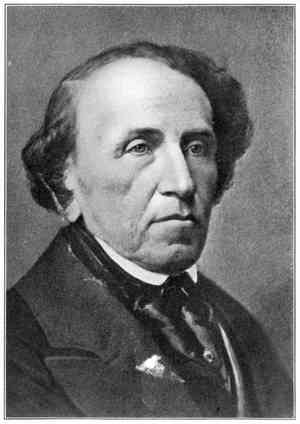 Giacomo Meyerbeer Photo: Pierre Petit Source: Noteworthy |
|
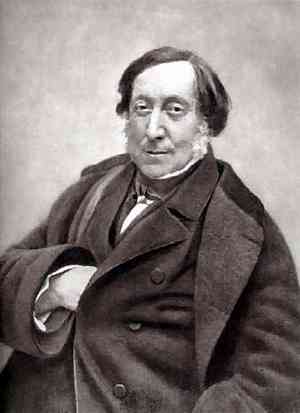 Gioachino Rossini 1858 Photo: Félix Nadar Source: Wikipedia |
Born on
29 Feb 1792 in Pesaro, Italy,
Gioachino Antonio Rossini
had a horn player for a father, who also inspected slaughterhouses and a
singer for a mother, both of whom played together at theatres. He also
received fundamental instruction for a couple of years from a blacksmith to
whom he was apprenticed. Rossini's initial compositions were songs for piano
and voice, his first called 'Se il vuol la molinara' with its manuscript
completed on 20 March 1801 [LOC]. Who wrote the words for this song is
unknown. Come six
string quartet sonatas written and performed in 1804 at age twelve.
Five of those saw later publishing by Ricordi in Milan in 1826, No. 3 didn't
see print until 1954. His first appearance in public other
than in a choir was the next year, singing in a theatre, which he would
never do again. He composed his first opera, 'Demetrio e Polibio', in
1805/06, but didn't stage it until 18 May 1812 at the Teatro Valle in Rome
[1,
2,
3,
4,
5,
6,
7;
audio 1,
2,
3]. Beginning in 1806 Rossini sought instruction at the Conservatorio di Bologna, learning cello. His debut opera in public was 'La
Cambiale di Matrimonio' ('The Bill of Marriage') on 3 Nov 1810 at the Teatro
San Moisè in Venice [1,
2,
3,
4,
5,
6;
audio]. He spent the next decade becoming
Italy's most popular name in opera. In 1815 Rossini came by an offer too
nice to despise from impresario, Domenico Barbaia, in Naples. Rossini was to
supply one opera per year to the Teatro di San Carlo and the Teatro del
Fondo. To be paid 200 ducats per month and what would amount to about 1000
ducats annually from gambling tables at those theatres. For
Beethoven
the value of 1 ducat after 1816 was equivalent to $133 today. If the value
of a ducat was anything similar in Italy, that provided Rossini a salary of
about $319,200 today, plus another $133,000 in gambling profits, a prime
salary for a man only 24 years old in 1816. Rossini is probably most famous
for his opera, 'The Barber of Seville', that premiered in Rome on 20
February 1816 at the Teatro Argentina [1,
2,
3,
4,
5,
6,
7;
audio: 1,
2,
3,
4;
score]. In 1822 he was staging works
in Vienna, taking performances to Paris and London the next year. In 1824 he
became music director at the Théâtre des Italiens in Paris, to be paid £800
annually (about $94,095 today). He also began composing for Charles X of
France for whom he staged a complex 'Il Viaggio a Reims' in June of 1825
[1,
2,
3,
4,
5,
6,
7,
8,
9,
1o,
11;
audio: 1,
2].
Rossini's 'Le Comte Ory' premiered on 20 August 1828 at the Salle Le
Peletier in Paris w libretto by
Eugène Scribe
and Charles-Gaspard Delestre-Poirson authored in 1817
[1,
2,
3,
4,
5,
6,
7;
audio: 1,
2,
3;
text].
'William Tell', Rossini's last opera, arrived on 3 Aug 1829 at the Salle Le
Peletier [1,
2,
3,
4,
5;
audio: 1,
2,
3].
That was w libretto by Victor-Joseph Étienne de Jouy and L. F.
Bis after Friedrich Schiller's play, 'William Tell', based on the legend of
William Tell [1,
2,
3].
Rossini retired in 1830 at age 37, trading theatre for the life of a
gourmand (as one might gather from the photo to the left) and hosting
salons. He did continue to compose, however, at leisure, his 'Péchés de
Vieillesse' ('Sins of Old Age') being a collection of 150 piano and voice solos
composed between 1857 and his death on 13 Nov 1868 [*]
of pneumonia in Paris
['Sins of Old Age': 1,
2,
2;
audio;
texts].
Considered a part of 'Sins' is his sacred work, 'Petite Messe Solennelle'
['Little Festive Mass': 1,
2,
3,
4,
5], performed in Paris on March 14, 1864, for
Countess Louise Pillet-Will. Written for four soloists, mixed choir, two
pianos and harmonium, Rossini later revised it for orchestra, that performed
posthumously in Paris on 24 Feb 1869. Rossini
left an estate valued at about 1.4 million dollars today, peanuts
to not a few modern musicians. But in Rossini's period,
during which there was neither radio nor recording from which to earn
royalties, that was rock star money. It's been figured that
Beethoven's
9th Symphony may have been worth about $19,200 in today's money to him, a
little sonata or cantata perhaps seven to nine hundred dollars, nothing like
the sums made in recent times for any silly song at all. Rossini's
compositions were of singularly powerful influence on opera during the first
half of the 19th century, his 39 Italian operas the greatest rival at that
time to German opera. He also composed a number of cantatas profane
(secular) and instrumental works.
References: 1,
2,
3,
4.
Compositions: 1,
2,
3,
4,
5;
operas: 1,
2,
3,
4.
Editions & scores: 1,
2,
3,
4,
5,
6,
7,
8.
Audio: 1,
2,
3,
4.
Recordings of: discos: 1,
2,
3,
4,
5;
'The Barber of Seville' by Smillie & Timson *;
review; 'La Cambiale di Matrimonio' ('The Bill of Marriage') by the Wurttemberg Philharmonic w Christopher Franklin
*;
reviews: 1,
2;
'Le Comte Ory' by the Czech Philharmonic Choir w Peter Fiala & Jan Ocetek
*;
review;
'Le Comte Ory' by the Metropolitan Opera C & O w Maurizio Benini & Bartlett Sher
*;
'Demetrio e Polibio' directed by Davide Livermore
*;
'Petite Messe Solennelle' by the The King's Consort w Robert King
*;
'Soirées Musicales Songs and Duets' by Roger Vignoles (piano)
*;
'Sonatas for Strings Nos 1-6' by Musici (1971):
1,
2;
'The String Sonatas' by Elizabeth Wallfisch (violin), Marshall Marcus (violin), Richard Tunncliffe (celo) and Chi-Chi Nwanoku:
1,
2;
'Il Viaggio a Reims' by the Camarata Bach w Antonio Fogliani
*;
review;
'Il Viaggio a Reims' by the Mariinsky Theatre C & O w Valery Gergiev
*.
Presentations on Broadway.
Usage in modern media.
Further reading: Richard Osborne.
Other profiles: English: 1,
2,
3,
4,
5,
6,
7,
8,
9,
10,
11;
Italian: 1,
2;
Treccani: 1,
2,
3;
international: 1,
2,
3,
4,
5,
6,
7,
8,
9.
See also: the Gioachino Rossini Conservatory:
1,
2;
the Gioachino Rossini Foundation;
the Japan Rossini Association;
the Pesaro Rossini Opera Festival;
portraits;
will & testament of 1858. Gioachino Rossini 1816 Opera Choir of Cologne Radio Symphony Orchestra Stuttgart Gabriele Ferro 1819 Opera Coro Filarmonico di Praga London Sinfonietta Opera Orchestra Donato Renzetti 1815 Opera Teatro Massimo di Palermo Nino Sanzogno 1829 Last opera Teatro di San Carlo di Napoli Fernando Previtali 1811 Opera Coro del Teatro Ventidio Basso Orchestra Sinfonica Nazionale della Rai Carlo Rizzi 1863 Sacred Coro de la OSG Orquesta Sinfónica de Galicia Director: Alberto Zedda 1821 Cantata Orchestra della Svizzera Italiana 1831 Revised 1841 Sacred Philharmonia Orchestra Carlo Maria Giulini
|
|
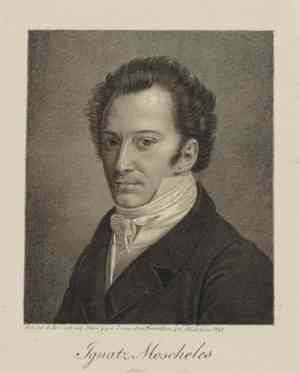 Ignaz Moscheles 1820 Source: Wikimedia Commons |
Born on 23 May 1794 in Prague, Jewish
Ignaz Moscheles
had a rich merchant who played guitar for a father. Upon his father's death
he went to Prague with his mother in 1808, where he gave his first public
concert, then Vienna, managing to study counterpoint and theory under
Johann Albrechtsberger
and composition beneath
Antonio Salieri. Beginning to
make a name for himself as a piano virtuoso, he and
Meyerbeer played duets
together during that period. He also met and worked for
Beethoven,
thereat to begin an important relationship between them. Eventually leaving
Vienna to tour Europe, Moscheles landed on English soil for the initial time
in 1822. In 1824 he became tutor to
Felix Mendelssohn,
age 15, in Berlin, accounting him a "phenomenon" and "master" already. As
with
Beethoven,
Mendelssohn
and Moscheles would work with each other in various ways in the coming
years. Lending example of Moscheles' work at Presto is '24 Etudes' Op 70
published in 1827 [*;
audio;
scores]. In 1832 Moscheles conducted
Beethoven's
premiere of 'Missa Solemnis' in London. Moscheles translated and edited the
1841 English edition of Anton Schindler's 'The Life of Beethoven'. When
Mendelssohn
died in 1847 Moscheles assumed leadership of the conservatory
Mendelssohn
had founded in Leipzig in 1843. That position brought him to maintain
the rivalry between the
Mendelssohn
and
Wagner
camps concerning which
Wagner
felt that Jews had no place in classical music. Moscheles died on 10 March 1870 in Leipzig. Most of Moscheles' works, above 140, were
for piano and orchestra, including a large number of sonatas and études.
Etudes are brief exercises or demonstrations of virtuosity.
References: 1,
2.
Compositions: 1,
2,
3,
4.
Editions & scores: 1,
2,
3,
4,
5,
6,
7.
Audio: 1,
2,
3,
4.
Discographies: 1,
2,
3,
4,
5.
Other profiles: Deutsch: 1,
2;
Jewish Encyclopedia: 1905,
1916;
international Wikipedia: 1,
2,
3,
4,
5;
HMR Project. Biblio: 'Ignaz Moscheles and the Changing World of Musical Europe' by Mark Kroll (Boydell & Brewer 2014)
*.
See also correspondence.
Ignaz Moscheles 1822 Op 54 Rondo Piano: Marc Andre Hamelin Op 57 Piano: Loredana Brigandi 1819? Op 47:1 Piano 4 hands Piano: Nakamura Junko Hayashikawa Takashi 1819? Op 47:2 Piano 4 hands Piano: Nakamura Junko Hayashikawa Takashi 1819? Op 47:3-4 Piano 4 hands Piano: Nakamura Junko Hayashikawa Takashi 1820? Op 58 3 movements Philharmonica Hungarica Othmar Maga Piano: Michael Ponti 1821 Op 49 F sharp minor Allegro con passione Piano: Michael van Krücker premiere 1829 London? Op 81 Frankfurt State Orchestra Nikos Athinaos |
|
| Born in
Vienna, Austria, on 31 Jan 1797,
Franz Schubert joins
Beethoven
as one of the preeminent pair that of experiment and innovation launched the
Romantic period. Be as may, to get on the same page it is well to here
insert a note as to opus numbers which aren't much used with Schubert, they
making little sense by the time he and publishers who assigned them were
finished. Standard cataloguing of Schubert is otherwise by "D" number, first
assigned in 1951 by Otto Erich Deutsch, revised edition 1978. The Deutsch
catalogue is chronological by theme. As for Schubert, having a schoolmaster
who played cello for a father, he learned to play violin, piano, organ and
viola as a child, also composing string quartets as a juvenile to perform w
his father and two brothers. In 1808 Schubert won
a scholarship to study at the Stadtkonvikt (Imperial Seminary). Upon his
works there revealing genius, he was soon studying theory and composition
under
Antonio Salieri. Schubert's D 1 is assigned to 'Fantasy in G major', a piano 4 hands composed
in 1810 [1,
2;
audio;
score]. "Piano 4 hands" describes duets played on the same keyboard
[1,
2].
Though he likely wrote earlier songs D 5 is assigned to 'Hagars Klage' as
of 1811, a largo in C minor [*;
audio,].
Though Schubert's catalogue is piano intensive, he composed operas as well,
leaving his first as of 1813 unfinished: 'Der Spiegelritter' D 11
[1,
2,
3;
audio: 1,
2;
score: 1,
2]. His first
employment arrived in latter 1813 as a teacher at his father's school, a position he
apparently didn't like, but a station
difficult to overcome even as he generated compositions
nonstop. Among factors which describe a firm departure from the classical
into the romantic period are Schubert's lieder (songs), going hand in hand
with his favorite poet at the time, Johann Goethe associated w the Sturm und
Drang movement [Storm and Stress: 1,
2,
3].
Schubert scholar, Christopher Gibbs, appoints Schubert's first masterpiece
to 'Gretchen am Spinnrade' ('Gretchen at the Spinning Wheel') completed in
Oct of 1814, that inspired by Goethe's 'Faust'
['Gretchen': 1,
2,
3,
4; audio:
1,
2,
3;
score;
text].
Schubert set Goethe's 'Erlkönig' to music in 1815, catalogued as D 328
[1,
2,
3;
audio;
autograph;
score;
text].
A fourth version was eventually performed privately in Vienna on 1 Dec of
1820, then publicly on 7 March 1821, the year Schubert published it as Opus
1, printed by the firm of
Anton Diabelli.
'Claudine von Villa Bella' D 239 was begun in the summer of 1815, that an
unfinished 3-act singspiel composed by Goethe in 1775 ['Claudine':
1,
2,
3,
4,
5;
audio; text:
1,
2].
Another of Schubert's early songs was his popular 'Die Forelle' ('The
Trout') D 450 of early 1817. On 1 March In 1818 Schubert 's initial premiere of a secular work
was on 1 March 1818, staging
'Italian Overture in C Major' D 591
[1,
2,
3]
in Vienna. The coming summer he became a music tutor to the family of Count
Johann Karl Esterházy. It may have been daughters, Marie and Karoline, for
whom he wrote another piano 4 hands called 'Marche Militaire No.1' in D major from ['Drei Militärmärsche' D 733 Op 51:
1,
2;
audio: 1,
2;
scores: 1,
2].
In 1819 Schubert included a variation of 'The Trout' in part of 'Piano
Quintet' in A major D 667 [1,
2,
3;
audio].
In 1820 Schubert was arrested by Austrian police and reprimanded for use of
"insulting and opprobrious language" against government officials. In 1822 Schubert met both major composers, Carl
Weber
and Beethoven,
but not much was able to come of such, they having separate paths to lead. Schubert's best-known opera is probably
'Fierrabras' composed in 1823 but not performed, in parts, until 7 May of 1835
in Vienna six and a half years after Schubert's death
['Fierrabras': 1,
2,
3,
4,
5,
6;
audio].
That had a libretto by Joseph Kupelwieser w dialogue by Schubert. Lending
example of sacred music by Schubert is his Ave Maria, 'Ellens Dritter Gesang'
('Ellen's Third Song'),
of 1825 catalogued as D 839 or
Op 52 No. 6. [1,
2,
3;
score; audio:
1,
2;
text].
That was one of seven songs he set for German translations of Sir Walter
Scott's 'The Lady of the Lake', also finding its way into the Walt Disney
animation film, 'Fantasia', in 1940. Schubert began his 'Symphony No. 9 in C
major' (the 'Great') D 944 sometime in 1824 [1,
2,
3,
4,
5;
audio:
1,
2].
Though scored by summer of 1826 it wasn't performed until 8 March 1829 a few months after his death.
Schubert left his final opera, 'Der Graf von Gleichen' D 918, unfinished in 1827
[1,
2;
audio: 1,
2].
He gave his first and last solo concert performance on the occasion of
the first anniversary of Beethoven's death in '27 on 26 March 1828 [Newbould].
Schubert had visited Beethoven shortly before the latter's demise and
attended his funeral. In the
summer of 1828 Schubert himself began to fall ill to degree that he thought he might
die, which he did on 19 November that year at only age 31, typhoid generally
considered his killer [1,
2,
3,
4,
5,
6,
7].
He was working on 'Symphony No. 10 in D major' D 936A [1,
2] at the time of his
passing. Paid a visit five days before his death by violinist, Karl Holz,
Schubert asked to hear
Beethoven's
'String Quartet No. 14 in C-sharp minor' Op 131. Schubert had composed above 1,500 works, about 600 of them for
solo voice and piano. He proved a treasure chest to
Diabelli
who upon Schubert's passing purchased his musical estate from Schubert's
brother, there so many works unheard that Diabelli's publishing firm printed "new"
pieces by Schubert for the next thirty years. Other than the vast quantity of
secular lieder that Schubert wrote, he also composed music for masses and
hymns. Together with about 20 operatic works he composed chamber music for
piano and strings as well as ten symphonies, three unfinished
[1,
2]. His large number of piano pieces include duets, sonatas
and dances. References: 1,
2,
3,
4.
Compositions:
Deutsch Thematic Catalogue (D): 1,
2,
3,
4;
D & Op cross reference;
by genre: 1,
2,
3;
4;
chamber;
lieder: 1,
2;
piano & violin;
operas: 1,
2,
3;
symphonies: 1,
2.
Autographs.
Editions & scores: 1,
2,
3,
4,
5,
6,
7,
8,
9.
Sheet music: 1,
2,
3;
choral;
lieder:
1,
2.
Choral & song texts: 1,
2.
Audio: 1,
2,
3,
4,
5,
6,
7,
8,
9,
10;
cylinder;
overtures by the Prague Sinfonia Orchestra.
Recordings of: discos: 1,
2,
3,
4,
5,
6;
'The 10 Symphonies' by the Academy of St. Martin in the Fields w Sir Neville Marriner
*;
'Complete Overtures' by the Prague Sinfonia w Christian Benda
*,
review;
'The Complete Songs' by Graham Johnson (piano)
*;
'Hyperion Schubert Edition Vol 9' by Arleen Auger (soprano) & Graham Johnson (piano)
*.
Presentations on Broadway.
Usage in modern media.
Further reading: Gregg Whiteside.
Bibliography: 1,
2;
'The Cambridge Companion to Schubert' by Gibbs, Ottoway & Cross (Cambridge U Press 1997)
*;
'Franz Schubert's Works' (Breitkopf & Härtel 1884-97)
*;
"The Life of Schubert" by Christopher Gibbs (Cambridge U Press 2000):
1,
2;
'New Schubert Edition':
1,
2,
3;
'Our Schubert: His Enduring Legacy' David Schroeder (Scarecrow Press 2009)
*;
'Schubert: The Music and the Man' by Brian Newbould (1936)
*.
Other profiles: Catalan;
Deutsch: 1,
2,
3,
4,
5;
English: 1,
2,
3,
4,
5,
6; Francais: 1,
2,
3;
Italian: Treccani;
Norwegian;
Russian: 1,
2,
3,
4,
5.
See also: correspondence;
images & portraits: 1,
2,
3;
Franz Schubert Institut (Austria);
Franz Schubert Museum (Austria);
Schubert Institute (UK).
Schubert's fourth impromptu is listed under
Arthur Rubinstein in
Early Modern.
Per below, D numbering was first assigned in 1951 by Otto Erich Deutsch
in his 'Schubert Thematic Catalogue', revised edition 1978
[1,
2,
3].
Franz Schubert 1823 D 790 Op 171 Piano: Alfred Brendel 1815 D 328 Bass baritone: Philippe Sly Piano: Maria Fuller: piano 1828 D 940 Piano 4 hands Piano: Louis Lortie & Hélène Mercier 1823 D 796 Op 76 Opera Prague Sinfonia/Christian Benda 1820 D 689 Oratorio Libretto: August Niemeyer Südfunkchor Stuttgart Wolfgang Isenhardt Radio Sinfonieorchester Stuttgart Gabriel Chmura 1820 D 689 Oratorio Libretto: August Niemeyer Südfunkchor Stuttgart Wolfgang Isenhardt Radio Sinfonieorchester Stuttgart Gabriel Chmura 1820 D 689 Oratorio Libretto: August Niemeyer Südfunkchor Stuttgart Wolfgang Isenhardt Radio Sinfonieorchester Stuttgart Gabriel Chmura 1815 D 167 Moran Singers Ensemble Tel-Aviv Soloists Ensemble Conductor: Barak Tal 1822 D 678 Concerto Köln/Peter Neumann 1828 D 950 Orchestre Philharmonique de Radio France Conductor: Daniel Harding 1824 D 803 Quatuor Ysaye 1825 D 845 Op 42 Piano: András Schiff 'Der Tod und das Mädchen' ('Death and the Maiden') 1826 D 810 Alban Berg Quartett 1828 D 956 Op 163 Juilliard Quartet 1815 D 125 Failoni Orchestra/Michael Halász 1815 D 200 Vienna Philharmonic/Carlos Kleiber 1827 D 911 Op 89 Song cycle Baritone: Dietrich Fischer-Dieskau |
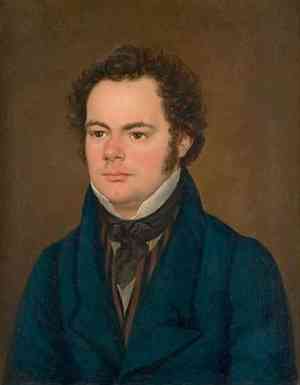 Franz Schubert 1827 Painting: Franz Eybl Source: Wikipedia |
|
| Born in Bergamo in northern Italy on
29 Nov 1797,
Domenico Gaetano Maria Donizetti
was one of the triple whammy that dominated Italian opera during the first
half of the 19th century, consisting of
Gioachino Rossini,
Vincenzo Bellini
and himself. As they, Donizetti composed operas exemplary of the bel canto
style [1,
2,
3,
4,
5,
6].
Donizetti attended the school of composer, Simon Mayr, on
scholarship, perhaps at age nine. He also studied counterpoint and fugue at
the Liceo Filarmonico in Bologna. Donizetti's first opera was a one-act
comedy in 1816, 'Il Pigmalione' [4]. Probably never performed during Donizetti's
life, it eventually premiered more than a century later on 13 Oct 1960 at
the Teatro Donizetti in Bergamo. A couple more operas were left incomplete
in 1817: 'Olimpiade' and 'L'Ira di Achille'. He premiered his first opera, 'Enrico di Borgogna', in Venice in 1818
[1,
2;
interpretations contemporary: 1,
2,
3]. That arrived
to no great fanfare, though it brought him a commission to stage his one-act
'Una Follia' [1,
2] the next month, again to lukewarm result. Donizetti
then composed three opera buffas to not overmuch applause before heading to Rome
to stage 'Zoraida di Granata' at the Teatro Argentina on 28 Jan 1822
[1,
2;
audio: 1,
2].
It was in Naples on 12 May 1822 that Donizetti premiered his first truly successful
opera, 'La Zingara' w libretto by Andrea Leone Tottola
[*].
His next, 'La Lettera Anonina'
[*;
CD], also made a big splash
in Naples on 29 June 1822 at
the Teatro del Fondo. It was 'Chiara e Serafina'
[1,
2,
3,
4] on 28 Oct of '22 in Milan
at La Scala. A couple more operas were staged in Naples in 1823 before
heading to Rome to premiere 'L'ajo nell'imbarazzo' on 4 Feb 1824 at the
Teatro Valle [1,
2;
audio;
libretto]. It
was back to Naples for 'Emilia di Liverpool' on 28 July 1824 at the
Teatro Nueva [1,
2;
audio;
CD].
From January of '26 in Palermo to August of '28 Donizetti premiered 12
operas including 'Olivo e Pasquale' in Rome on 7 Jan of 1827 [1,
2;
CD]
and 'Alina, Regina di Golconda' in Genoa on 12 May of '28
[1,
2]. Most of
Donizetti's productions had been in Naples, and in autumn of '28 he was
offered the position of Director of the Royal Theatres of Naples, which he assumed in
1829 and retained until 1838. He also premiered three operas in Naples in
1829 from January to July, followed by a revision of 'Alina' at the Teatro Valle in Rome again
on 10 October. He premiered three more operas in Naples before the great
reception that his two-act 'Anna Bolena' received at the Teatro Carcano in Milan on 26
October 1830 [1,
2,
3,
4,
5;
John Pierce: 1,
2;
audio].
'Anna Bolena', concerning the second wife of English King Henry VIII,
Anne Boleyn,
established Donizetti's claim to major
name throughout Europe. He then pumped out
eighteen operas in rapid
succession in Milan and Naples until traveling to Paris to perform 'Marino Faliero'
on 12 March 1835 [1,
2,
3;
CD].
It was back to Naples next for 'Lucia di Lammermoor' at the Teatro di San
Carlo on 26 September 1835 [1,
2,
3;
audio: 1,
2,
3,
4,
5].
Salvadore Cammarano, with whom Donizetti would collaborate numerously, wrote
the libretto after Sir Walter Scott's 1819 novel, 'The Bride of Lammermoor'. Donizetti
crossed the Channel for the first time in 1838 for a London premiere of a revision of
'Gabriella di Vergy' originally composed in 1826
[1,
2,
3]. Cammarano's collaboration w Donizetti on their 1838 opera, 'Poliuto', concerning the Christian martyr, Saint Polyeuctus, was banned before it was performed
by the King of Naples who felt the stage was no place for such sacred
subject matter [1,
2,
3,
4;
CD;
libretto]. Donizetti performed or composed several more operas in Italy and
London before revising 'Poliuto' into 'Les Martyrs' as a grand opera for premiere on 10 April
1840 in Paris w Cammarano's libretto revised by
Eugène Scribe
[1,
2,
3;
audio;
CD].
His 'Il Duca d'Alba' of 1839 had been left incomplete, finished by his
student, Matteo Salvi, for premiere years later in Rome in 1882
[1,
2,
audio]. Apparently
mezzo-sopranist, Rosine Stoltz, hadn't liked the role as Helene that she was
intended to play and the whole thing got dropped. Following 'Les Martyrs'
Donizetti premiered further operas in Paris, Rome and Milan until a visit to
Vienna resulted in 'Linda di Chamounix' on 19 May of 1842 at the
Kärntnertortheater [1,
2,
3,
4,
5,
6;
audio;
CD;
libretto]. Donizetti was appointed Kapellmeister at the
chapel of the royal court of Ferdinand I before
a revision of 'Linda' was premiered in Paris on 17 November of '42. 'Don
Pasquale' appeared in Paris on 3 Jan of 1843 [1,
2,
3,
4;
audio: 1,
2].
Come 'Maria di Rohan' back in Vienna on 5 June of '43 [1,
2,
3,
4,
5;
CD;
libretto],
said to have been composed in less than 24 hours. 'Dom Sébastien, Roi de Portugal'
saw Paris on 9 November 1843 [1,
2,
3;
audio].
Scribe wrote the libretto after the 1838 play by Paul Foucher. 'Caterina Cornaro', which Donizetti had partially completed before 'Don
Pasquale', was staged in Naples on 12 Jan of 1844
[1,
2,
3; audio:
*;
CD]. Donizetti's last
opera premiere was the revision of 'Dom Sébastien' into 'Dom
Sebastian von Portugal' on 6 Feb of 1845 in Vienna w Scribe's French
libretto translated to German by Leo Herz. Donizetti's health had begun to
fail him around early '43. Workaholic or no, both his mental and physical health so rapidly
deteriorated as to find him institutionalized by 1846. His brother finally
won his release to a Paris apartment, then a last trip to Bergamo. He spent
the last several months of his life detached from existence about him, dying
on 8 April of 1848 of syphilis. Including revisions, Donizetti wrote 87
operas, three incomplete. He also wrote 193 songs, 26 cantatas and a
firm number of instrumental, orchestral and piano works.
References: 1,
2,
3.
Compositions: operas: 1,
2,
3; other:
1,
2.
Editions & scores:
1,
2,
3,
4,
5,
6,
7.
Sheet music.
Libretti: 1,
2.
Audio: 1,
2,
3;
cylinder.
Recordings of: discos: 1,
2,
3,
4,
5;
'Marino Faliero' by the Bergamo Musica Festival C & O w Fabio Tartari & Bruno Cinquegrani:
CD;
DVD;
review;
'Requiem' by the Chor der Bamberger Symphoniker & Bamberger Symphoniker Orchestra w Miguel Ángel Gómez-Martínez
[left incomplete in 1835: 1,
2].
Further reading: Genevieve Arkle.
Other profiles: English: 1,
2,
3,
4,
5,
6,
7,
8;
Francais;
Italian: Treccani: 1,
2,
3;
Norwegian;
Spanish.
Bibliography: Willam Ashworth:
1,
2,
3,
4;
'Alto: The Voice of Bel Canto' by
Dan Marek (Rowman & Littlefield 2016). All works below are operas except 'Messa da Requiem'. Gaetano Donizetti 1830 2 acts Direction: Eric Genovese Chorus & Orchestra of the Wiener Staatsopero Conducted by Evelino Pido 1843 3 acts Chorus: Teatro Municipale di Piacenza Orchestra: Orchestra Giovanile Luigi Cherubini Conductor: Riccardo Muti Don Pasquale: Claudio Desderi 1832 2 acts Chor & Orchester der Wiener Staatsoper Alfred Eschwe 1831 Revised 1833 2 acts Chorus & Orchestra Teatro dell'Opera di Roma Conductor: Daniel Oren Fausta: Raina Kabaivanska 1840 2 acts Chorus & Orchestra Teatro alla Scala Donato Renzetti 1835 3 acts Covent Garden Chorus & Orchestra Richard Bonynge Lucia: Joan Sutherland 1842-43 3 acts Slovak Philharmonic Chorus of Bratislava Orchesta Internazionale d'Italia Opera Conductor: Massimo de Bernart Maria di Rohan: Mariana Nicolesco 1840 3 acts Revision of 'Poliuto' Teatro Bergamo/Adolfo Camozzo 1975 Pauline: Leyla Gencer Chor der Bamberger Symphoniker Bamberger Symphoniker Conductor: Miguel Gomez-Martinez Soprano: Cheryl Studer 1838 3 acts C & O of the Teatro alla Scala 1960 Orchestra Sinfonica dell'Emilia Romagna Conductor: Antonino Votto Poliuto: Franco Corelli 1832 2 acts Coro del Teatro Donizetti di Bergamo Fondazione Orchestra Gaetano Donizetti di Bergamo Conductor: Antonino Fogliani Ugo: Yasuharu Nakajima |
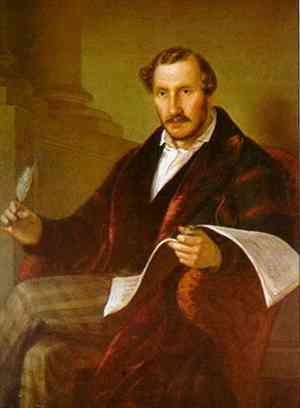 Gaetano Donizetti Painting: Giuseppe Rillosi Source: Wikipedia |
|
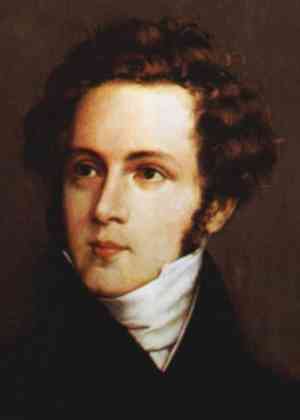 Vincenzo Bellini Source: Utah Symphony |
Born on 3
November
1801 in Catania, Sicily,
Vincenzo Bellini
could sing an aria at eighteen months, studied music theory at age two,
played piano at age three and began composing at age six, according to one
dubitable anonymous hand-written source. Bellini was, however, composing by
age fifteen, including nine 'Versetti da cantarsi il Venerdi Santo' produced
in 1816. Well to set the stage w a little of the zeitgeist into which
Bellini was born. British colonies had fought the
American Revolution
from 1775 to '83, the Declaration of Independence signed by Congress on 4 July, 1776. In 1800 the capital in Philadelphia would be moved to Washington
in what became the District of Columbia in 1801. The Library of Congress was
founded in 1800 as well. Things fell together in the United States in such a
way that its growth in the century to come could well seem manifest destiny.
Turmoil in France saw to the Louisiana Purchase in 1803, nearly doubling its
size of U.S. possession in America, requiring the expedition of Louis and Clark in 1804-05 to explore it
from St. Louis to unclaimed territories beyond at the Pacific shore. In the
meantime,
George III was King of Ireland and Great Britain from 1760 to
1801 when he became King of Ireland and the United Kingdom upon the merging
of England and Scotland. It would take some time for Americans to arrive to
some of the miseries common in Europe, such as the hell into which London
had long been developing where crime, malnutrition and poor sanitation meant
the death by age two of nearly every other child. One writes in histories of
such as monarchs, the poor being as mute as they live. In Germany, however,
1 April 1777 saw the Leipzig premiere of
Friedrich Maximilian Klinger's play,
'Sturm und Drang' ('Storm and Stress'). Expressive of a movement that had been
developing for several years, though the movement itself would soon pass it
was spark enough to help kindle the Romantic period. Of good breeding the
Enlightenment held the door
open for passion to burst in. Largely the brainchild of philosopher, Johann
Georg Hamann, Sturm und Drang [1,
2,
3] was an inevitable dialectic
aroused of the Enlightenment that coincided w the Classical period. Juxtaposed to rationality and reason in a pleasant world of
logic and perfect manners came address of the subjective and emotional. In
1798 the practical philosopher, Immanuel Kant,
thought it needful to examine the bodily
temperaments of Galen
(b 129 AD) in a psychological perspective in 'Anthropology from a Pragmatic
Point of View'.
Georg Hegel published
'Phenomenology of Spirit' [*]
in 1807 in which he described the dialectical process of thesis and
antithesis arriving to synthesis, an idealistic theory applicable to
agitations like revolutions and w parallels from Tao to what happens to the
development of humankind or only a campfire story without differences or conflict between
one and an other. The Romantic period flared
up in tempestuous times in departure from the classical world of Mozart now
viewed (not Mozart but that world) as so much matching of furniture and
proper table settings become staid in polite society where "Nothing bad ever
happens to me" (Oingo Boing). Thus nothing happened . . .
until revolution everywhere. The French Revolution had run its course from
1789 to the establishment of the five-member Directory and a bicameral legislature in
1899, yet to which Napoleon [1,
2,
3] put an end when he declared himself Emperor on
18 May of 1804. The French Revolution of anti-monarchical sentiment was
further dampened after Napoleon's defeat at Waterloo when Bourbon,
Louis
XVIII, was made King of France and dissolved an experimental parliament in
1816. Little Haiti in the Caribbean had declared its independence from France in 1804
after a revolutionary war since 1791 [*]. Neither England nor France the only,
the Spanish American Wars of Independence were just around corner as the
Americas underwent decolonization [1,
2]
from old New Spain. Argentina won independence from
Spain on July 9, 1816 [*].
Mexico followed on 27 Sep 1821 [*].
Brazil won independence
from Portugal the next year on 7 September 1822 [*],
followed by Bolivia on 6 August 1825 [*].
See also the Revolutions of 1848.
Revolutions from Spain differed from that of the United States, however,
insofar as they usually resulted in an exchange of one big monarchical power, Spain,
for smaller monarchical powers rather than the democratic federation that
George Washington
had denied the glories of becoming king to guide toward a republic. In the
meantime, already weary of Napoleon like Bellini's Italy, Bourbon Spain saw no relief upon the
Peninsular War of 1807 to 1814 against France [1,
2]. Bellini's life coincides
as well with the Italian Restoration
as of the Congress of Vienna [1,
2,
3] in 1814-15
during which the Bourbons were restored to Naples by the four major allies
against Napoleon that were Britain, Austria, Prussia and Russia. The Pope
meanwhile, was Pius VII the year Bellini was born, he the 251st over the
last nigh 1800 centuries. The Holy Roman Empire [*] that began w France in the
9th century to become its adversary and a German power dissolved in 1806.
Farther off on Bellini's globe, Catherine the Great of Russia had a stroke
while bathing in 1796 and died the next day. Her son, Paul I, would be
murdered in 1806 by his brother, Alexander. Though portions of Georgia were
incorporated into Russia during Paul's brief reign, he was a pacifist whom
Russian nobility deemed to be too interested in the welfare of the
peasantry to let around. The Russo-Turkish Wars that had begun between Ukrainian Cossacks
and Crimean Tatars in the 17th century continued into Bellini's lifetime,
the Ottoman Empire beginning to lose its grip upon Greek independence in
1829 [*],
the struggle in which poet, Lord Byron, had taken such an
interest. That was 34 years after the first daily newspaper in Istanbul was founded
in 1795 by French ambassador, Raymond de Verninac Saint-Maur. As for Bellini, he had been instructed in music by his grandfather until going
to Naples in 1818 to study at the Conservatorio di San Sebastiano. Upon
witnessing his first opera by Rossini, 'Semiramide' (1823),
Bellini thought it
pointless to attempt better music, then took the challenge, his first opera,
'Adelson e Salvini' [1,
2,
3,
4],
appearing on 12 Feb 1825 at his college theatre while yet a
student. His first commercially performed opera was 'Bianca e Gernando'
(originally titled 'Bianca e Fernando') at the Teatro di San Carlo on 30 May
1826 [1,
2; audio:
1,
2;
libretto]. It's said that King Francis
I of the Two Sicilies broke the custom of applause disallowed at
performances attended by royalty. The next year Bellini began basing himself
in Milan, producing 'Il Pirata' at the Teatro alla Scala on 27 Oct 1827
[1,
2,
3;
audio]. He visited Genoa in 1828 to
stage 'Bianca e Fernando', a rearrangement of 'Bianca e Gernando'
[autograph: 1,
2]. Bellini never
married, not wishing distraction from his work, but he did begin an affair
of several years while in Genoa with a married woman, one Giuditta Turina.
His opera, 'La Straniera' ('The Foreigner'), followed at the Teatro alla Scala in Milan on 14
Feb 1829 [1,
2,
3,
4].
The same year he went to Parma to stage 'Zaira' at the Nuovo Teatro Ducale, now the Teatro Regio
di Parma, on 16 May 1829 [1,
2;
audio]. The next year he went to Venice to produce 'I Capuleti e i Montecchi'
at the Teatro La Fenice on 11 March 1830 [1,
2,
3].
He returned to Milan for 'La Sonnambula' at the Teatro Carcano on 6 March
of 1831 [1,
2,
3;
audio:
1,
2].
Come 'Norma' on 26 Dec 1831 at La Scala, that containing his aria,
'Casta Diva' ['Norma': 1,
2,
3,
4; audio:
1,
2;
'Casta Diva': 1,
2,
3]. Bellini worked again in Venice in 1833, staging 'Beatrice di
Tenda' at La Fenice on 16 March [1,
2;
audio].
Bellini then journeyed to London to perform a few operas at the King's Theatre,
also attending productions by
Rossini, Maria Malibran,
Felix Mendelssohn and Nicolo Paganini
who were in England at the time. Arriving in Paris in 1833, Bellini there performed his last opera, 'I Puritani', on 24 Jan 1835
[1,
2,
3,
4;
audio].
Bellini was yet another composer whom some or other illness claimed young,
dying on 23 September of '35 not yet 34 years old. The doctor who did his autopsy thought he died of
dysentery.
Other than
Gaetano Donizetti, Bellini's main rival in Italian opera,
of which he premiered eleven, was
Rossini,
whom he greatly esteemed and in whose shadow his career was pursued. It was
Rossini
who handled his funeral and estate upon Bellini's death, and arranged the
erection of a monument at Bellini's grave.
References: 1,
2,
3.
Compositions: 1,
2;
operas (en español).
Editions & scores:
1,
2,
3,
4,
5,
6.
Sheet music:
choral works.
Libtretti (на русском).
Audio: 1,
2,
3,
4,
5,
6;
cylinder.
Recordings of: discos; 1,
2,
3,
4,
5,
6;
'Adelson e Salvini' by the BBC S & O w Daniele Rustioni:
1,
2;
'Bianca e Gernando' by the Camerata Bach Choir & Virtuosi Brunensis w Antonio Fogliani:
1,
2;
'I Capuleti e i Montecchi' by the John Alldis Choir & the New Philharmonia Orchestra w Giuseppe Patanè
*;
'La Straniera' by the Geoffrey Mitchell Choir & London Philharmonic Orchestra w David Parry
*.
Usage in modern media.
Further reading: Tchaikovsky Research.
Bellini's correspondences with
his friend since college, Francesco Florimo [1,
2],
a Conservatory librarian, are a key source of information as to some of the
frustrations a composer and/or performer of opera could face. Florimo also published 'Vincenzo Bellini:
Biografia ed Aneddoti' in 1883 [*].
Other biblio: 'Opera and Absolutism in Restoration Italy' by John A. Davis 'Journal of Interdisciplinary History 2006)
*;
'The Life of Bellini' by John Rosselli (Cambridge U Press 1996)
*;
'Vincenzo Bellini: A Guide to Research' by Stephen Ace Willier (Psychology Press 2002)
*.
Other profiles: Deutsch;
English: 1,
2,
3;
Francais;
Italian: 1,
2,
3,
4;
Treccani: 1,
2,
3;
Norwegian;
Russian: 1,
2;
Spanish.
Vincenzo Bellini 1830 Orchestra et Chorus of the Opéra de Lyon Evelino Pidò Giulietta: Anna Caterina Antonacci Romeo: Olga Peretyatko 1831 Director: Mario Pontiggia Conductor: Fabrizio Maria Carminati Soprano: Dimitra Theodossiu 1835 New Philharmonia Orchestra / Eve Queler 1831 Teatro del Opera di Roma / Francesco Lanzillotta |
|
| Born near
Grenoble, France, on 11 Dec 1803,
Hector Berlioz
is the first French composer to enter these histories since
Louis-Claude Daquin a century
earlier. But he made up for it as an alien noisemaker not only to Germans
and Italians who thought they owned music, but to the French themselves. He
was "out there" enough to be highly popular in Russia, way out there,
indeed, for the times w Moscow about 1500 nautical miles from Paris. Paris had been the battleground and, in a manner, summary critic of
European music, especially opera, for some decades. Paris was where it was
much decided whether opera would go the way German composers had been
inventing it or continue along the Italian vein. But that was all imported
music, out which fray Paris finally produced a hugely talented composer of
its own in Berlioz, though it didn't lay out a carpet. Berlioz' father,
Louis, was a physician and scholar, thought to have been the first European
to examine Chinese acupuncture. Berlioz didn't begin to study music until
age 12, though writing compositions from the start (chamber pieces and
romances), and was nigh completely self-taught. He never learned to play
piano (not the easiest instrument to come by), though he did learn the
flageolet, flute and guitar. After high school Berlioz studied medicine, for
which had small taste. He published his first article as a music critic in
1823, quit medicine the next year, then saw the first public performance of
one of his compositions, 'Messe solennelle', on 10 July 1825
[1,
2,
3,
4;
audio]. He later destroyed
it, but a copy was discovered in 1991 [1,
2]. He completed his initial opera
in 1826, though it went unperformed. Not until 1826 did he seek instruction
at the Paris Conservatoire, the degree to which composition had developed since long before
Berlioz' time making that fairly requisite. After several attempts to claim
the Prix de Rome scholarship Berlioz finally won it w 'La Mort de
Sardanapale' in 1830 [*;
audio]. It was around that time that
he put the French national anthem that
had arrived in 1795, 'La Marseillaise', to a new arrangement
[*].
He gained even better traction the same year upon premiering 'Symphonie Fantastique' Op 14 on 5 December 1830
[1,
2,
3,
4,
5,
6,
7,
8,
9,
10;
audio: 1,
2,
3,
4;
score]. Though conducted at the Paris Conservatoire by François Habeneck it was dedicated to the ruler of a far-off land, Nicholas I of Russia.
Franz Liszt
applied the theme of 'Symphonie Fantastique' to solo piano in 1833 per
'L'Idée
Fixe' S 470a/1. It was also near that time that Berlioz' presentation of his overture to
Shakespeare's 'The Tempest' at the Paris
Opera got rained out, but
Liszt was in attendance, resulting in a long friendship. In December 1831 he left for Rome to study at the
Paris Academy, the Conservatoire requiring three years of study in Italy. (AllMusic
has that as five years at the time, of which Berlioz was deemed to have
satisfied the requirement in a year and a half.) Berlioz wasn't long in Rome
before receiving a correspondence from the mother of his fiancée, informing
him that she was to marry a piano merchant. His first return to Paris was
with intent to murder all three, concerning which, howsoever suiting the
romantic spirit of the times, he changed his mind and returned to Rome.
After traveling a bit in Italy Berlioz returned to Paris in 1832 where he
premiered 'Lélio, ou le retour à la vie' H 55, sequel to 'Symphonie Fantastique', on 9 Dec that year at the
Conservatoire [1,
2,
3,
4;
libretto]. That later saw revision in '55. Berlioz married a woman with whom he
didn't get along in 1833, then composed 'Harold en Italie', commissioned by composer and
virtuosic violinist, Niccolò Paganini, in 1834 [1,
2,
3,
4,
5,
6,
7;
audio]. Inspiration drawn from Lord Byron's 'Childe Harold', 'Harold' premiered on 23 Nov without Paganini in
attendance. Though successful enough, Berlioz began conducting his own works
after what he felt was a wanting performance by the Orchestre de la Société
des Concerts du Conservatoire w Narcisse Girard conducting. Paganini didn't
like the score and rejected it until hearing it conducted by Berlioz four
years later on 16 Dec 1838, an occasion Berlioz notes in one of his
autobiographies, as after its performance (not by Paganini) Paganini brought
Berlioz on stage, had his son speak a few nice words, then knelt himself to
kiss Berloz' hands, overwhelmed by what Berlioz had put into the piece. He
then paid Berlioz 20,000 francs for a work that he himself never performed, broadly in the vicinity of $260,000 today. A little later
Liszt put 'Harold in Italy' to piano and viola in 1836 per
S 472. Berlioz found Paganini's generosity shocking, though not fatally so. He paid
off his debts, ceased writing music criticism as his bread and butter through
the years and dove into composing, resulting in his initial opera, 'Benvenuto Cellini'
H 76, performed at the Salle Le Peletier on 10 September 1838
[1,
2,
3,
4,
5,
6,
7; audio:
1,
2].
Come another work after Shakespeare, Berlioz' dramatic symphony, 'Roméo et Juliette', first performed
on 24 November 1839 [1,
2,
3,
4,
5,
6,
7,
8,
9,
10;
audio: 1,
2,
3,
4].
As Berlioz didn't play piano there is little of such in his work
[*]. In 1841 he
composed some rare pieces for piano and voice among his lesser-known works
titled 'Les Nuits d'Eté' ('Summer Nights') Op 7 H 81
[1,
2,
3,
4,
5,
6;
audio;
scores;
libretti: 1,
2,
3,
4].
That was a song cycle of six dedicated to composer, Louise Bertin
('La Esmeralda' '36,
highlighted here as the first female composer to emerge in these histories since
Hildegard of Bingen seven centuries ago in
Germany: see references for female composers following Berlioz below).
Berlioz later orchestrated 'Summer Nights' in '56. In 1842 Berlioz decided to tour Germany. His 'Treatise on
Instrumentation and Orchestration' appeared in 1843-44 in which he addressed the use of numerous instruments from
piano to
timpani to
viola
[1,
2,
3,
4,
5,
6,
7,
8].
Berlioz composed and published three further works little known since for
keyboard in November of '44, those [1,
2] for the melodium-organ
[melodeon: 1,
2,
3,
4] titled 'Rustic
Serenade' H 98 [1,
2],
'Toccate' H 99 [*] and
'Hymne for the Elevation' H 100 [scores: 1,
2,
3,
4]. The first performance of 'La
Damnation de Faust' in reference to Goethe arrived at the Opéra-Comique on 6
December 1846 [1,
2,
3,
4].
Unfortunately its failure left him in debt to
the tune of five to six thousand francs, which he solved by his first visit
to Russia in 1847, he considerably more popular there than in France.
Berlioz visited London the same year. He accepted the position of a
librarian at the Paris Conservatoire in 1850, the same year he wrote a piece for organ called
'Shepherd's Farewell' [score]
which he revised into a choral work to experiment with music critics. He gave one
performance in his own name and another under an assumed name. Upon critics
preferring the performance of the assumed to the actual he scored a point,
pun accidental [*].
Berlioz gradually expanded 'Shepard's Farewell' into his oratorio of
1854, 'L'Enfance du Christ' Op 25 H 130 [1,
2,
3,
4;
audio;
libretto. His heavyweight setting to the 'Te Deum' arrived
in Paris on 30 April 1855, having composed it earlier in '49
[1,
2,
3,
4;
5;
audio].
'Béatrice et Bénédict' saw performance in Baden-Baden, Germany, on 29 August
1862 [1,
2,
3,
4;
5; audio:
1,
2].
The version of 'Les Troyens' ('The Trojans') that appeared at the
Théâtre de la Ville in Paris on 4 November 1863 had to be performed minus its first two parts.
Not until 1890 would Felix Mottl perform the complete work of all five acts
[1,
2,
3,
4;
5,
6,
7,
8].
Though Berlioz' last article for the newspaper, 'Journal des Débats' [1,
2,
3], had
appeared on 8 Oct 1863, he continued to write, publishing 'Memoires' in 1865
[1,
2,
3,
4].
The next year he visited Vienna to stage 'La Damnation de Faust'. In 1867
Berlioz toured Russia to much fanfare a second time, the trip so profitable
that he rejected an offer of 100,000 francs to take his music across the
ocean to New York. As well, New York was about twice the distance and would
take about a month to sail. By comparison, his 1847 trip from Paris to
Moscow took a couple of weeks, first to Berlin by rail, then with greater difficulty
by stagecoach, the last four days through snow by sledge
[*]. Be as
may, Berlioz' health had begun to become severely
troublesome by the time of his last trip to Russia. He died in Paris not
long later on 8 March of 1869. His last words were
reportedly, "At last, they are going to play my music." Though Berlioz
experienced difficulties getting his music performed during his lifetime, he was nigh as
influential thereafter as
Beethoven
had been to him. Among unmentioned authors from whom he drew material were
Thomas De Quincey and Virgil. He composed
several books in addition to songs and music for chamber, chorus and
orchestra. References for Berlioz: 1,
2,
3.
Chronologies: 1,
2,
3,
4.
Compositions: 1,
2,
3,
4,
5,
6,
7;
chronological; en
Francais;
H number;
operas;
Op number;
sacred & choral.
Authorship: 1,
2,
3,
4,
5,
6,
7;
autobiographical: 1832,
1848-65;
'Critical Study of the Symphonies of Beethoven':
English,
French;
'Grand Traité d’Instrumentation et d’Orchestration Modernes' (1843-44/55):
1,
2.
Editions & scores: 1,
2,
3,
4,
5,
6,
7.
Sheet music:
choral works.
Libretti: 1,
2,
3;
songs.
Audio: 1,
2,
3,
4,
5,
6,
7;
cylinder;
MIDI;
YouTube.
Recordings of: discos: 1,
2,
3,
4,
5,
6,
7,
8;
visual media;
'Les Nuits d'Eté' (1856) by the Scottish Chamber Orchestra w Robin Ticciati
*;
'Roméo et Juliette' Op 17 by the San Francisco Symphony C & S w Michael Tilson Thomas
*;
'Symphonie Fantastique' Op 14 by the CSR Symphony Orchestra w Pinchas Steinberg
*,
review;
'Te Deum' by the Voices of Ascension C & O w Dennis Keene
*
'Te Deum' by the Orchestre de Paris w John Nelson
*.
Further reading by source: ANHB (Association Nationale Hector Berlioz); Michel Austin & Monir Tayeb:
English,
Francais;
interview w David Cairns by Tom Huizenga;
CLASSIC fM.
Further reading by topic: composers on Berlioz;
contemporaries;
the melodeon organ (melodium):
1,
2,
3;
Paris and;
use of the timpani;
travels.
Other profiles: Deutsch;
English: 1,
2,
3,
4,
5,
6,
7,
8,
9; Francais: 1,
2;
Italiano;
Norwegian.
Bibliographies: 1,
2,
3,
4,
5.
See also: Festival Berlioz (France);
the Hector Berlioz Museum (France);
the Hector Berlioz Society (UK).
References for female composers:
1,
2;
9th century (Kassia) to present: *; preceding Berlioz: *;
contemporary to & post Berlioz: *;
20th century to present: *.
H numbers below per Keith Holoman, 'New Berlioz Edition' [NBE] Vol 25 (1987). Opus numbers are
Berlioz 1859. Hector Berlioz 1845–46 H 111 Warsaw National Choir & Philharmonic Kazimierz Kord 1850 H 130 C & O of the French National Radio Jean Gitton/Jean Martinon 1837 H 75 Op 5 Dutch Philharmonic Orchestra Choir director: Boudewijn Jansen 1834 H 68 Philarmonia Orchestra/Sir Colin Davis 1841 H 81 Op 7 Song cycle Frankfurt Radio Symphony Orchestra/Lionel Bringuier Sopran: Véronique Gens 1839 H 79 Orchestre National de France/Daniele Gatti Théâtre des Champs-Elysées in Paris/2014 1830 H 48 Op 14 DuPage Symphony Orchestra Barbara Schubert |
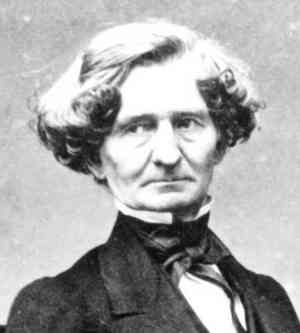 Hector Berlioz Source: Opiods | |
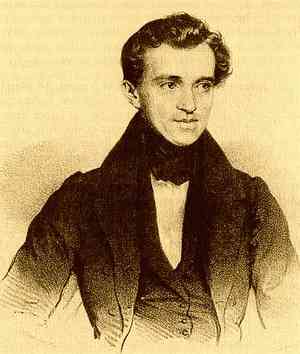 Johann Strauss I 1835 Lithograph: Josef Kriehuber Source: Wikipedia |
Born on 14 March 1804 in Leopoldstadt (now in Vienna),
Johann
Strauss I
(Senior, the Elder) wasn't the first to compose a waltz
[*] but is considered
the father of the Viennese waltz
[1,
2,
3]
as head of the Strauss musical dynasty
[1,
2,
3,
4,] that yet exists in
rock guitarist,
Nita Strauss.
Among his contemporaries his greatest rival in the waltz was
Joseph Lanner.
"Vienna without Strauss is like Austria without the Danube," or so considered
another of his contemporaries,
Hector Berlioz. Strauss lost both his parents by age twelve, thereupon placed
with his guardian, Anton Müller, a tailor who apprenticed him to bookbinder,
Johann Lichtscheidl, with whom he learned viola and violin. He also studied
music with Johann Polischansky. Upon completing his apprenticeship with
Lichtscheidl in 1822 he obtained his first professional position in the
orchestra of Michael Pamer before joining the Lanner Quartet also consisting
of Johann and Karl Drahanek to perform
Viennese waltzes and rustic German dances. That quartet expanded into a
small string orchestra in 1824. Proving popular at the 1824 Fasching, Lanner
made Strauss his deputy conductor. Fasching is Mardi Gras in Germany that
commences 11/11 each year at 11 in the morning [see
refs below]. Strauss began writing his own dance music upon
the formation of his own band in 1825, quickly becoming a favorite in
Vienna. He also married in 1825, resulting in six children. In 1834 he took
a mistress, resulting in seven to eight more. On a trip to France in 1837 he
heard a quadrille
(square dance usually performed by four couples), which he
introduced to Austria in 1840. He had made a highly successful trip to Great
Britain in 1838, performing at the coronation of Queen Victoria. Part of his
'Paris-Walzer' Op 101 of 1838 incorporated the French national anthem, 'La
Marseillaise'. AllMusic gives a date of 1845
for the fine expression of a waltz by Strauss that is 'Faschings-Possen' Op 175
[*;
audio: 1,
2].
Strauss crossed the channel again to considerable success in 1849 after his most famous
work, the 'Radetzky March', premiered on 31 August 1848 in Vienna
[audio: 1,
2].
Strauss, however, died young at only age 45 of scarlet fever on 25 Sep 1849.
He was buried in Vienna, having composed some 300 works. References for Strauss I: 1,
2,
3,
4.
Compositions:
1,
2.
Editions & scores: 1,
2,
3,
4,
5.
Audio: 1,
2,
3,
4,
5.
Recordings of: discos: 1,
2,
3,
4;
'Johann Strauss I Edition Vol.19' by the Slowaaks Sinfonietta w Zilina
Christian Pollack: 1,
2.
Images.
Other profiles: 1,
2,
3.
References for Fasching: history at Wikipedia:
1,
2;
current w historical information:
1,
2,
3,
4,
5,
6,
7,
8,
9,
10,
11,
12,
13.
Johann Strauss I Op 153 Quadrille Slovak Sinfonietta Zilina/ Christian Pollack 1831 Op 44 Slovak Sinfonietta Zilina Ernst Marzendorfer 1844 Op 163 Waltz Slovak Sinfonietta Zilina Christian Pollack Huldigung der Königin Victoria 'Homage to Queen Victoria'1838 Op 103 Waltz London Symphony Orchestra John Georgiadis 1843 Op 154 Waltz Willi Boskovsky/Wiener Philharmoniker Op 11 Waltz Slovak Sinfonietta Zilina Christian Pollack |
|
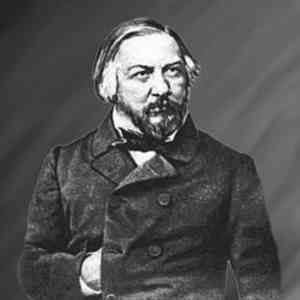 Mikhail Glinka Source: Stock Music |
The first
Russian composer to see these histories is
Mikhail Glinka.
He is generally considered the fountainhead of Russian classical music or,
to quote Tchaikovsky loosely, the acorn of the oak tree of Russian symphony. Born
on 1 June 1804 in what is now Smolensk Oblast on the eastern border of Poland,
Glinka's father was a wealthy captain retired from the army of the Tsar.
After his grandmother died he received his care and education, including
piano and violin, from a brainy governess who taught him languages as well.
At 13 he was sent to a school for the nobility in Saint Petersburg, where he
began to compose before graduating and and taking his first employment in
1824 as an assistant secretary in the Tsar's Department of Public
Highways. In 1830 Glinka made the long journey from Russia to Italy to study
at the Milan Conservatory. In 1833 he composed 'Motif de chant national' for
piano, perhaps per an unidentified national anthem contest, later retitled
'The Patriotic Song' ('Patrioticheskaya Pesnya') in 1944. That became the
Russian national anthem from 1991 to 2000
[1,
2,
3;
audio], succeeded since then by the
'State Anthem of the Russian Federation'
[*], a retitling of the 'State Anthem
of the Soviet Union' [*] as of 1944 w music by Alexander Alexandrov and text by
Sergey Mikhalkov. Upon Glinka's return to the homeland in 1833 he studied
for several months with music theorist, Siegfried Dehn, in Berlin. On 9 Dec
1836 Glinka staged his first opera, 'A Life for the Tsar' (aka 'Ivan Susanin'), at the
Bolshoi Kamenny Theatre in Saint Petersburg
[1,
2,
3,
4,
5;
audio]. That containing the song, 'Slav'sya'
[1,
2],
he was rewarded with 4000 rubles by the Tsar Nicholas I and made instructor
at the Imperial Chapel Choir in St. Petersburg the next year. (He was to be
paid lodging and 25,000 rubles per annum. The 'Like Forex' website places
the value of one ruble at $30.50 in 1830. Adjusted for inflation, one dollar
in 1830 equals 13.75 of them today.) It might be pinning a tail to a donkey,
but Wikipedia seems to show Glinka setting the 'Cherubic Hymn' to music per
Op 31 No. 11 in 1837, otherwise spelled 'Heruvimskaya Pesn'' and
'Херувимскaя пeснь' [audio;
score].
The 'Cherubic Hymn'
entered the liturgy of the Eastern Orthodox Church in Byzantium in the 6th
century and has seen versions by numerous Russian composers.
Glinka completed the first of three versions of 'Waltz Fantasia' in 1839
[1,
2;
audio]. His next opera, 'Ruslan
and Lyudmila', was staged on 27 Nov 1842 at the Bolshoi Kamenny Theatre in
Saint Petersburg [1,
2;
audio:
1,
2,
3,
4;
scores: 1,
2]. Though
that excelled his prior opera it wasn't greatly popular, so he took off for
Paris where he worked with
Hector Berlioz in '44 and '45
[*].
He then headed for Spain where he spent a couple years, meanwhile
writing 'Spanish Overture No. 1'. He was in Warsaw in 1848 when he
orchestrated 'Kamarinskaya'
after the Russian folk dance by the same name
[1,
2;
audio;
see also Russian folk dance]. In 1856 Glinka went to Berlin where he died upon catching a cold
on 15 February 1857. During Glinka's time such as Poland and Spain yet
occupied fringe status to the hubs of classical music in Austria, Germany,
Italy, Bohemia (Prague), London and, especially, Paris. But Russia, rococo palaces
not withstanding, was nigh as frontier at the time as the United
States was foreign. It was a trip by coach or sledge in Russian snow where
there wasn't rail at major hubs such as between Berlin and Paris. Beyond
Berlin it was coach and horse again w a couple weeks to Moscow.
Thus Glinka's significance, Russia thereafter to produce a plump list of
Romantic and modern composers conspicuously among the greatest in music. Along with operas and orchestral works Glinka wrote for piano and
voice as well as chamber.
References: Wikipedia.
Compositions: in English: 1,
2,
3,
4;
in German;
in Russian: 1,
2.
Editions & scores: 1,
2,
3,
4,
5.
Audio: 1,
2,
3,
4,
5,
6;
cylinder.
Recordings of: Discographies: 1,
2,
3,
4,
5,
6;
'A Life for the Tsar' by the C&O of the Bolshoy Theatre w Alexander Melik-Pashayev & Vasili Nebolsin
*,
review;
'Orchestral Works' by the USSR Symphony Orchestra w Evgeni Svetlanov
*.
Further reading: Spanish overtures;
Tchaikovsky and;
Turgenev and.
Biblio: *;
'Mikhail Glinka; a biographical and critical study' by David Brown (Oxford U Press 1973)
*;
'Music in the Nineteenth Century: The Oxford History of Western Music' by Richard Taruskin (Oxford U Press 2006)
*.
Other profiles: English: 1,
2,
3,
4,
5,
6,
7,
8;
French;
Russian: 1,
2,
3,
4,
5,
6,
7,
8.
Mikhail Glinka 1832 E flat major Soloists Ensemble/Mikhail Pletnev 1834–1836 Opera Bolshoi Theatre Moscow 1837–42 Opera Kirov Opera & Orchestra/Valery Gergiev 1832 A flat majorDLa Sonnambulao Variation from Bellini's 'La Sonnambula' Piano: Alexander Moglievsky 'Capriccio Brilliante on the Jota Aragonesa' 1845 USSR Symphony Orchestra/Yevgeni Svetlanov Symphony on Two Russian Themes 1834 D minorBBC Philharmonic Orchestra/Vassily Sinaisky Trio pathétique in D minor [Part 1] 1832 Cello: Natalia GutmanClarinet: Kari Kriikku Piano: Dmitri Vinnik Trio pathétique in D minor [Part 2] 1832 Cello: Natalia GutmanClarinet: Kari Kriikku Piano: Dmitri Vinnik |
|
| Born 3
Feb
1809 in Hamburg, though raised in Berlin,
Felix Mendelssohn
(Mendelssohn Bartholdy)
had a wealthy banker who had renounced Judaism for a father. Mendelssohn
thus eluded circumcision, though was baptized at age seven. His older sister
was composer Fanny Mendelssohn [1,
2,
3,
4,
5,
6,
7,
8; comps:
1,
2;
audio:
1,
2]. Mendelssohn studied piano
as a child, the prodigy also composing, numerous works in 1820
including the three-act comedy, 'Lustspiel in 3 Szenen'. He finished his first
singspiel, 'Die Soldatenliebschaft' ('The Soldier’s Love Affair'), the same year
[*; audio: 1,
2,
3]. His first meeting with Johann Goethe, a strong
influence, occurred in 1821. About age 13 he was composing string symphonies
well enough to perform them at salons held by his parents. His Op 1 No.1 is
'Piano Quartet in C minor' composed in 1822, published the next year
[1,
2;
audio]. In 1824 Mendelssohn completed his 'Symphony No. 1 in C minor' Op 11 [1,
2,
3;
audio].
Mendelssohn also studied under
Ignaz Moscheles
in '24, who later stated that there wasn't a lot that his pupil didn't
already know. Mendelssohn was sixteen years of age when he finished his
'Octet in E-flat major' for strings Op 20 in October of 1825
[1,
2,
3,
4,
5; audio:
1,
2;
score].
That didn't see a performance, however, until 30 January 1836. It was also '25 when Mendelssohn
had written a translation of
Terence's 'Andria'
for his tutor, Karl Wilhelm Ludwig Heyse,
which Heyse had published in 1826. That work gained Mendelssohn entry to
Humboldt University of Berlin in 1826 where he studied until 1829.
Mendelssohn's overture, 'A Midsummer Night’s Dream' Op 21 premiered on
27 February 1827 [1,
2].
His second 'A Midsummer Night’s Dream' was incidental music
catalogued as Op 61 performed fifteen years later in Potsdam on 14 October 1843
[*]. Though Mendelssohn had composed his seventh opera 'Die Hochzeit des Camacho' Op 10 in 1825 it
didn't premiere until 19 April 1827 at the Schauspielhaus in Berlin
[1,
2,
3;
audio: 1,
2;
score: 1,
2].
Not received well by critics, Mendelssohn completed
only one more opera, his one-act singspiel, 'Die Heimkehr aus der Fremde' ('Homecoming from Abroad', 'Return of the Stranger', 'Son and Stranger'),
first performed at his home on 26 December 1829
[1,
2,
3;
audio: 1,
2;
manuscript copy;
libretto by Karl Klingemann].
The first volume
of Mendelssohn's most famous work, 'Lieder ohne Worte'
('Songs without Words'), appeared in 1832
[1,
2;
scores: 1,
2]. Having begun to write
'Songs without Words' in 1829, it would eventually include 48 pieces in
eight volumes of six pieces each composed to 1845. The single
work titled 'Lied ohne Worte' ('Song without Words') Op 109 that was composed in 1845 for cellist,
Lisa
Cristiani, wasn't a part of the greater oeuvre of eight volumes and wasn't
published until after Mendelssohn's death
[1,
2;
audio;
score]. Mendelssohn had traveled to London
in 1829, then other points throughout Europe. He became musical director for the city of
Düsseldorf in 1833, then Leipzig the next year. 1840 saw him in Berlin
performing various musical tasks for King Frederick William IV of Prussia.
Mendelssohn founded the Leipzig Conservatory in 1843. Come 'Violin Concerto
in E minor' Op 64 in 1845 [1,
2,
3,
4,
5,
6,
7;
audio
1,
2]. In 1846 he made his
ninth of ten visits to England to premiere his oratorio, 'Elijah', at the
Birmingham City Hall
[1,
2,
3,
4,
5,
6,
7,
8;
audio;
libretto
(Elijah only)]. Mendelssohn left his final
opera, 'Loreley' Op 98 unfinished in 1847
[1,
2;
audio].
Lorelei is a mountain in Germany along the Rhine.
Mendelssohn's last visit
to England in '47 found him becoming ill, such that he died [1,
2] in
Leipzig on 4 November of 1847, yet another composer who lived but half an
average lifetime. Mendelssohn's compositions matched his virtuosic piano and organ
performances, but he had a nemesis in Richard
Wagner who believed his music to be "washy," "whimisical" and vague." The later
Nazi regime would purge itself of Mendelssohn, regarding him a "dangerous
accident" and "degenerate." He has otherwise been generally regarded as a
genius, his some 750 works containing not a few masterpieces. Mendelssohn
wrote largely choral and orchestral works, concertos, chamber pieces, songs
and solos for keyboard [*].
He is catalogued by opus numbers ascribed by him up to Op 72, by
others posthumously. MWV numbering is per the
Mendelssohn-Werkverzeichnis
of 2009. Mendelssohn was also a skilled watercolor painter
of landscapes. References: 1,
2,
3,
4,
5.
Chronologies: 1,
2.
Compositions: chronological;
in English: 1,
2;
in French;
in German;
by MWV;
by Opus;
MWV & Opus cross reference.
Editions & scores: alphabetic by title;
English: 1,
2,
3,
4,
5;
French: 1,
2;
German: 1,
2,
3,
4;
'Leipziger Ausgabe der Werke von Felix Mendelssohn Bartholdy'
*.
Sheet music: 1,
2,
3,
4,
5;
w audio: 1,
2,
3;
w MIDI downloads.
Texts to lieder und choral works: 1,
2.
Audio: 1,
2,
3,
4,
5,
6;
BBC: 1,
2;
cylinder;
MIDI downloads;
на русском.
Discos: 1,
2,
3,
4.
Further reading by source: CLASSIC fM;
by topic: contemporaries;
culture and Mendelssohn;
family;
as a Jew: 1,
2;
letters;
Leipzig Gewandhaus Orchestra;
'A Midsummer Night’s Dream': 1,
2;
operas;
personality;
religion;
sacred works.
Images:
autographs.
Bibliography: *;
death of: 1,
2,
3,
4;
letters of: 1,
2,
3,
4;
'Mendelssohn' by William Smith Rockstro (Cambridge U Press 2013);
books by Benedict Taylor: 1,
2;
books by Peter Mercer-Taylor:
1,
2;
books by R. Larry Todd:
1,
2,
3,
4,
5.
Other profiles: English: 1,
2,
3,
4,
5,
6,
7,
8,
9,
10,
11;
Estonian;
Finnish;
German;
Russian: 1,
2;
Spanish: 1,
2.
See also: Leeds University Library (collections: letters to Moscheles)
*;
The Mendelssohn Project
*;
The Mendelssohn Society Germany
*;
The Mendelssohn Society Switzerland
*;
Staatsbibliothek zu Berlin (collections)
*;
University of Music and Theatre Leipzig founded by Mendelssohn:
1,
2. Mendelssohn's first piano trio is listed under
Arthur Rubinstein in Early Modern.
Felix Mendelssohn 1846 Revised 1847 Op 70 Sacred oratorio Choeur de Radio France Orchestre National de France Conductor: Daniele Gatti Soprano: Lucy Crowe 1830 Op 26 Overture San Francisco Conservatory of Music Orchestra Scott Sandmeier 1822 Concerto in A minor Franz Liszt Chamber Orchestra/Janos Rolla Piano: Cyprien Katsarsis Prelude: 1832 Fugue 1832-37 Op 35:1 Piano: Rudolf Serkin 1829-45 Piano: Rena Kyriakou 'Scottish Symphony' 1841-42 Op 56 Chamber Orchestra of Europe 'Italian Symphony' 1841-42 Op 56 La Scala Philarmonic/Gustavo Dudamel 1845 Op 64 Violin: Julia Fischer |
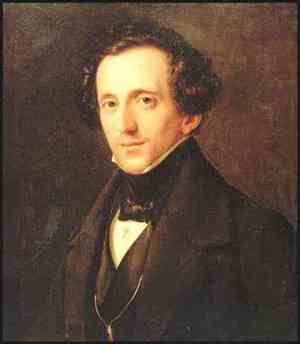 Felix Mendelssohn Source: All Music |
|
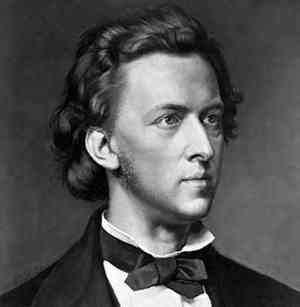 Frederic Chopin Source: Quien |
Born on 1
March 1810 in Żelazowa Wola, Duchy of Warsaw,
Frédéric Chopin
is the first Polish composer to enter into these histories of classical
music, though his father was French.
Antonio Cartellieri (above) was born in
Poland, but his parents were Italian and Latvian. As a Pole, had he been born a century earlier under
Frederick II of Prussia,
also a composer, he might well have lived a more obscure life, Fred owning
no love for Poles. Nor was Chopin the king or warrior that had been
Frederick. Born a couple generations after
Beethoven, Chopin is what happened upon
order restored to France after the French Revolution (1789-99) and
Napoleon's permanent fall in 1815. Chopin is catalogued by
both Op and "B" (or "BI") numbering schemes, the latter per
Maurice Brown
in 'Chopin: An Index of His Works in Chronological Order' (1960/72). Chopin
himself ascribed opus numbers up to 65, others added shortly after his death per
Julian Fontana by request of Chopin's family. See also the annotating "KK" directory by
Krystyna Kobylańska in 1979 and
MusicBrainz. As
Chopin's father was a tutor to Polish aristocrats, he studied under pianist,
Wojciech Żywny, from 1816
to 1823, giving his first concert at age seven. Among his earliest known
compositions were a couple polonaises as of 1817 [age seven
*]. The first
was 'Polonaise in G minor' B 1 [IMSLP;
audio;
score]
likely followed by 'Polonaise in B-flat major' [1,
2;
audio].
Also grouped w those is the earliest surviving
manuscript by Chopin that is 'Polonaise in A flat major' B 5 in 1821
[*]. From
1823 to '26 he studied at the Warsaw Lyceum, concentrating on organ, then
theory, figured bass and composition at the Warsaw Conservatory from 1826 to
'29. His performance for Tsar Alexander I who was visiting Warsaw in 1825
earned him a diamond ring. Chopin's first published composition arrived in
1825, 'Rondo' Op 1 [1,
2;
audio;
scores: 1,
2].
That was dedicated to Madame de Linde, wife of Samuel
Bogumil von Linde, rector of the Lyceum at which Chopin was studying. He first visited Berlin in 1828. His debut performance
upon graduating from the conservatory was in 1829: 'Variations on Là ci
darem la mano' Op 2 (from Mozart's
'Don Giovanni'). Come 'Piano Concerto No.1 in E minor' Op 11 in 1830
[1,
2,
3,
4,
5;
audio: 1,
2]. Much as Chopin was endeared to Poland, he left for Paris in
1831 and never returned. Warsaw was in no way comparable to Paris as Europe's
major musical hub. Chopin quickly became a part of the salon
circuit. His debut concert there was a huge success. But concerts were the
wrong venue for his delicate piano pieces. Thus to find a patron in the
Rothschild family to play salons was propitious. The Rothschild's first
became notable as patrons to European music with
Ignaz Moscheles,
during the twenties in England. Chopin dreaded all the trappings of giving
concerts and would later get away with only one a year if possible. He
preferred salons, preferably at his own apartment. In December of 1831 Chopin met
Franz Liszt
with whom he hung and worked for the next decade. In 1832 Chopin published
'Nocturnes' Op 9 [1,
2,]
dedicated to Camille Pleyel, two of a set of three of
which were 'No. 1 in B-flat minor' [*;
audio,
score] and
'No.2 in E-flat major' [*;
audio].
Come 1833 w a set of twelve studies in 'Etudes' Op 10
[1,
2,
3;
audio].
His 'Fantaisie-Impromptu' in C-sharp minor was composed for Madame la Baronne d'Este in 1834
[1,
2,
3;
audio;
score]. It was 1836 that his
famous affair with writer, George Sand, began. Meeting at the home of
Liszt, neither were initially attracted to the other. In 1837 Chopin journeyed to London to play at
a soiree. Upon returning to Paris he found himself in the company of Sand
with whom he left for Majorca (island some hundred miles east of Spain) in
1838, he and Sand's fifteen year-old daughter to convalesce, Sand herself to escape a
lover. Chopin was w Sand when he published a set of 24 preludes in
'Preludes' Op 28 [*;
audio: 1,
2],
one of which was No.4 in E minor [*;
audio].
It was '39 when he authored the two pieces in 'Op 37' for publishing the
next year [1,
2,
3; scores:
1;
2], one of which was
No.2 in G major [audio,
score].
'Fantasy in F minor' Op 49 was written and published in 1841
[1,
2,
3,
4;
audio]. His
'Heroic Polonaise' in A flat major Op 53 followed in '42
[1,
2,
3;
autograph;
score].
Chopin's frail health began to rapidly deteriorate that year, he hardly
able to move and in constant pain. His lullaby, 'Berceuse' Op 57, visited in
1844 in dedication to Mademoiselle Élise Gavard
[1,
2,
3,
4; audio:
1,
2;
score]. The
berceuse
is a type of lullaby. Chopin addressed the barcarolle, of Venetian traditional folk
origin sung by gondoliers, in 1845 for publishing the next year as 'Barcarolle in
F-sharp minor' Op 60 [1,
2,
3,
4;
audio;
score]. As Chopin progressively became more a
patient than a lover, his relationship with Sand was eventually severed in
1847. He gave his last concert in Paris before leaving for London during the
year of the
Revolutions of 1848.
He there played at Stafford House (now Lancaster House) for Queen Victoria
and Prince Albert. One item of interest is the prices Chopin charged. As a
conspicuous master too high for any to fault, he likewise requested high-end
fees. He figured an hour's worth of piano lessons worth a guinea. That's
only £1.05 or $1.61 in today's money. But it bought at minimum a hundred
dollars more. Chopin asked 20 guineas for a recital, at least $2000 of
purchasing power today. Chopin traveled to Scotland in the summer of 1848,
before returning to London to give his final concert at Guildhall in
November that year. By this time his weight had dropped to under 99 pounds.
If he wasn't sick before he was now. He nevertheless returned to Paris that
November and passed beyond on 17 October the following year. Like other
composers for whom it was the fashion to die early, the cause of Chopin's
death is unknown, though tuberculosis is the strongest contender. His
funeral attracted some three thousand people from about Europe, excluded
from attending for not having been invited. Chopin existed in the
stratosphere. Everybody knew it as they have ever since. A critic might
complain as to this or that about Beethoven. But Chopin's melodies and
virtuosic talent were simply inviolable. The dances that Chopin wrote were
mazurkas [lively Polish dances in triple time
*;
1,
2;
audio],
polonaises [slow Polish dances in triple time
*;
1,
2,
3;
audio],
waltzes [swirling dances in triple time *;
1,
2;
audio] and
other styles.
(Though irrelevant to Chopin, the Polish national anthem is also a mazurka.)
Chopin's piano pieces were
largely etudes [for practice *;
1,
2,
3;
audio],
improvisational impromptus
[audio],
nocturnes [short compositions generally thematic
of night *;
1,
2;
audio] and
improvisational preludes [*;
1,
2,
3;
audio]. Orchestral works include numerous
concertos
[audio]. Other
works for piano include
rondos
[audio]. Compare the instrumental
rondo to the earlier
poetic rondeau.
Chopin also composed piano for sonatas
[1,
2;
audio]. The
sonata
had arrived in the latter 17th century during the baroque period due largely to
Arcangelo Corelli.
Written for piano as well were Chopin's variations;
2]. He also composed
ballades [1,
2;
audio: 1,
2],
scherzos [originating in Italy *;
1,
2;
audio: 1,
2],
songs
[audio],
works for chamber
[audio] and
other forms.
See also audio of various forms and styles
less explored by Chopin. References: 1,
2,
3.
Chronology.
Compositions: 1,
3,
4;
by B (BI) number *;
by Op number: 1,
2;
by B & Op *;
auf Deutsch (BI);
en Francais;
by genre: 1,
2,
3;
w reviews;
w scores.
Editions & scores: English: 1,
2,
3,
4,
5;
Francais.
Sheet music: 1,
2,
3,
4.
Collections.
Audio: 1,
2,
3,
4,
5,
6,
7,
8;
nocturnes;
preludes;
русском.
Recordings of: discos: 1,
2,
3,
4,
5,
6,
7;
by pianist: 'Polonaises' w Vladimir Ashkenazy;
'Piano Concerto No. 1 - Four Ballades' w Seong-Jin Cho;
'The Complete Waltzes' w Stephen Hough;
'Chamber Music'
and 'The Great Polonaises' w Garrick Ohlsson.
Performances of Chopin on Broadway.
Usage in modern media: 1,
2.
Images: 1,
2,
3.
Further reading by source:
CLASSIC fM;
Frederic Chopin Institute;
Boris Pasternak;
Radio Chopin;
Tom Service.
Further reading by topic: analysis (Etudes);
childhood;
grand piano of 1848;
illness: 1,
2;
letters;
George Sand and: 1,
2,
3,
4.
Bibliography:
'Annotated Catalogue of Chopin's First Editions' by Christophe Grabowski & John Rink (Cambridge U 2010):
1,
2;
'Chopin in Paris' by Tad Szulc (Scribner 1998);
'Frederick Chopin: As a Man and Musician' Volumes 1 & 2 by Frederick Niecks (Novello 1890):
1,
2.
Other profiles: English: 1,
2,
3,
4,
5,
6,
7;
French: 1,
2;
Russian: 1,
2,
3;
Spanish.
See also global Chopin societies.
Mazurkas, nocturnes and the second piano concerto by Chopin are listed under
Arthur Rubinstein in
Early Modern. Frédéric Chopin 1835-42 Piano: Tzvi Erez Piano: Idil Biret Nos.1-19 of 21 Piano: Arthur Rubinstein 1830 Op 11 3 movements Philadelphia Orchestra Eugene Ormandy Piano: Emil Gilels 1829-30 Op 21 3 movements London Symphony Orchestra André Previn Piano: Arthur Rubinstein Polonaises 1-6 Piano: Vladimir Ashkenazy 1833-42 Piano: Arthur Rubinstein Nos.1-19 of 20 Piano: Zoltán Kocsis |
|
|
Born on 8 June 1810 in Zwickau, Kingdom of Saxony,
Robert
Schumann
had a bookseller, publisher and novelist for a father. Schumann began piano
instruction and wrote juvenile compositions at age seven. As he advanced he
invented the entertainment of doing comical portraits at the keyboard.
Schumann was also a writer, beginning to show promise as a teenager. In 1828
he entered law school in Leipzig, then in Heidelberg the next year,
necessary if he wished an inheritance from his mother (his father by then
deceased). He that year met
nine year-old Clara Wieck [1,
2,
3,
4,
5.
6]
upon her debut public performance at the Gewandhaus on 28 October 1828. He
then dropped law to live in the Wieck home for about a year while studying
under Clara's father, Friedrich Wieck.
Along the path of separate careers Clara and Robert would eventually marry
on 12 September 1840. Schumann's Op 1 is his 'Abegg Variations' written in 1829-30,
published later in Leipzig in November of '31 [1,
2;
audio;
score]. His
first written criticism was published in 1831, concerning Chopin,
whom he would compliment "a genius" a few years later. Schumann's Op 2 was program music,
his 'Papillons' also published sometime in 1831
[1,
2,
3;
audio;
score],
a suite of 12 pieces referring to Jean Paul's novel, 'Die Flegeljahre'. Program music
[1,
2,
3] is
distinguished
from absolute music [1,
2,
3]
in that it is instrumental narrative
referenced to something extramusical, compared to absolute music composed
for its own sake. Schumann's Op 3 was a set of six caprices titled 'Etudes
after Paganini' [1,
2]. On
18 November 1832 the first
movement of his incomplete 'Symphony in G minor' ('Zwickauer') was performed
at the Gewandhaus in Zwickau [1,
2,
3]. Thirteen year-old Clara performed piano at
the same concert, though in association w her father, Friedrich, not
Schumann's symphony which program fared not so well
[1,
2]. Schumann is
thought by some to have first attempted suicide the next year. The first
issue of his journal of musical criticism, 'Neue Zeitschrift für Musik', was
published in 1834 [1,
2]. Schumann concentrated on piano works until 1840 when
he composed 138 songs. What is catalogued as Schumann's 'Symphony No. 4' was
actually his second that premiered in Leipzig on 6 December of '41 as No. 2
at the time. The revised version premiered in Düsseldorf on 3 March of 1853
[1,
2,
3,
4,
5;
audio].
Schumann focused on chamber works in 1842, then became a professor at
Mendelssohn's
Conservatory of Music in 1843. Schumann had
small affection for Jews, but made
Mendelssohn
a guarded exception. He toured w Clara to Russia in 1844. His 'Symphony
No.2' Op 61 was in the works as of December of '45, premiering at the Gewandhaus in Leipzig on 5 Nov 1846, dedicated to Oscar I, King of Sweden
and Norway, upon its publishing in '47 [1,
2,
3,
4,
5,
6,
7;
audio: 1,
2].
On 29 August 1849
Franz Liszt
conducted portions of Schumann's 'Scenes from Goethe's Faust', an overture
in D minor begun in '42, dropped, then resumed again in '44 to see final completion in 1853
[1,
2,
3,
4,
5,
6,
7;
audio]. The complete work didn't see performance until 1862 several years after Schumann's death.
Schumann had been at work on his only opera, 'Genoveva', in 1844, eventually
premiering at the Stadttheater in Leipzig on 25 June 1850
[1,
2,
3,
4;
audio]. As that wasn't
well received he wouldn't write another. Before or after that the same year
Schumann published 'Advice to Young Musicians'
[1,
2,
3,
4].
'Symphony No.3' (the "Rhenish") in E-flat major Op 97 premiered on 6 Feb of 1851 in Düsseldorf
[1,
2,
3,
4,
5,
6;
audio: 1,
2].
Schumann met
Johannes Brahms who was age 20 in
1853, whom he considered a genius and with whom he became close friends.
'Geistervariationen' ('Ghost Variations') in E-flat major WoO 24 was composed in
February of '54 [1,
2;
audio]. (WoO:
Without Opus). That was Schumann's final work prior to attempting suicide
the same month by jumping from a bridge in Düsseldorf into the Rhine.
Rescued, Schumann asked for committal to an asylum. He died two and half
years later at age 46 at a sanitarium in Bonn on 29 July of 1856, forty
years before Clara's death in 1896. Though it isn't known what killed Schumann, it's generally thought to have been syphilis
exaggerated by mercury used at the time for a cure. Despite an early injury
to his right hand that prevented Schumann from playing piano as he'd have
liked, he was a highly regarded compositional master in his own time,
remaining so ever since.
References: 1,
2,
3.
Chronology.
Compositions: by genre:
1,
2;
by opus: 1,
2;
by title;
auf Deutsch;
en Francais;
на русском
Autographs.
Editions & scores: English:
1,
2,
3,
4,
5;
French: 1,
2;
German: 1,
2,
3,
4.
Sheet music: 1,
2,
3,
4.
Texts to lieder and choral works: Deutsch;
international.
Collections.
Audio: 1,
2,
3,
4,
5,
6,
7,
8,
9,
10;
cylinder;
YouTube.
Recordings of: discos 1,
2,
3,
4,
5,
6;
'The Complete Songs w Graham Johnson (piano)
*;
'Genoveva' by the Arnold Schoenberg Choir & Chamber Orchestra of Europe w Nikolaus Harnoncourt
*;
'Scenes from Goethe’s Faust' by the Chor des Städtischen Musikvereins zu Düsseldorf w Tölzer Knabenchor & the Düsseldorfer Symphoniker w Bernhard Klee
*;
'Symphony No. 3 'Rheinische'' by the Philharmonia Orchestra w Christian Thielemann
*.
Usage of Schumann in modern media.
Images.
Further reading by source:
Aigi Heero;
Galya Konstantinova;
the Schiller Instituttet;
the Schumann Network.
Further reading by topic: biography by Wilhelm Joseph von Wasielewski (Kuntze 1869);
madness
by Michelle Elizabeth Yael Braunschweig; the
timpani and;
War of the Romantics. Bibliography:
English:
German;
'Ghost Variations: The Strangest Detective Story in the History of Music' by
Jessica Duchen (Unbound Publishing 2016);
'Schumann: the inner voices of a musical genius' by Peter Ostwald (Northeastern U Press 1985).
Other profiles: English: 1,
2,
3,
4,
5,
6,
7,
8,
9;
French: 1,
2;
German: 1,
2,
3,
4;
Russian: 1,
2;
Spanish: 1,
2.
See also: the Art and Cultural Association 'Robert Schumann' (Kreischa);
Association Schumannhaus (Bonn);
the Robert Schumann Award (Zwickau);
the Robert Schuman International Competition (Zwickau);
the Robert Schumann Prize (Zwickau):
1,
2; the
Robert Schumann Society (Düsseldorf);
the Schumann-Haus museum (Leipzig). Robert Schumann Carnaval 1833-35 Op 9 21 pieces Arthur Rubinstein Tel Aviv 1966 1837 Op 6 18 character pieces Piano: Andras Schiff Davidsbündlertänze 1837 Op 6 18 character pieces Piano: Tiffany Poonu Dichterliebe 1840 Op 48 16 lieder (songs) Piano: Hubert Giesen Vocal: Fritz Wunderlich 1837 Op 12 8 sections Piano: Dora Bakopoulou 'Ghost Variations' 1864 6 movements Piano: Suguru Ito 1847-49 4 acts BBC Symphony Orchestra John Storgards 'Scenes from Childhood' 1838 Op 15 13 pieces Piano: Tiffany Poon 1838 Op 16 8 pieces Piano: Daria Burlak 1834 Op13 9 variations Piano: Alfred Brendel 1847 Op 63 4 movements Cello: Clive Greensmith Piano: Inna Faliks Violin: Movses Pogossian |
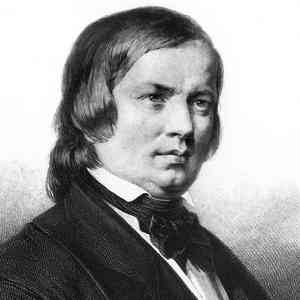 Robert Schumann Source: Tchaikovsky Research |
|
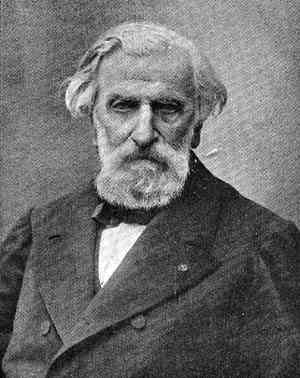 Ambroise Thomas Source: H Berlioz |
Born on 5 August 1811 in France,
Ambroise Thomas
had music teachers for parents. He studied piano and violin as a child
before entering the Paris Conservatoire in 1828. In 1832 his cantata,
'Hermann et Ketty', won the Prix de Rome to study in Italy at the
Villa Medeci for three years.
While in Rome he associated w
Hector Berlioz
and the French painter, Ingres, while writing chamber music along with a set
of six songs titled 'Souvenirs d'Italie'. After a trip to Germany he was
back in Paris again in 1836 to premiere
his first opera comique, 'La Double Echelle' ('The Double Scale'), on 23 August 1837, making him very popular
straight out of the box. The libretto had been written by
Eugène de Planard.
Thomas' fifth opera, 'Le Comte de Carmagnola' of 1841, featured a libretto by major dramatist,
Eugène
Scribe. Thomas premiered three more operas in Paris to nominal success before the big splash of 'Le Caid' ('The
Commander') on 3 Jan 1849 [1,
2,
3,
4]. That was the second w
libretto by
Thomas Sauvage,
their first having been 'Angélique et Médor' in 1843. Thomas would premiere
four more operas w librettos by Sauvage. 'Le songe d'une nuit d'été' ('A
Midsummer Night's Dream') premiered on 20 April 1850
[1,
2]. Though alluding to
Shakespeare's' play, Shakespeare is a character in the libretto by the team
of Joseph-Bernard Rosier and
Adolphe de Leuven. The latter
pair also wrote the
libretto for 'Raymond' of 1851. Rosier composed the text for 'La Cour de
Célimène' of 1855 [1,
2].
Thomas became a professor at the Paris Conservatoire on 1856.
The librettos of Thomas' most famous operas were authored by the partnership
of Jules Barbier and
Michel Carré. Their first was 'Psyché'
on 26 January 1857 [1,
2;
audio],
a second version to later premiere in 1878. Their next was 'Mignon' on 27
November 1866 [1,
2,
3,
4].
Inspired by Goethe's novel, 'Wilhelm Meister's
Apprenticeship', Thomas made his name throughout Europe and thereafter with
that. It's second version, translated into Italian by Giuseppe Zaffira, got
taken to London for performance at the Drury Lane Theatre on 5 July 1870.
The next opera by Thomas, Barbier and Carre was 'Hamlet' in Paris as usual
on 9 March 1868 [1,
2,
3,
4,
5;
6]. Thomas
assumed directorship of the Paris Conservatoire in 1871. 'Gille et Gillotin'
premiered on 22 April 1874 [1,
2,
3], that a revision of 'Gillotin et son père'
composed in 1859 w a libretto by Sauvage that never saw performance. Thomas'
final opera premiere was a second version of 'Le Songe d'une nuit d'été' ('A
Midsummer Night's Dream') first performed in 1850 (above). He died in
Paris on 12 Feb of
1896, having completed 24 operas along with such as a few ballets, numerous
pieces for solo organ and piano, vocal music sacred and secular, and orchestral works.
References: 1,
2.
Compositions:
by genre: 1,
2,
3;
operas: 1,
2.
Editions & scores: 1,
2,
3,
4.
Audio: 1,
2,
3,
4.
Discographies: 1,
2,
3,
4,
5.
Performances of on Broadway.
Usage in modern media.
Iconography: 1,
2.
Other profiles: English: 1,
2,
3,
4,
5,
6;
French: 1,
2;
Italian: 1,
2.
Ambroise Thomas 1868 Opera 5 acts Ambrosian Opera Chorus London London Philharmonic Orchestra Antonio De Almeida French: 1866 Italian: 1870 3 acts Opéra Royal de Wallonie-Liège Orchestre et Chœurs de l'Opéra Royal de Wallonie-Liège Mignon: Stéphanie d'Oustrac 1833 Op 1 Daniel String Quartet |
|
| Born on 22 Oct 1811 in Doborján (now Raiding),
Franz Liszt
is the first Hungarian (Magyarul) composer to find these histories of classical music.
His father, a musician, was employed in some capacity otherwise by Prince
Nikolaus II Esterházy.
The Esterházy dynasty had long been among the most
powerful in Europe, the family ever an influential patron to the arts. Liszt
began playing piano at seven and began scratching compositions at eight.
Performances at concerts at age nine resulted in financing of studies in
Vienna beneath Carl Czerny,
Ferdinando Paer
and Antonio Salieri.
His first performance in Vienna on 1 December 1822 at the Landständischer
Saal was naturally successful. His first published composition, 'Variation
on a Waltz by Diabelli' S 147, followed in 1824, appearing as No.24 of fifty
variations by various composers published in 'Vaterländischer Künstlerverein'
[1,
2;
audio;
scores]. Upon his father's death
in 1827 Liszt moved to Paris with his mother, where he began giving lessons
as he started to emphasize composing over performing. But it was upon
viewing a performance by violinist, Niccolò Paganini, in 1832 that he
intended to become a virtuoso. His aspirations were further fueled in 1833
upon beginning a relationship with Countess Marie d'Agoult. They would live
together for the next several years in Switzerland, Liszt teaching at the
Geneva Conservatory, and Italy. He also began contributing essays to the
'Revue et gazette musicale' [*] in Paris during that period. In 1839 Liszt began
a tour of Europe for several years that would begin to be called Lisztomania
(similar to Beatlemania) in 1844 by writer, Heinrich Heine. It would also
make Liszt so rich that by 1857, the year he became a Franciscan, he began to
simply forward his performance fees to charities, his a great heart as a
philanthropist. In 1847 Liszt toured not only the Balkans and Russia, but
Turkey, the first composer in these histories to introduce classical music
to that region south of the Black Sea. In 1842 he became Kapellmeister
Extraordinaire to Grand Duchess
Maria Pavlovna
of Russia in Weimar, where he kept for the next couple decades. Liszt began
work on his first of thirteen
symphonic poems in 1848, the third
version of which would see publishing in 1857 as 'Ce qu'on entend sur la
montagne' (S 95), based on Victor Hugo's 1831 poem of the same name
[1,
2,
3].
Liszt's symphonic poems were expansions of the overture, the last of which
would be published as 'Von der Wiege bis zum Grabe' ('From the Cradle to the
Grave') in 1883 [1,
2;
audio]. Liszt
published his three nocturnes, 'Liebesträume' ('Dreams of Love') S 541, in
1850 [*;
scores], the more famous of which was the third
(No.3), 'Oh Lieb, so lang du lieben
kannst' in A-flat major [audio;
score].
Preceded by a version written in 1849, Liszt published his 'Sonata in B
minor' dedicated to Robert Schumann in 1854
[1,
2,
3;
audio: 1,
2,
3]. Liszt's
'Piano Concerto No. 1' in E-flat major S 124 saw conducting by
Hector Berlioz
on 17 Feb 1855 in Weimar [1,
2,
3,
4;
audio: 1,
2]. He
himself conducted his 'Dante Symphony' at the Hoftheater in Dresden on 7 Nov 1857
[1,
2,
3,
4,
5,
6; audio:
1,
2,
3]. In
1861 Liszt left for Rome, intending to marry one Princess Carolyne, which
plan was foiled upon his arrival by Carolyne's husband or, prior husband,
which was the trouble. Liszt's 'Mephisto Waltz No. 1' S 514 saw publishing
in 1862 [1,
2,
3]. Having lost two of his children by 1862, Liszt
assumed a largely solitary existence but for ordination as a Franciscan
priest in 1865. In 1866 he composed the coronation ceremony, in Hungary, for
Franz Joseph I of Austria and Elizabeth of Bohemia. Liszt began teaching in
Weimar in 1869, in Budapest two years later, then was elected President of
the new Royal Academy in Budapest in 1875 [1,
2,
3].
Meanwhile making trips to Rome, Liszt's traveling is estimated at some four
thousand miles a year during that period. If continual travel wears out a
musician now, in Liszt's time even more so. A fall down a flight of stairs
in Weimar in 1881 marked Liszt's rapid decline in health, but he wasn't
finished yet. In 1883 he published his 'Mephisto Polka' S 217 based
on the 1836 drama, 'Faust', by Nikolaus Lenau
[1,
2;
audio;
score].
In 1885 he composed 'Bagatelle sans Tonalité' S 216a
[1,
2,
3;
audio]
which may have been
intended to replace his unfinished Fourth Mephisto Waltz S 696 also written
that year. That bagatelle premiering on 10 July of 1885 by his student, Hugo
Mansfeldt, is the earliest identifiable exploration of atonality
[1,
2,
3,
4,
5,
6]
by a major composer, finding Liszt the first musician in these histories to
be described as "avant-garde" in modern terms. The final of 19
Hungarian
Rhapsodies that is S 244 was published in 1886
[1,
2;
score],
the initial two of which had
been published back in 1851 upon Liszt beginning to write his first in 1846.
Liszt died in Bayreuth, Germany, on 31 July 1886 of
pneumonia. As a pianist, Liszt's only rival was his friend,
Chopin.
But Liszt was a concert pianist and
Chopin
a solon performer, meaning little rivalry at all, neither their turf nor
venues the same, though they had Paris in common, especially
Chopin.
Also differently than
Chopin,
Liszt gave lessons for free to an innumerable host of students throughout
the years while
Chopin
charged exclusive fees for only high-end clients. Along with much else he composed some six dozen songs with
piano. Liszt is among those composers who were Freemasons (beginning with
Frederick II),
joining in 1841. References:
1,
2,
3.
Chronologies: in French; in
German.
Compositions: Klassika: in English; in
German;
by genre: English: 1,
2;
Russian;
Hungarian;
Spanish: 1,
2;
S & LW cross reference: 1,
2.
Autographs: 1,
2,
3.
Editions & scores: English: 1,
2;
French;
German: 1,
2,
3.
Sheet music: 1,
2,
3,
4;
Russian;
w texts to lieder.
Collections.
Audio: 1,
2,
3,
4,
5,
6,
7,
8;
cylinder;
MIDI downloads: 1,
2.
Recordings of: discos: 1,
2,
3,
4,
5;
'The 19 Hungarian Rhapsodies' w piano by Roberto Szidon
*;
'The 19 Hungarian Rhapsodies' w piano by various
*;
'Eine Symphonie zu Dantes Divina Commedia' by the London Symphony Orchestra w Leon Botstein
*.
Performances of Liszt on Broadway.
Usage in modern media.
Iconography: 1,
2.
Further reading by source: English:
James Huneker;
Thomas May;
NPR;
Alan Walker;
German: Deutschen Liszt-Gesellschaft;
Pressemappe;
Hungarian: Alan Walker.
Further reading by topic: Liszt and atonal music
by Jung-Ah Kim;
childhood (Wikipedia French);
Letters of at Gutenberg: 1,
2;
Denstedt organ (Liszt Orgel);
piano music of
by Erik Helling;
'Psalm XVIII' of 1860 (Rena Charnin Mueller for the LOC);
Liszt and
Schubert's lieder
by Solee Lee Clark;
treatments of other composers (Wikipedia).
Bibliography:
English:
'Liszt's Experimental Idiom and Music of the Early Twentieth Century' by Allen Forte (19th-Century Music Vol.10 No.3 1987);
Grove Music Online (Maria Eckhardt, Rena Charnin Mueller & Alan Walker);
the 'New Liszt Edition' ('Franz Liszt Neue Ausgabe sämtlicher Werke') of 1970 onward: reviews:
Philip Friedheim;
Jay Rosenblatt;
'Franz Liszt: A Research and Information Guide' by Michael Saffle (Routledge 2009);
'The 'Liszt-Year' 1986 and Recent Liszt Research' by Michael Saffle (Acta Musicologica Vol.59 1987);
German: 1,
2;
correspondence w Louis Spohr.
Other profiles: English:
1,
2,
3,
4,
5,
6,
7,
8,
9,
10,
11,
12,
13,
14;
French;
German: 1,
2,
3,
4,
5,
6;
Hungarian: 1,
2,
3,
4;
Norwegian;
Russian: 1,
2,
3,
4,
5.
See also: the American Liszt Society;
Librivox (audio biography);
the Liszt Society Switzerand-Japan;
the Liszt Society (UK);
the University of Music Franz Liszt Weimar.
Liszt's famous first liebestraum is included below. His
third liebestraum and 'Sonata in B minor' are listed under
Arthur Rubinstein in
Early Modern.
S numbers below are per Humphrey Searle, 1954/1966, appended and revised in
2004 by Sharon Winklhofer. The LW numbering system by Maria Eckhardt, Rena
Charnin Mueller and Alan Walker is used by Grove Music Online
[1,
2].
Franz Liszt 1855-56 S 109 2 movements Berlin Philharmonic/Daniel Barenboim Études d'exécution transcendante 1851 S 139 12 piecesPiano: Claudio Arrau 1854 Revised 1857–61 & 1880 S 108 Chicago Symphony Orchestra and Chorus Sir Georg Solti Tenor: S. Jerusalem 1858 Symphonic Poem No 10 S 104 London Philharmonic Orchestra Bernard Haitink 1846-53 S 244:1-19 Piano: Edith Farnadi Liebestraum No.3 (Love Dream 3) 1850 S 541Piano: Khatia Buniatishvili 1856–61? S 514 Piano: Félix Ardanaz |
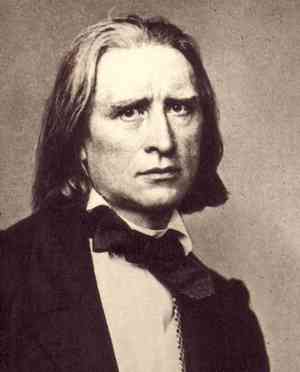 Franz Liszt 1858 Photo: Franz Hanfstaengl Source: Piano 4 Life |
|
|
Born on 14 Feb 1813 (Gregorian) in Belyovsky District of Russia,
Alexander Sergeyevich Dargomyzhsky
wasn't a major composer, but he maintained Russian presence in classical
music at Glinka's heels
until later Russian composers began flooding into the Romantic period.
Educated in St. Petersburg, it was 1833 when he met
Glinka, nine years his senior. In
addition to other works like songs, Dargomyzhsky composed a number of operas,
three for which he is best known:
'Esmeralda', 'Rusalka' and 'The Stone Guest'. 'Edmerelda, composed in 1839
after Victor Hugo's 1831 novel,
'Hunchback of Notre Dame', eventually premiered 1847. 'Rusalka',
after Alexander Pushkin's poem
by the same name, premiered in St. Petersburg
on 4 May 1856 [1,
2,
3,
4; audio:
1,
2;
libretto in Russian].
Dargomyzhsky's 'The Stone Guest', after Pushkin's play by the same name, was left incomplete upon his death in '69.
Finished by
Nikolai
Rimsky-Korsakov, that premiered posthumously in 1872
[1,
2,
3,
4,
audio;
score to overture.
Dargomyzhsky's fame in Europe was fairly
limited to Belgium in association with the
Mighty Handful
[see
Mily Balakirev] which
regarded him highly. He died on 17 January in St. Petersburg in 1869. Among
other works left incomplete was a setting to another of Pushkin's work's, 'Poltava'.
References: 1,
2,
3,
4.
Compositions: 1 (French),
2,
3,
4.
Editions.
Iconography.
Audio: 1,
2;
MP3;
YouTube: 1,
2.
Recordings of: discographies: 1,
2;
'Rusalka'
by the Cologne West German Radio C & O w Michail Jurowski.
Song texts: 1,
2.
HMR Project. . Alexander Dargomyzhsky 1839 Bolero USSR State Symphony Orchestra Yevgeny Svetlanov 1848-55 Opera 4 acts Grand Chorus All-Russian Radio & Television Moscow Radio Tchaikovsky SO Vladimir Fedoseyev Piano: Mstislav Rostropovich Soprano: Galina Vishnevskaya 1866-1869 Opera C & O of the Bolshoy Theatre Mark Ermler |
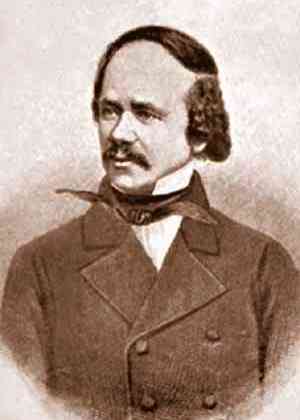 Alexander Dargomyzhsky Source: Wikinedia Commons |
|
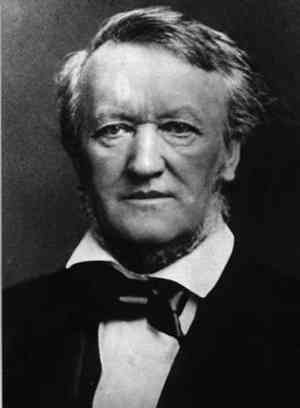 Richard Wagner Source: Muse Worthy |
Born on 22 May 1813 in Leipzig, Germany, at the
House of the Red and White Lion
[*],
Richard Wagner
was the ninth child of a police clerk. But his father died when he was six
months old so he was raised by actor, Ludwig Geyer, in relationship with his
mother. While yet a child Wagner played at least one minor role, an angel,
in theatre. In 1828 he completed the tragic play, 'Leubald und Adelaide' [1,
2,
3],
alarming his parents with scenes of murder and rape. The same year he began
instruction in harmony beneath Christian Müller. He wrote a piano
transcription of Beethoven's 'Symphony 9' that year as well [audio]. In 1831 he
transitioned to Leipzig University, also studying composition under Thomaskantor Weinlig. 1832 saw his 'Symphony in C major'
WWV 29 performed in
November by the student symphony of the Prague Conservatory before its
premiere on 15 December in Leipzig and its second performance ten days later
in Vencie [1,
2,
3;
audio].
"WWV" numbering is per the 'Wagner-Werk-Verzeichnis' of 1986 by John
Deathridge, Martin Geck and Egon Voss
[*]. Wagner composed his first opera, 'Die Feen'
WWV 32 in 1833, but it was never performed during his lifetime [1,
2,
3;
audio:
1,
2].
The libretto was by Wagner who is distinguished from other opera composers on this page by
writing his own texts. His second opera, 'Das Liebesverbot' saw the
stage on 29 March 1836 in Magdeburg [1,
2;
audio]. He married
on 24 November 1836, one Minna, an actress who would leave him for another
man the next year even though they remained married for nearly thirty years
until her death in 1866. So Wagner left for Riga, Russia
(now Latvia), yet a hinterland compared to Germany or Prague in 1837. He
there became an opera director while employing the talents of Minna's sister,
a vocalist named Amelia. He was back with Minna in Riga (now in Latvia) in
1838 where the pair assumed debts, then fled to London the same year. They
were in Paris in 1839 where Wagner wrote articles and arranged operas for other composers. Wagner
had been at work on 'Rienzi' prior to leaving for London. Completed in November of 1840, it premiered on
20 October 1842 in Dresden [1,
2,
3,
4,
5,
6;
audio: 1, ;
DVD].
'Der fliegende Holländer' ('The Flying Dutchman') was completed in November
1841 to premiere in Dresden on 2 January 1843 [*;
audio; libretto:
Deutsch,
English, w
score].
'Das Liebesmahl der Apostel' ('The Feast of Pentecost') WWV 69 was a
folkloric miracle play [1,
2,
3] performed on 6 July 1843
in Dresden [1,
2,
3,
4;
audio;
text].
'Tannhäuser und der Sängerkrieg auf Wartburg' arrived in Dresden on 19
October 1845 [1,
2,
3;
audio;
libretto w
score]. Wagner is the first socialist [1,
2,
3,
4,
5,
6]
composer to enter these histories. In 1849 he was among the revolutionaries
during the May Uprising in Dresden, thus fled to Paris, then Zurich
where in the latter part of the year he wrote his essay, 'The Art-Work of
the Future' [1,
2]
in which he pronounced the symphony brought to its ultimate expression by
Beethoven, thus calling for something beyond which he identified, in so many
words, as drama for the folk. In exile,
Franz Liszt conducted Wagner's 'Lohengrin' for him in Weimar on 28
August 1850 [*;
audio;
libretto w score].
'Lohengrin' contains Wagner's famous 'Bridal Suite' [also called 'Here Comes the
Bride' or 'Wedding March': 1,
2,
3;
audio].
Wagner's original score is apparently worth 3.6 million dollars
[1,
2].
In September he pseudonymously published his prose essay titled 'Das Judenthum in der Musik'
in which he explained the wrong direction that Jews were leading culture
[1,
2,
3; text:
English:
1910 edition;
German].
Including
Mendelssohn who had
died in '47 as an example of the shallow, Wagner would issue another
edition in 1869 [text]. Wagner explored what he thought a good opera to be upon publishing
'Opera and Drama' in 1851 [1,
2,
3]. In 1862 Wagner moved to Biebrich, Prussia,
then struck oil when Ludwig II of Bavaria invited him to Munich in '64].
Ludwig II so appreciated 'Tristan and Isolde in 1865 that he settled
Wagner's debts, by then enormous. The libretto begun in '57, the score in
'59, that premiered in Munich on 10 June
[1,
2,
3,
4,
5;
audio: 1,
2;
libretto w
score].
Come 'Die Meistersinger von Nürnberg' on 21 June 1868 in Munich
[1,
2;
audio: 1,
2;
libretto w score]. In 1866 his off and on marriage to Minna ended with her
death from heart attack on 25 January. The first of Wagner's four operas known as 'Der
Ring des Nibelungen' ['The Ring Cycle': 1,
2,
3,
4] with their themes based in Norse
mythology premiered in Munich on 22 September 1869. That was 'Das Rheingold'
which libretto he'd begun to write back in '52, the score in '54
[1,
2,
3;
audio;
libretto w score].
His next, 'Die Walküre', premiered in Munich on 26 June 1870. He'd likewise
been working that much earlier, the libretto in '52, the score in '56
[*;
audio;
libretto w
score].
'Siegfried' didn't show up until 16 August 1876 in Bayreuth although Wagner
was at work on the libretto in 1851 to which he applied a score two decades
later in '71 [1,
2;
libretto w score].
'Götterdämmerung' ('Twilight of the Gods') was performed the next day
(17th), he at work on the libretto as early as 1848, the score not following
until '74 [1,
2;
audio;
libretto w
score]. It was August 25, 1870, when Wagner wedded Cosima in Lucerne. The couple moved to
Bayreuth in 1871 where Wagner published 'The Destiny of Opera' and had his Festival Theatre built, completed in
1875 [1,
2].
A firm German nationalist, Wagner completed 'What Is German?' in 1878 [text:
1,
2], begun in '65 before the forming of
Imperial Germany from out of
Prussia
and the
North German Confederation in 1871,
the latter arising out of the
Confederation of 1815
in 1867. Wagner's final opera was 'Parsifal', premiering its Prelude for Ludwig
II in Munich in 1880. The whole thing was conducted by
Hermann Levi on 26
July in Bayreuth [1,
2,
3,
4,
5,
6,
7; libretto:
1,
2; w
score]. Later traveling
to Venice to there winter, Wagner died instead of heart attack on 13 February of
1883. Buried in Bayreuth, his Bayreuth Festival has been an annual
event ever since [1,
2,
3]. Wagner's oeuvre consists of some 113 works, 27 of which
were operas (ten left unperformed in his lifetime). Among the literary
giants with whom he hung was Friedrich Nietzsche. Like Nietzsche, Wagner's
has been a hugely powerful influence, albeit divisive. Unlike Nietzsche, not
read well in general and chokingly interpreted in Nazism, Wagner, who had no
love for Jewry but didn't exterminate any either, was not so distant from
Hitler due the link of the Bayreuth Circle [1,
2,
3].
Though concerts of Wagner have been attempted in Israel he remains in boycott
there [*].
References: 1,
2,
3.
Chronologies: English: 1,
2;
German;
Spanish.
Compositions: in English;
in French:
in Norwegian;
in Serbian;
in Swedish;
Klassika:
English;
German;
by genre: 1,
2;
by the WWV directory:
English: 1,
2;
Esperanto;
French;
German: 1,
2,
3;
Operas: w reviews:
1,
2,
3.
Prose authorship: 1,
2,
3;
autobiography ('My Life' published in 4 volumes from 1870-80 covering 1813 to 1864):
1,
2,
3;
correspondence: 1,
2;
at Gutenberg (website).
Autographs.
Editions & scores: 1,
2.
Sheet music: 1,
2,
3,
4,
5; w
audio.
Libretti w
scores.
Audio: 1,
2,
3,
4,
5,
6,
7,
8;
cylinder; w video:
1,
2.
Recordings of: discos: 1,
2,
3,
4,
5,
6,
7,
8.
Concert history 20th century.
Performances on Broadway.
Portrayals in film.
Usage in film.
Further reading by source: Rubén Amun;
Archive Wagner;
CLASSIC fM;
Kristian Evensen;
Carl F. Glasenapp;
Jamie Katz for
'Smithsonian';
Eberhard Neumeyer;
Wagner Library ed. by Patrick Swinkels;
Hannu Salmi;
Michael Tanner;
Wagnermania;
Wagneropera.
Further reading by topic: analysis of style
(en español);
anti-Semitism of: Beckmesser character in 'Die Meistersinger von Nürnberg' and:
1,
2,
3;
in English:
1,
2,
3,
4,
5;
In German:
1,
2,
3,
4,
5,
6,
7,
8,
9;
in Spanish;
Beethoven and;
family: 1,
2,
3;
naturalistic Realism of 1,
2,
3; as stage director;
travels w map.
Iconography: 1,
2.
Bibliographies: English: 1,
2,
3;
German: 1,
2;
Spanish:
'El Parsival Developado' by Samael Aun Weor.
See also: the Bayreuth Festival (Director: Katharina Wagner [great granddaughter]);
LibriVox audio biography;
Richard Wagner Museum;
Richard Wagner Werkstatt (Workshop);
Zentralbibliothek Zuruch (collection);
Associations: Barcelona,
Madrid;
Societies: New York,
New Zealand,
Northern California,
United Kingdom.
Other profiles: Catalan;
English: 1 (audio),
2,
3,
4,
5,
6,
7,
8;
French: 1,
2;
German: 1,
2,
3,
4,
5,
6;
Norwegian;
Spanish: 1,
2.
Richard Wagner From the opera 'Lohengrin' 1846-48 Chor der Deutschen Staatsoper Berlin Staatskapelle Berlin Otmar Suitner premiere 1836 WWV 38 2 acts Sebastian Weigle 1857-82 WWV 111 3 acts Chorus & Orchestra of the Bayreuth Festival Hans Knappertsbusch 'Rienzi': 1840 WWV 49 5 acts Orchestra of the University of Music Nicolás Pasquet 1832 WWV 29 4 movements Rundfunk-Sinfonieorchester Berlin Heinz Rögner 1865 WWV 90 Chorus of the Royal Opera House Philharmonia Orchestra |
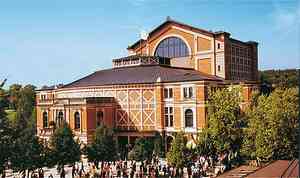 Wagner's Festival Theatre Source: Opera News |
| Born on 9 or 10 October 1813 in Le Roncole, Taro (among the
Italian regions annexed to France under Napoleon),
Giuseppe Verdi
was sent to school at age ten in Busseto. At age twelve he began studying
under opera composer, Ferdinando Provesi, with whom he remained until 1829.
Verdi states that he wrote what amounts to well over two hundred works
between ages 13 and 18, mostly marches and symphonies. By 1830 Verdi was a
highly regarded member of the Busseto Philharmonic Orchestra. In 1832 Verdi
left Busseto for Milan where he studied counterpoint and such under Vincenzo
Lavigna. His first opera, 'Oberto, Conte di San Bonifacio', appeared in
Milan on 17 Nov 1839 at the Teatro alla Scala
[1,
2]. That was also the first of
several works to come w librettist, Temistocle Solera.
His second opera, 'Un giorno di regno', needed to be quickly chosen from a
batch by Felice Romani, none of which he liked
[1,
2; audio:
1,
2]. Nor did the public upon
the failure of its premiere on 5 Sep 1840 at the Teatro alla Scala.
Verdi's two children had recently died in '38 and '39, his wife, Margherita
Barezzi, to follow in June of 1840. In the despair of it all he vowed to
never compose again, then created 'Nabucodonosor' (more commonly 'Nabucco') the next year
toward premiere on 9 March 1842 again at La Scala w libretto by Solera
[1,
2,
3,
4,
5;
audio].
That ignited his engine again, not only putting even an opera by
Donizetti performing
nearby to task, but showing signs of becoming a worthy successor to
Rossini. His relationship with the love of his life, soprano Giuseppina Strepponi,
commenced in 1843 [1,
2].
In 1844 Verdi purchased Il Pulgaro for his parents, a farm of 62 acres. He
then bought the more polished Palazzo Cavalli in Busetto (now the
Palazzo Orlandi)
the same year.
Mozart who liked
nice digs wouldn't have had much use for the farm, but he might have suffered
the Palazzo where Verdi and Strepponi kept quarters together. 'Macbeth' was Verdi's tenth opera, his first of three
inspired by Shakesperea and
his fourth with librettist, Francesco
Piave, with whom
he would create several more into the sixties. premiering on 14 March 1847
at the Teatro della Pergola in Florence. 'Macbeth'
[1,
2,
3,
4; audio: 1,
2,
3] would later see
revision in French for premiere in Paris at the Théâtre Lyrique in Paris on
21 April 1865. Verdi's next and 11th opera, 'I masnadieri', premiered at Her
Majesty's Theatre in London on 22 July 1847 w libretto by
Andrea Maffei
[1,
2,
3,
4,
5].
His following premiere of 'Jérusalem' in Paris at Salle Le Peletier on 26
November 1847 [1,
2,
3]
was a revision his 1843 'I Lombardi alla prima crociata'
[1,
2] w
libretto by Solera, now w a French text by Alphonse Royer and Gustave
Vaëz. In May of 1848 Verdi purchased the house
previously owned by his family at Sant'Agata in Busseto
where he and Strepponi would winter through the years when manageable.
Though preferable to keep travel to more accommodating warmer months it
wasn't always possible. Verdi premiered 'Il Corsaro' ('The Pirate')
at the Trieste Grande on 25 October 1848 [1,
2,
3,
4,
5,
6,
7]. Inspired by Lord George Byron's
poem, 'The Corsair', that was another w libretto by Piave. Verdi followed
that with 'La battaglia di Legnano' in Rome on 27 January 1849
[1,
2,
3,
4;
audio],
that his second w librettist,
Salvatore Cammarano, with
whom their next, 'Luisa Miller', arrived to the Teatro San Carlo in Naples
on 8 December 1849 [1,
2,
3,
4,
5;
audio].
Verdi commenced the second half of the 19th century w another libretto by Piafi, 'Stiffelio', premiering at the Teatro Grande in Trieste on 27 Nov
1850 [1,
2,
3]. His first grand
opera (staging and such to magnificent proportion) was 'Les vêpres
siciliennes' performed at the Paris Opera (also referred to as "the grand
opera") on 13 June 1855 [1,
2,
3]. That was a setting to 'Le duc d'Albe' written by
Charles Duveyrier and Eugène Scribe in 1838. 'Un ballo in maschera' appeared
at the Teatro Apollo in Rome
on 17 Feb 1859 w libretto by Antonio Somma
[1,
2,
3,
4,
5; audio
1,
2]. Having
lived together for fifteen years, Verdi and Strepponi
finally decided to marry on 29 August 1859.
Having by then composed 23 operas, Verdi and his wife retired to Sant'Agata
where he gardened and hunted when not involving himself with politics as a
member of the Parliament of the Kingdom of Italy in '62.
Verdi was a firm Italian patriot, having no patience for the Austrian
threat, but Parliament wasn't his bag. Strepponi, not one for lounging about
only because the climate was pleasant, was all for taking 'La forza del destino'
to St. Petersburg in 1861 [1,
2,
3,
4,
5;
audio;
libretto]. After premiering on 22 November at the Bolshoi Kamenny Theatre they took it to Moscow. Again, Piave wrote the libretto.
Another trip across the Channel was made in 1862 to perform Verdi's choral
cantata, 'Inno delle nazioni' ('Hymn of Nations'), on 24 May at Her
Majesty's Theatre [1,
2,
3,
4].
Text for that was authored by Arrigo Boito. It was in Cairo that Verdi premiered his popular 'Aida', set in ancient Egypt,
on 24 December of 1871, conducted by Giovanni
Bottesini, libretto by Antonio
Ghislanzoni [1,
2,
3,
4,
5;
audio: 1,
2,
3]. Italian author, Alessandro Manzoni, died on 22 May 1873, in memory of whom
Verdi composed his
'Requiem Mass' for an anniversary performance one year later at San Marco
church in Milan on 22 May 1874 [1,
2,
3,
4,
5,
6;
audio:
1,
2,
3].
Verdi was nominated to the Italian Senate in 1874, but as before, such
wasn't his venue. After taking his oath into office he never showed up
again. It was nigh thirteen years later that Verdi premiered 'Othello' w libretto
from Shakespeare by Arrigo Boito [1,
2] at La Scala on 5 Feb of 1887
[1,
2,
3,
4,
5;
audio]. Verdi's
last crowning opera was 'Falstaff' with its main character from Shakespeare
in the libretto again by Boito performed on 9 February 1893 at La Scala in Milan
[1,
2,
3,
4,
5,
6;
audio].
Though Verdi is thought to have been an atheist, his 'Ave Maria' premiered
posthumously on 13
Nov 1898 in Austria as part of 'Quattro Pezzi Sacri' of which he'd begun to
compose 'Laudi alla Vergine Maria' in 1886 followed by the 'Te Deum' begun in
1895, the 'Stabat Mater' in '86 and the 'Ave Maria' in '89
[1,
2,
3,
4;
audio
('Ave Maria')]. Verdi reportedly wished to be buried w his 'Te Deum'. He died due largely to
stroke on 27 January 1901, the first composer in these histories to live
into the 20th century. Verdi largely ensured the continued powerful presence of
Italian opera through the 19th century. Amidst his 37
operas he also wrote a nice number of songs.
References: 1,
2,
3.
Chronology.
Compositions: 1,
2;
by genre: 1,
2;
Klassika: English;
German;
operas:
1,
2;
w reviews: 1,
2,
3,
4.
Editions & scores: 1,
2.
Collections: Hopkinson.
Sheet music: 1,
2,
3,
4;
Free-scores: 1,
2.
Libretti.
Iconography: 1,
2,
3;
related.
Audio: 1,
2,
3,
4,
5;
w bio;
cylinder;
w video.
Recordings of: discos: 1,
2,
3,
4,
5;
'Falstaff': 1,
2;
'Opera Explained' written by Thomson Smillie w narration by David Timson:
revew.
Verdi in modern media.
Further reading by source: Isaiah Berlin;
CLASSIC fM;
Official Giuseppe Verdi;
Treccani.
Further reading by topic: Italian Risorgimento (Italian Unification) by
Philip Gossett;
librettists.
Bibliography: 1,
2;
'The story of Giuseppe Verdi: Oberto to Un ballo in maschera' by Gabriele Baldini (Cambridge U Press 1980);
'Giuseppe Verdi: Falstaff' by James Hepokoski (Cambridge U Press 1983);
'The complete operas of Verdi' by Charles Osborne (Da Capo Press 1977).
Other profiles: English:
educational;
encyclopedic: 1,
2,
3,
4,
5,
6;
musical: 1,
2,
3,
4,
5,
6,
7;
French;
Italian:
Treccani: 1,
2,
3,
4,
5,
6;
Portuguese.
Giuseppe Verdi 1870-71 4 acts Azerbaijan State Academic Opera and Ballet Javanshir Jafarov Aida - Xuraman Qasımova 1867-1888 5 acts C & O of Der Wiener Staatsoper Conducting: Alain Altinogluo 2004 1893 3 acts Vienna State Opera Chorus Norbert Balatsch Vienna State Opera Chorus Georg Solti 1979 Macbeth 1847 4 acts C & O del Teatro alla Scala Conducting: Claudio Abbado 1975 1874 Revised 1875 7 sections Venice Monteverdi Academy Choir Sheila Rech Orchestra Lorenzo Da Ponte Roberto Zarpellon 1841 4 acts Orchestre National d’Ile de France Yoel Levi Nabucco: Roberto Servile 1851 3 acts Azerbaijan State Academic Opera and Ballet Javanshir Jafarov Rigoletto - Evez Abdullayev 1857 3 acts C & O of the Teatro dell'Opera di Roma Conductor: Riccardo Muti Chorus Master: Roberto Gabbiani 1851-53 4 acts National Philharmonic Orchestra Richard Bonynge 1852-55 5 acts Teatro alla Scala Director: Riccardo Muti |
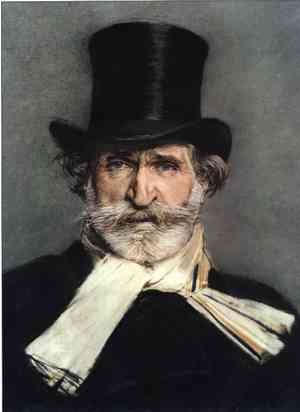 Giuseppe Verdi 1886 Painting: Giovanni Boldini Source: Wikipedia |
|
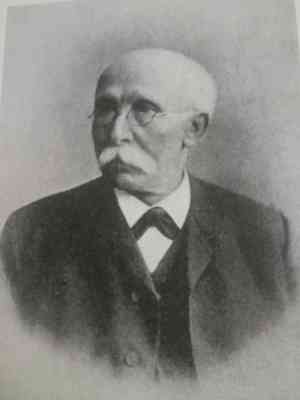 Franz Strauss Source: Wikipedia |
Born on 26 Feb 1822 in Parkstein, Bavaria (near the
present western border of the Czech Republic),
Franz Strauss
was a multi-instrumentalist who favored horn. His son was
Richard Strauss, but he was unrelated
to the Strausses behind the Viennese waltz,
Johann Strauss I or II.
At age fifteen Strauss began playing in the orchestra of Duke Maximilian
Joseph, there to remain until age 25 when he switched to the Bavarian Court Orchestra in 1847. He married late, age 41, but well,
hooking up with Josephine Pschorr, heiress of the wealthy brewing family. Among Strauss' most
cited pieces for horn is 'Nocturno' Op 7
published in 1864 in Munich [audio;
score: 1,
2,
3].
He became a professor at the Royal School of Music in 1871. Strauss
was among the more conservative composers during the Romantic period. He
didn't care for
Wagner's music, nor
Wagner for him, but
when required to perform works by
Wagner even
Wagner recognized
Strauss to be impeccable. Though Franz Strauss wasn't a major composer,
his instrumental abilities and reliability in
general to present good music whatever its kind, brought him a solid
reputation in Germany. Strauss died in Munich on 31 May 1905.
References: 1,
2.
Comps: auf Deutsch;
by genre;
for
horn;
by title.
Editions: 1,
2,
3,
4.
Audio: 1,
2,
3.
Recordings of: discos: 1,
2,
3,
4;
'Horn Concertos' w horn by Zdenek Tylsar.
Other profiles: English;
French;
German;
Japanese;
Spanish.
HMR Project.
Franz Strauss Pub 1848 Horn: Brittaney Pertsas Piano: Sepehr Davallou Pub <1851 Op 2 Horn: Ricardo Matosinhos Piano: Jarmila Panochová Comp 1865 Op 8 Horn: Emilie Ravn Jensen Piano: Vagn Sørensen Introduction, Theme and Variations Pub 1875 Op 13Horn: Arty Joshua Robinson Pun 1864 Op 7 Cello: Mark Jacot |
|
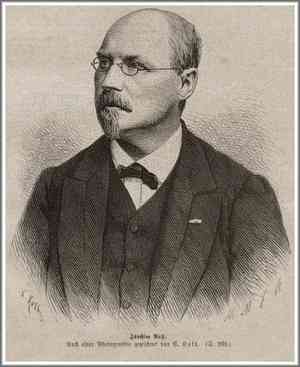 Joachim Raff Source: Periodista Digital |
Born on 27 May 1822 in Lachen, Switzerland,
Joseph Joachim Raff
[not to be confused with the violinist and composer, Joseph Joachim: 1,
2,
3,
4],
was a school teacher self-taught in music. His Op 1 was 'Serenade for Piano'
in 1842. Raff sent some piano
compositions to Felix Mendelssohn
in 1844 who had them published in 1844, prompting him to give up teaching and move
to Zurich to compose full time. He was assistant to
Franz Liszt
in Weimar from 1850 to '53. It was during that time that w
Liszt's
assistance he staged his first opera, 'König Alfred' (WoO 14), in Weimar in
1851. Written in 1848-49, it was a so-so success performed three times at
the Hoftheater. Raff applied himself to his first symphony in 1854, his
'Grand Symphony' in E minor WoO 18. Though three of five movements are lost
Raff applied the fourth and fifth to his 1863 'Orchestral Suite No. 1' in C
major Op 101 performed on 26 Feb 1864 at the Karlsruhe Museum Concert Hall,
conducted by Wilhelm Kalliwoda [*;
audio].
He otherwise composed eleven symphonies, one unfinished, the first of which
was 'Symphony No. 1' in D major Op 96 titled 'An das Vaterland ('To the Fatherland'), that premiering in February 1863 at the Musikverein in Vienna [1,
2,
3,
4;
audio]. He had married his wife, Doris Genast, in a Catholic ceremony on
15 February 1859. Having four daughters, Doris would outlive Joseph by
twenty years, not to die until 1912. Raff became the first director of the Hoch Conservatory
founded in 1878 during the period that he composed his last four symphonies
from '76 to '79. Of those addressing the four seasons of the year, 'The Winter'
of '76 was left unfinished, completed by Max Erdmannsdörfer toward its first
performance in Feb of 1883 after Raff's death. Raff's last
opera, 'Die Eifersüchtigen' ('The Jealous Ones') WoO 54, was a comedy with
libretto by himself written in 1881-82. It wasn't performed in his lifetime
and didn't see publication of only its overture until 2013. In great demand as a teacher, he
died on either 24 or 25
June 1882 in Frankfurt [1,
2].
Raff was a prolific composer who also put his hand to numerous concertos, chamber works
and several suites. References: 1,
2,
3.
Chronology.
Compositions:
in French;
Klassika: English;
German;
by genre: 1,
2;
by Opus;
symphonies;
by title: 1,
2;
WoO (Without Opus).
Editions & scores: 1,
2,
3;
French.
Sheet music.
Audio: 1,
2,
3,
4.
Recordings of: discos: 1,
2,
3,
4;
'Piano Works 5' w piano by
Tra Nguyen;
'The Symphonies' by the Bamberger Symphoniker w Hans Stadlmair;
'Symphony No 3|Symphony No 4' by the Milton Keynes City Orchestra w Hilary D. Wetton;
'Works for Piano and Orchestra' w piano by Tra Nguyen. Other profiles:
Russian;
Spanish;
HMR Project. Joachim Raff 1874 Op 193 Bamberger Symphoniker Hans Stadlmaier Cello: Daniel Müller-Schott Cello Concerto 2 in G Major 1876 WoO 44 Bamberger Symphoniker Hans Stadlmaier Cello: Daniel Müller-Schott 1873 Op 185 Hamburg Symphony Orchestra Richard Kapp Piano: Michael Ponti Symphony 1 in D major 1863 Op 96 'An Das Vaterland' Rhenish Philharmonic Orchestra Samuel Friedmann Symphony 3 in F major (Im Walde) 1869 Op 153 'In the Forest'CBS Symphony Orchestra Bernard Herrmann Symphony 9 in E minor (Im Sommer) Op 208Bamberg Symphony Orchestra Hans Stadlmair 2005 |
|
|
Born in Liège (then Netherlands, now in Belgium)
on 10 Sep 1822,
César Franck
was the son of a bank clerk. Franck's
influence on later music was substantial, especially of an academic nature,
they largely composers and professionals who've studied his work keeping him
relevant more so than audience recognition. His (want of) fame
incommensurate with his abilities, many of Franck's works employed cyclic movements, variations
upon some theme.He studied such as harmony,
solfège, piano and
organ at the Royal Conservatory before performing his first concerts in
1834, one for Leopold I, first King of Belgium upon its independence from
Netherlands in 1831. Wikipedia lists
juvenile works assigned opus numbers by
Franck all but one of which he later disowned and are not included in
catalogues of his mature works. His mature works were numbered by publishers
to Op 21 before that system became unclear. Juvenile op numbers are not the
same as for mature works and are rarely seen. In 1969 Wilhem Mohr
published his "FWV" system ('Franck Werke Verzeichnis') categorizing mature
works under "M" for genres [see mature works:
contents
chamber music. M2 is works for piano, M3 for organ, and so forth. The "CFF"
numbering system is per Joël-Marie Fauquet in 1999. In that directory FWV 1
is CFF 111. It includes juvenile works with "0" inserted. For example, Op 13
is a mature work while Op 013 is juvenile. In
1835 Cesar's father took him and his younger brother, Johann, to Paris to study
counterpoint with Anton Reicha and piano with Pierre Zimmermann. He entered the
Paris Conservatoire in 1837.
His (M1) FWV 1 (Op 1 No.1 or CFF 111) was 'Piano Trio' in f sharp minor first performed in 1840 in Paris [audio:
1,
2}. Frank had difficulty catching big fish during his earlier career. In 1843 he
switched from writing chamber music to a greater oratorio,
'Ruth'
(Op 10; CFF 179; FWV 51), which wasn't well received.
Franck would premiere a revised version in 1872 to considerably greater
fanfare. Discouraged, Franck assumed the life of an accompanist and teacher
in Belgium. In 1847 he was made second organist at Notre-Dame-de-Lorette. As
a Roman Catholic, Franck found that position to his taste until switching
Saint-Jean-Saint-François-au-Marais in 1851, there to be appointed primary
organist in 1853. Franck continued focusing on organ upon appointment as
maître de chapelle at the Basilica of Saint Clotilde in Paris in 1858. Perhaps a
year later he was made titulaire, setting him perfectly into his element,
his sacred compositions beginning to shine and his virtuosity coming into
demand. His oratorio, 'Messe à Trois Voix' (Op 12; CFF 203, FWV 61), saw performance in
Paris on 2 April 1861 [1,
2;
score].
In 1865 he would insert a fifth movement containing 'O salutaris' for voice
to make six movements. in 1872 he would exchange 'O salutaris' for 'Panis
angelicus'. That was a setting to a text by Saint Thomas Aquinas written
perhaps as early as 1264. Franck began working on 'Les Béatitudes' in 1869 w a text
by Joséphine-Blanche Colomb from the Gospel of 'Matthew'. That didn't see performance for piano, however, until 20 Feb 1879 at Frank's
own residence in Paris. The whole orchestral oratorio (Op 25; CFF 185; FWV
53) wasn't performed until after his death, premiering in Colonne on 19 March
1891 [most sources: 1,
2,
3,
4;
IMSLP locates that in Dijon
on 15 June 1891; revue;
score;
text;
audio: 1,
2;
CD by the Radio-Sinfonieorchester
Stuttgart w Helmuth Rilling]. It was 1872 that Franck accepted a position as a professor at his old haunt back in the latter thirties, the Paris
Conservatoire. Per above, Franck finally performed a reduced version of 'Les Béatitudes'
on 20 Feb 1879, a work begun back in '69. After ten years of interruptions while scratching it out, even his students questioned
if it worked as a whole, its parts greater than its sum. He nevertheless began composing some of his more interesting work in the early
eighties. Franck's only symphony was 'Symphony in D minor' performed on 17 Feb
of 1886 [1,
2,
3,
4;
audio: 1,
2],
that to another poor reception.
Come the premiere of 'Variations Symphoniques' (CFF 137; FWV 46) on 1 May 1886, composition finished in Dec 1885
[1,
2;
audio;
score].
His 'Sonata in A major' (CFF 123; FWV 8) arrived on 16 December 1886
1,
2,
3;
audio]. That
had been a wedding gift to Belgian violinist,
Eugène Ysaÿe.
Catching a cold in October 1890 dug Franck's grave, he dying the next month of pleurisy and pericarditis on 8
November. Though the
majority of Franck's work was for piano or organ, he wrote a couple of
operas as well. Though 'Hulda' [1,
2,
3,
4] had been composed between '79 and '85 it
didn't see a premiere until March 4 1894 in Monte Carlo after his
death. That was based on the 1858 play, 'Lame Hulda', by Norwegian author,
Bjørnstjerne Bjørnson.
Franck had worked on 'Ghiselle' [1,
2] from '88 into 1889, though that also didn't
see a performance until after his passing, that in Monte Carlo as well on 30
March 1896. References: 1,
2,
Compositions: in English: 1,
2;
in French;
CFF, FWV & Op cross reference;
FWV, M & Op cross reference;
FWV & Op cross reference (Spanish);
by genre: English: 1,
2,
3;
French: 1,
2;
by title.
Autographs.
Editions:1,
2.
Sheet music: 1,
2,
3,
4,
5.
Audio: 1,
2,
3,
4,
5,
6,
7;
cylinder.
Recordings of: discos: English:
1;
2,
3,
4;
French;
'Franck: Early Piano Music' w piano by
Julia Severus.
Usage in modern media.
Further reading:
'César Franck' byNorman Demuth (Philosophical Library New York 1949);
Pierre Pincemaille;
students of.
See also:
Documents &
portraits; the César Franck Gesellschaft (Society);
Other profiles: English: BBC (audio),
2,
3,
4,
5,
6,
7,
8;
French: 1,
2,
3;
Norwegian;
Russian;
Spanish. César Franck 1869-79 Orchestra e Coro della RAI di Milano Mino Bordignon Gianandrea Gavazzeni Soprano: Viorica Cortez 1882 'The Accursed Huntsman' University of North Carolina Greensboro Eduardo Vargas 1890 Organ: Joel Hastings 1884 National Philharmonic Orchestra of Ukraine Francisco Varela Piano:Fabio Banegas 1886-87 Symphonic poem Opera Orchestra of Paris Conductor: Felix Krieger Ballet of the Paris Opera Choreography: Alexei Ratmansky Violin Sonata in A major 1886 4 movements Piano: Alexander Zakin Violin: Isaac Stern 1888 3 movements Philadelphia Orchestra Ricardo Muti |
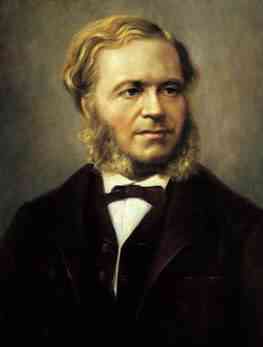 Cesar Franck Source: NAXOS |
|
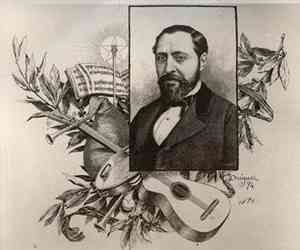 Francisco Barbieri Source: Wikipedia |
Born on 3 August 1823 in Madrid,
Francisco Barbieri
is an obscure composer compared to others of his period. But he was among a
number of Spanish composers who at his time were beginning to make a notable
contribution to both classical and Spanish music (Arrieta,
Gaztambide, Oudrid). The means of this was largely via the zarzuela
[1,
2]
concerning which Barbieri composed above sixty, a form of drama in speech
and song originating in Spain in the latter 17th century, eventually to
employ elements from Italian opera, dance and popular song. Barbieri's
significance in the annals of music is the replacement of the Italian
influence on the zarzuela w a firm Spanish identity. Barbieri entered the
Madrid Conservatory in 1837 where with other studies he developed his skills
in clarinet, piano and singing baritone. He supported his early career as a
clarinetist in the Banda de Quinto Batallón de la Milicia Nacional. Also
singing at fiestas, teaching piano, conducting choirs and composing songs,
come the latter forties he was working as a
journalist, critic and copyist. His 'Il Buontempone' of 1847 [document]
was also his debut as an operatic vocalist. Though in the Italian
fashion and less than successful, Barbieri later that year founded La España Musical in the interest of developing
dramas distinguishably Spanish. His first zarzuela, 'Gloria y Peluca'
('Glory and Wig'), appeared on 9 March 1850 at the Teatro Variedades in
Madrid w libretto by José de la Villa del Valle
[1,
2;
audio: 1,
2].
He wrote and premiered three more zarzuelas that year before 'Jugar con
fuego' ('Playing with Fire') was performed at the Teatro del Circo (Circus
Theater) in Madrid on 6 October 1851 [1,
2,
3,
4,
5,
6;
audio: 1,
2;
manuscript (1851);
Jose Rodriguez, Calvario edition (1869); Sociedad Anónima Casa Dotesio
edition (1909?)]. Somewhat alike a French opera comique, 'Jugar con Fuego'w libretto
by Ventura de la Vega
is identified as the first significant zarzuela in three acts of the revived form
that is Spanish rather than
Italian. Barbieri premiered seven more zarzuelas before 'Los Diamantes de la
Corona' was performed at the Teatro del Circo on 15 September 1854
[1,
2,
3,
4,
5;
audio: 1,
2]. The
libretto by Francisco Camprodón was borrowed from the original opera comique
of 1841 by Eugène Scribe and Jules-Henri Vernoy de Saint-Georges set to
music by
Daniel Auber. In 1856 he helped found the Teatro de la
Zarzuela [1,
2] where he premiered his 'The Devil in Power'
on 14 December. Come 'Pan y Toros' ('Bread and Bulls') at the
Teatro de la Zarzuela on 22 Dec 1864
[1,
2,
3,
4,
5; audio:
1,
2;
score]. Barbieri formed the Sociedad de Conciertos de Madrid w
Joaquín Gaztambide in 1866
[*]. 'El Barberillo de Lavapiés' saw staging at the Teatro de la Zarzuela on 18
December 1874 [1,
2,
3,
4;
audio: 1,
2,
3,
4]. Luis Mariano de Larra wrote the libretto for that.
Among Barbieri's works in prose was the didactical ''Las Castanuelas' ('The
Castanets')' in 1878 [1,
2].
In 1890 he published 'Cancionero Musical de los Siglos XV y XVI'
[document].
His last zarzuela was performed on 6 May 1891 at the Apolo Theatre in Madrid
w libretto [1,
2,
3] by Ricardo de la Vega, 'Señor Luis el Tumbón'
[document]. He died on 19 Feb 1894 in Madrid.
References: 1,
2,
3,
4,
5,
6.
Compositions chronological: in Catalan;
in
Dutch;
in Spanish: 1,
2.
Editions & scores: AbeBooks;
BNF;
IMSLP;
Internet Archive;
OML (Biblioteca Nacional de España);
WorldCat.
Collections: Barbieri Papers;
Biblioteca Nacional de Espana.
Audio: 1,
2,
3,
4,
5;
cylinder.
Recordings of: discos: 1,
2,
3,
4,
5,
6.
Further reading: John E. Henken (biography).
Archives: 'El Dia' (19 Feb 1894);
iconography.
Biblio: 'Francisco Asenjo Barbieri: El hombre y el creador' by Emilio Casares (Editorial Complutense 1994);
'Barbieri and the Spanish Zarzuela' by Gilbert Chase ('Music & Letters' 1939).
Other profiles (todo en español): 1,
2,
3,
4.
HMR Project. Francisco Barbieri 1851 From 'Don Quijote' Incidental music Orquesta de la Comunidad de Madrid José Ramón Encinar 1874 Zarzuela BSMO Banda Sinfónica Ogíjares Bolero from the operetta 'The Diamond Crown' Premiere 1856 Madrid Coro Cantores de Madrid Gran Orquesta Sinfónica Ataúlfo Argenta Premiere 1864 Madrid Zarzuela Goya: Patricio Sabaté |
|
| Born just
to southern France in Puente la Reina, Navarre, on 21 Oct 1823,
Pascual Juan Emilio Arrieta Corera
is a comparatively obscure composer alike his contemporaries in Spain during
his period. But he was an important instructor and composer of zarzuelas
[1,
2], a
dramatic form in both speech and song originating in Spain in the latter
17th century. Arrieta studied at the Milan Conservatory
from 1841 to '45. His first opera, 'Ildegonda', was one of his requirements,
there to premiere on 28 Feb 1845 [1,
2;
libretto by
Temistocle Solera].
His initial of fifty zarzuelas [*] was
'El Dominó Azul' ('The Blue Domino')
premiering on 19 February of 1853 at the Circus Theater in Madrid
[1,
2,
3;
audio; libretto
[1,
2]
by Francisco Camprodón [1,
2]. His
two-act zarzuela, 'Marina', that saw the Circus Theater on 21 September 21
1855 [*] would become his last opera by the same title
premiering on March 16, 1871, at the Teatro Real
[*;
audio].
Francisco Camprodón's libretto for the zarzuela of '55 saw revision for the
'71 opera by Miguel Ramos Carrión [1,
2]. Arrieta had begun teaching at the Madrid Conservatory in 1857, becoming Director in
1868. Sources list his last zarzuela as 'El Guerrillero' in 1885,
written w Manuel Fernández Caballero [1,
2] and
Ruperto Chapí [1,
2,
3] w a libretto
[1,
2]
by Federico Muñoz. Arrieta died in Madrid 11 Feb 1894.
References: 1,
2.
Compositions (Deutsch):
chronological: in Basque;
in English;
in French;
in German;
in Hungarian;
in Portuguese;
IMSLP.
Editions: English: 1,
2;
French.
Audio: 1,
2,
3.
Discos: 1,
2,
3,
4,
5.
Other profiles: Catalan;
English;
German;
Italian;
Spanish.
HMR Project. Emilio Arrieta Last opera in 1871 3 acts Coro del Teatro de la Zarzuela Antonio Fauró Orquesta de la Comunidad de Madrid Cristóbal Soler 1850 Preludio to the opera 'La conquista de Granada' C & OS de Madrid/Jesús López Cobos 1846 Preludio to the opera 'Ildegonda' C & OS de Madrid/Jesús López Cobos 1853 From the zarzuela 'El dominó azul' Orquesta de la Comunidad de Madrid José María Moreno Soprano: Sonia de Munck |
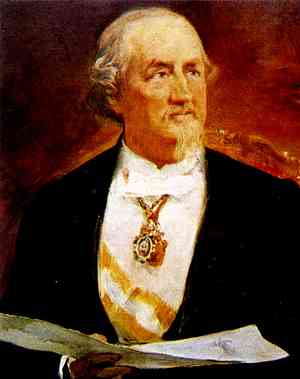 Emilio Arrieta Source: Cuaderno de Sofonisba |
|
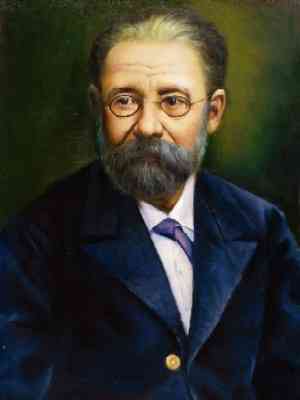 Bedrich Smetana Source: Gimnazija Črnomelj |
Born on 2 March 1824,
Bedrich Smetana
was a Bohemian born east of Prague, a portion of the Habsburg Empire at the
time. Not to be confused w sour cream by Russians, Smetana's father was a
master brewer, both commercially and to royalty. Upon finishing school in
1843 Bedrich went to Prague with 20 gulden (perhaps about
$500 today) and in need of musical instruction, which he found in composer,
Josef Proksch. He himself became a music teacher to the family of Count
Thun. He resigned with Thun in 1847 to go on a concert tour in West Bohemia
that was largely a failure. Returning to Prague, he composed music for the
democratic revolutionaries beginning to rebel against monarchical Habsburg
rule (see Paul
Robeson, 'The Song of Freedom' w text by Ján Kollár). He
was among the Svornost (Citizen's Army) to barricade the city upon attack by
Prince Windisch-Grätz that year. That uprising was swiftly settled and
Smetana suffered nothing of it, opening his Piano Institute later in August
with twelve pupils. In 1847-48 he wrote 'Six Characteristic Pieces' that
serves as his Op 1 [*;
audio], published in 1851, the same year he
accepted, as a firm nationalist, the position of court pianist to Holy Roman Emperor Ferdinand I at
Prague Castle. Albeit Smetana's Piano Institute was well regarded his career
as a concert pianist sputtered. So he left Prague for Gothenburg, Sweden, in
1856, where he assumed the wand for the Gothenburg Society for Classical
Choral Music. He married in 1860, then attempted another concert tour in
1861, this time in Netherlands and Germany, only failure once again. The
appearance of Smetana's first of
nine operas, 'The Brandenburgers
in Bohemia', premiered on 5 Jan of 1866 at the Provisional Theater in Prague
to great success [1,
2,
3;
audio;
score].
His first of four versions of 'The Bartered Wife' came to yet another disappointment
later that year on 5 May '66. His three revisions staged in '69 and '70 came
to greater success. Smetana's
third opera, 'Dalibor' [1,
2; audio:
1,
2;
CD], arrived to the New Town Theatre
in Prague on 16 May 1868 to
be revised in 1870. In 1870 he became conductor at the
Provisional Theater, so named since its erection in 1862 in preparation to
become the National Theatre in 1881. 'The Two Widows' appeared on 27 March
1874 at Prague Czech Theatre [1,
2,
3,
4,
5;
audio: 1,
2;
CD]. By October that year
Smetana had lost his hearing in both ears. He then granted the Provisional
Theatre the right to perform his works in return for a pension of 1,200
guldens per annum. Widely around $30,000 today, that was about what an
average composer might get paid in a year, no great sum compared to the
wealth with which other operatic composers retired, but nothing to weep
about either for only four years of service. He began falling ill in 1875,
thus moved his family to Jabkenice. Having already completed the first two
movements of his most famous work, his symphonic poem, 'Má Vlast' ('My Homeland')
[1,
2,
3,
4], he
there composed the last four in '75, '78 and '79. The more notable of the
six movements of 'Má vlast' is its second, 'Vltava', which is a river in
Bohemia [*;
audio;
score].
Smetana's opera, 'Hubička' ('The Kiss') premiered at the Provisional on 7
November 1876 [1,
2,
3;
audio;
CD].
Come 'Tajemství' ('The Secret') on 7 November 1878 at the Nové České Divadlo
(New Czech Theater) [1,
2; audio:
1,
2]. His opera,
'Libuše', was employed for the grand opening of the National Theatre on 11
June
1881 [1,
2,
3,
audio: 1,
2;
CD]. That had been composed ten years prior for a coronation ceremony of
Franz Joseph I of Austria that didn't occur [Wikipedia]. The German text by
Josef Wenzig was translated into Czech by Ervín Špindler. Come the premiere
at the New Czech of 'Čertova Stĕna' ('The Devil's Wall') on 29 October 1882
[1,
2; audio:
1,
2].
Smetana's health had begun to deteriorate that year to the point that he
couldn't sustain a project. His behavior becoming incoherent and violent, he
was admitted to the Kateřinky Lunatic Asylum in Prague in April 1884, dying
the next month on 12 May 1884. The cause of his death was registered as dementia, but
syphilis is the wider consensus. He had left his opera, 'Viola' [1,
2],
unfinished, that not to see performance until 15 March 1900 at the National
Theatre. The importance of Smetana was partially the
alignment of his career with the rise of Czech and Slavak nationalism.
Though Smetana spoke German as a Bohemian youth before he learned Czech, and
though Czechoslovakia wouldn't attain independence from the Austro-Hungarian
Empire until 1918, that nation (become the Czech Republic in 1993) could
claim him as its own due his nationalist sympathies. Though
Berlioz had been an important
early influence, Franz Liszt
had been his most important musical associate. Albeit František Škroup
preceded him by a generation, Smetana is the first major Czech composer to
endeavor opera. Even so, his works for piano not here noted are among his most appreciated.
Smetana's works received opus numbers only to 21. Three other catalogues are
employed: T numbers are per Karel Teige in 1893. B numbers are per František
Bartoš in 1972(?). JB numbers are per Jiri Berkovec in 1999.
References: 1,
2,
3,
4,
5,
6.
Compositions: cross-referencing:
T, B & JB;
T, B, JB & Opus;
by genre: 1,
2;
by title: 1,
2.
Editions & scores:
Czech;
Deutsch: 1,
2;
English: 1,
2,
3;
Francais.
Sheet music.
Audio: 1,
2,
3,
4,
5,
6,
7,
8;
cylinder.
Discos: 1,
2,
3,
4,
5,
6.
Usage in modern media.
Iconography: 1,
2.
Bibliography:
'Smetana, Bedrich' by Marta Ottlová, Milan Pospíšil, John Tyrrell and Kelly St Pierre
*.
Other profiles: English: 1,
2,
3,
4,
5,
6;
French: 1,
2;
German: 1,
2;
Norwegian;
Russian: 1,
2,
3;
Spanish.
Bedrich Smetana The Bartered Bride [Part 1] Versions 1-4 1863-70 JB 1:100 Czech Philharmonic Chorus & Orchestra Zdeněk Košler Versions 1-4 1863-70 JB 1:100 Czech Philharmonic Chorus & Orchestra Zdeněk Košler Versions 1-4 1863-70 JB 1:100 Czech Philharmonic Chorus & Orchestra Zdeněk Košler 1875–76 Revised 1877 JB 1:104 2 acts Janáček Academy of Music and Performing Arts Piano: Richard Pohl & Kostiantyn Tyshko 1859 JB 1:75 Piano: František Maxián Ma Vlast 1872–79 JB 1:112 6 symphonic poems Orchestre Philharmonique de Radio France Peter Oundjian 1855 JB 1:64 Op 15 Cello: Marco Damiani Piano: Angela Pardo Violin: Alessandro D'Andrea |
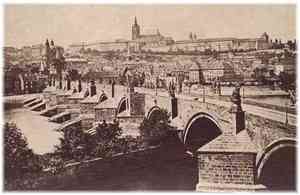 Prague Castle Source: Wikipedia |
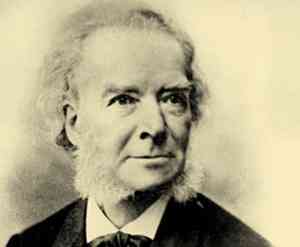 Carl Reinecke Source: Coast Pink |
Born in Hamburg (in Denmark at the time) on 23
June
1824,
Carl
Heinrich Carsten Reinecke
began composing at age seven, due a music teacher for a father. He first
played piano in public at twelve. Reinecke published his Op 1 in 1839 per '2
Charakterstücke und eine Fuge für die linke Hand' ('Two Character Pieces and
a Fugue for the Left Hand') [*]. He made his first concert tour in
1843 to points in Denmark and Sweden. After studying in Leipzig under
Mendelssohn,
Schumann
and
Liszt, he toured Germany and Denmark
in 1846. Reinecke was court pianist in Copenhagen for Christian VIII of
Denmark until 1848, after which he composed in Paris. Reiinecke wrote his
first symphony in 1850, 'Symphony in G major', which saw a few performances
that decade but was later disowned by him, denied an opus number and
eventually lost. Starting in 1851
Reinecke became a prof at the Cologne Conservatory, then a musical director
in Barmen and, later, the Singakademie in Breslau. His 'Symphony No.1'
premiered in Leipzig on 2 Nov 1858 [*;
audio;
CD]. In 1860 he became a
professor at the Conservatorium in Leipzig, the same year he became director
of the Gewandhaus Orchestra
which he would conduct until 1895. He published his first of four piano concertos, 'Piano Concerto No.1' in
F-sharp minor Op 72, in 1862 in Leipzig, written earlier in 1860
[*;
audio;
score].
'Piano Concerto No.2' in E-minor Op 120 saw print a decade later in 1872
[*;
audio].
'Symphony No. 2' ('Håkon Jarl') in C minor Op 134 saw print in 1875
[1,
2.
'Piano Concerto No.3' Op 144 saw composing in 1877 for publication the next
year [*;
audio].
Reinecke's better known works were composed during his latter career, such as his
'Undine' sonata for flute and keyboard Op 167 published in Leipzig in 1882 w
a dedication to flautist and fellow Conservatory instructor, Herrn Wilhelm
Barge [1,
2,
3;
audio w Claudio Barile at flute & Paula Peluso on piano;
score]. That had been an examination of the 1811 novella, 'Undine', by
Friedrich de la Motte Fouqué. On 16 October of 1884 Reinecke's 'Harp Concerto' in E
minor Op 182 [*;
audio;
CD] saw premiere in Leipzig at the Gewandhaus
[Garment House: 1,
2,
3].
Come his 'Trio in A Moll' for piano, oboe and horn Op 188 published in 1887
[1,
2;
audio].
His 'String Quartet No.4' in D major Op 211 saw print in 1891
[*;
audio: 1,
2].
'Symphony No. 3' in G minor Op 227 premiered on 21 Feb 1895 at the Gewandhaus in Leipzig [*;
audio]. 'Cello Sonata No.3' in G major Op 238 was composed in 1897
[*; audio:
1,
2], published in
1898 in memory of
Johannes Brahms. Reinecke's
'Children's Symphony' in C major Op 239 saw publishing in 1898
[*].
His final piano concert was 'Piano Concerto No.4' Op 254 published in 1901
[*;
audio: 1;
2]. Upon retiring
from the Conservatory in 1902 Reinecke continued composing and toured
England. 21 Jan of 1905 saw Reinecke recording seven piano rolls for the Welte-Mignon
company [1,
2,
3,
4], making him the earliest-born musician to so document music.
Those were later followed by 14 for Aeolian, then twenty for
Ludwig Hupfeld
(Triphonola,
DEA (reproducing piano), et al).
Audio examples of Reinecke piano rolls for Hupfield:
1,
2,
3,
4. Titles recorded for
Triphonola.
As not a lot of people had money or room for a player piano in their home,
piano rolls were a thriving business only until radio and disc recording
made them a thing of
the past. See also player piano and piano roll references below. Reinecke's
final concerto, 'Flute Concerto' in D major Op 283 was performed on 15 March
1909 in Leipzig by flautist, Maximilian Schwedler [1,
2,
3,
4;
audio]. Reinecke died on 10 March 1910 in Leipzig,
spared from the outbreak of World War I four years later.
References for Reinecke: 1,
2,
3.
Compositions:
by genre: 1,
2;
by Opus;
Klassika: English,
German;
by title: 1,
2.
Authorship: 1,
2.
Editions & scores: English: 1,
2,
3;
French: 1,
2;
German: 1,
2,
3,
4.
Sheet music:
choral works.
Song texts.
Audio: 1,
2,
3,
4;
w piano rolls.
Recordings of: discos: 1,
2,
3,
4,
5,
6,
7,
8;
'Complete String Quartets' by the Reinhold-Quartett
*;
'Complete Works for Cello and Piano' w Martin Rummel (cello) & Roland Krüger (piano)
*;
'Harp Concerto | Flute Concerto' w Fabrice Pierre (harp) & Patrick Gallois (flute) w the Swedish Chamber Orchestra
*,
review; 'Music for Clarinet' w clarinet by Olivier Dartevell
*,
review; 'Music for Strings' by the Chamber Orchestra Kremlin w Misha Rachlevsky
*;
'Piano Concertos 1-4' w piano by Klaus Hellwig backed by the Orchestra NordwestDeutsche Philharmonie w Alun Francis
*;
'Symphonies Nos 2 & 3' by the Tasmanian S & O w Howard Shelley
*.
Iconography: 1,
2,
3.
'The Etude' for which Reinecke wrote;
students;
Tchaikovsky Research.
See also: the Carl Reinecke Museum.
Other profiles: Catalan;
Dutch;
English;
French; German:
1,
2;
Italian;
Portuguese;
Spanish.
References for the player piano: 1,
2,
3,
4,
5,
6,
7,
8,
9;
Stanford Player Piano Project: 1,
2.
References for piano rolls: 1,
2; Denis Condon Collection:
1,
2;
manufacturing;
typology.
References for the reproducing piano: 1,
2,
3,
4;
rolls.
Carl Reinecke 1892 Op 216 Octet for winds 4 movements Soni Ventorum 1901 Op 254 3 movements NordwestDeutsche Philharmonie Alun Francis Piano: Klaus Hellwig 1858 Revised 1863 Op 79 4 movements Rhenish Philharmonic Orchestra Alfred Walter Symphony 2 in C minor (Håkon Jarl) <1875 Revised 1888 Op 134Tasmanian Symphony Orchestra Howard Shelley 1895? Op 227 4 movements Brandenburgisches Staatsorchester Frankfurt Heribert Beissel 1882 Op 167 Flute sonata in E minor 4 movements Flute: Alexa Still Piano: Renée Lavergne 1877 Op 141 3 movements Johannes Moesus Violin: Ingolf Turbin |
|
|
Born on 4 Sep 1824 in Ansfelden, Austria,
Anton Bruckner
had learned to play organ by the time he wrote his first composition that was
the
sacred motet, 'Pange Lingua', circa 1835 at age
eleven. Fifty six years later he would apply himself to a second version,
WAV 31, in 1891 [1,
2;
audio];
disco; see also the 'Panga Lingua']. Which is an apt way to commence a brief
account of Bruckner, his major works being Catholic sacred music and symphonies.
Bruckner's father had been a
schoolmaster but died in 1837, prompting his mother to send him to an Augustinian monastery in
Sankt Florian to become a choirboy at age thirteen. His first employment was as a teacher's assistant (not music)
in Kronstorf in 1843. While there he wrote three settings to the
'Asperges Me'
with its text from 'Psalm 51'. The first of those was 'Asperges Me' WAB 4
composed in 1843-44 [1,
2;
audio]. WAB numbers not reflecting chronological order, WAB
3 'Two Asperges Me' (3.1 & 3.2), followed in 1844-45 [1,
2;
score].
Returning to Sankt Florian in 1845, he that year composed his first of eight
settings to the 'Tantum ergo',
assigned to WAB 32 [1,
2,
3;
audio;
score: 1,
2].
'Tantum ergo' WAB 43 was composed about the same time
[1,
2]
in 1845. His 'Missa solemnis' WAB 29
was performed on 14 Sep 1854 at the Augustinian St. Florian Monastery
[1,
2;
audio: 1,
2,
3,
4;
CD;
see also the St. Florian Monastery:
1,
2,
3,
4,
5].
In 1855 he became a student, largely via correspondence,
of composer, Simon Sechter, though he also visited Sechter in Vienna (Wien). Come his first of three settings to the
'Ave Maria' WAB 5 in 1856, performed in Sankt Florian on 6 October
[1,
2,
3].
Bruckner had met fellow Catholic,
Franz Liszt,
in 1861 before the more noted of the three, his second, WAB 6, was performed in Linz on 12
May 1861 [1,
2;
audio: 1,
2,
3,
4 (w score);
score: 1,
2].
WAB 1 in the 'Werkverzeichnis Anton Bruckner' by Renate Grasberger 1977
[*]
didn't arrive until 1861, the offertory, 'Afferentur regi' in F major,
premiering on 31 December at the St. Florian Abbey
[1,
2,
3;
audio]. Bruckner's mother had
died the previous year in 1860, after which he'd begun to study with
Otto Kitzler in 1861.
Among the results of that was his first symphony, the 'Study Symphony' in F minor
No.00, composed between Jan and May of 1863
[1,
2,
3,
4;
audio].
Bruckner's 'Mass No.1' in D minor WAB 26 saw performance in Linz on 20 November 1864
[1,
2;
audio;
score].
Bruckner set the 'Pange lingua' to music again in 1868, composing WAB 33 in
Linz on 31 January [1,
2,
3;
audio;
score]. His 'Symphony No.1' in C minor WAB 101 premiered in Linz on 9 May 1868,
having written the first draft for that in '65 [1,
2;
audio: 1,
2,
3]. Due
to Sechter's death in 1867 Bruckner was tempted beyond his
accustomed realm to assume Sechter's post in music theory at the Vienna
Conservatory in 1868. Bruckner's second symphony wasn't 'Symphony No.2', but
his 'Symphony No.0' in D minor' WAB 100 of uncertain date
in 1869 because he didn't like
it, giving it No.0 for an opus number [1,
2;
audio;
disco].
Due to a couple of symphonies not up to par for Bruckner, his fourth symphony
was his 'Symphony No.2' (aka 'Symphony of Pauses') which wouldn't premiere until 26 October 1873
in Vienna [1,
2,
3,
4;
audio: 1,
2,
3,
4,
5;
CD
by the Cologne Radio Symphony Orchestra w Günter Wand conducting].
Liszt
preferred that it not be dedicated to him, and
Wagner
preferred 'Symphony No. 3' upon presented a choice, so Bruckner dedicated it to no one. Bruckner
took the plunge into less familiar waters in
1869, giving recitals in Paris, he a virtuoso at organ. Finding the
water warm, he then took his talents to London in 1871. Bruckner's fifth
symphony, 'Symphony No.3' in D minor was composed in '73, revised in '77 and '89
[1,
2,
3,
4;
audio: 1,
2,
3]. That
was his 'Wagner Symphony' which
Wagner
preferred to 'Symphony No.2' in Bruckner's dedication (above). Bruckner was a
lifelong bachelor, though his diaries included long lists of teenage girls
to whom he was attracted, such also notable on an 1874 calendar of his. In
1875 he began teaching at Vienna University. Bruckner's 1876 'Symphonisches
Praeludium' in C Minor [1,
2,
3;
CD] was discovered in 1948 by Heinrich Tschuppik.
Having been credited to
Gustav Mahler for some years, it is since agreed to be by
Bruckner, what uncertain portions of it that he wrote sufficient to reveal
early traces of his ninth symphony and last composition, 'Helgoland'.
Bruckner's third 'Ave Maria', WAB 7, was composed in Vienna on 5 Feb of 1882
[1,
2,
3].
'Te Deum' WAB 45 premiered at the Kleine Musikvereinssaal in Vienna on 2 May
of '85, a work he'd put to draft in '81 [1,
2;
audio;
score];
see also 'Te Deum']. Bruckner dedicated that to the
Society of Jesus [Jesuits]. Bruckner's final symphony, 'Symphony No.9' in D minor had been left
unfinished in 1896, having been at work on it since '87 [1,
2,
3,
4;
audio: 1,
2].
He'd dedicated that to God. Bruckner retired from
Vienna University in 1891/92 w an honorary doctorate in philosophy. His
patriotic 'Der Deutsche Gesang' WAB 63 was composed in Vienna on 29 April
1892, conducted in Salzburg by Raoul Mader on 5 June [1,
2;
audio].
His patriotic 'Helgoland' WAB 71 was his final composition written in April
1893
with a performance arriving on 8 Oct of '93 at Vienna's Hofburg Palace
[1,
2,
3;
audio]. Bruckner died in Vienna on 11 Oct 1896
[1,
2].
His
greatest influences had been
Beethoven
and
Richard
Wagner. The heroic qualities of some of his
music much thereat derived, Bruckner joined
Wagner
as a composer sanctioned acceptable by the later Nazi regime.
References: 1,
2,
3.
Chronology (youth).
Compositions: chronological;
by genre: 1,
2,
3,
4,
5 (w audio);
at Klassika: English,
German;
by title;
by WAB: 1,
2,
3,
4;
exhaustive;
new & old cross reference.
Compositions: symphonies: 1,
2;
w versions 1,
2.
Editions & scores: English: 1,
2,
3,
4,
5;
choral;
French: 1,
2;
'Critical Complete Edition' ed. by Leopold Nowak 1951-1989
*;
'Gesamtkatalog Complete Catalogue' ed. in succession by Robert Haas & Alfred Orel 1934-44, Leopold Nowak 1951-89 & Herbert Vogg 1989-
*;
'Neue Anton Bruckner' (2 editions
- website in frames).
Collections.
Sheet music:
choral.
Audio: 1,
2,
3,
4,
5,
6,
7,
8.
Discos: 1,
2,
3,
4,
5,
6,
7;
symphonies.
Further reading by source:
ANTHJA (Anthropoly of Japan);
John F. Berky;
CLASSIC fM;
David B. Hart (symphonies);
Hermann Holzner;
Tom Service:
obsession w death;
symphonies.
Further reading: symphonies:
analysis: William Carragan: arch structure;
three-theme exposition;
timed analyses;
Ebbe Torring: recapitualtion;
Aart van der Wal: 'Symphony No.9';
premieres;
reviews by David Griegel.
Further reading other topics: biography (Werner Wolff 1942);
students.
Iconography: 1,
2.
Biblio: 1,
2;
'Perspectives on Anton Bruckner' ed. by Howie, Hawkshaw & Jackson (Routledge 2017)
*.
Other profiles: English:
archived websites: 1,
2,
3,
4;
encyclopedic: 1,
2,
3,
4,
5;
German;
Italian;
Spanish.
See also: the Bruckner Orchestra Linz;
the International Bruckner Society: 1,
2,
3.
WAB numbers below per the 'Werkverzeichnis Anton Bruckner' by Renate Grasberger 1977
[*].
HMR Project. Anton Bruckner 1878 WAB 57 Lyrics: Heinrich von der Mattig Camerata Musica Limburg Jan Schumacher Tenor: Christoph Prégardien Version 1: 1866 WAB 27 MIT Concert Choir William Cutter 1849 WAB 39 Gemischter Chor Biberist Contrapunkt Chor Ad Hoc Orchester/Maija Breiksa Soprano: Ilze Paegle 1865-91 WAB 101 Frankfurt Radio Symphony Orchestra Paavo Järvi Version 1: 1872 Revised 1873 Version 2: 1877 Revised 1892 This is Version 1 WAB 102 Saarbrücken Radio Symphony Orchestra Stanislaw Skrowaczewski 1874-88 WAB 104 Saarbrücken Radio Symphony Orchestra Stanislaw Skrowaczewski 1876 & 1878 Revised w Franz Shalk 1896 WAB 105 Berliner Philharmoniker Daniel Harding 1881 Revised w Franz Shalk 1896 WAB 106 München Philharmoniker Orchester Sergiu Celibidache Version 1: 1887 Revised 1888 Version 2: 1890 WAB 108 BBC Scottish Symphony Orchestra Donald Runnicles |
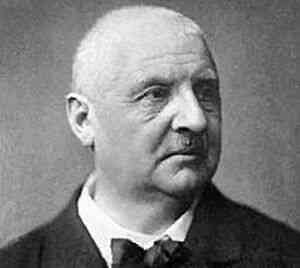 Anton Bruckner Source: Wiener Sängerknaben |
|
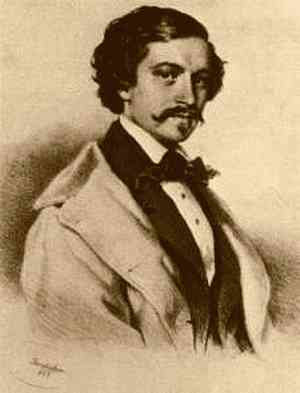 Johann Strauss II Source: Wikipedia |
Born on 25 Oct 1825 in Ulrich near Vienna,
Johann
Strauss II
(also Junior, the Younger or simply Johann Strauss) was son to
Johann Strauss I of the
Strauss musical dynasty
[1,
2,
3,
4]
behind not the waltz, but the Viennese waltz
[1,
2,
3].
The Strauss musical dynasty yet exists in rock guitarist,
Nita Strauss.
Strauss II was also a legitimate son, his father having more children by his mistress
than his wife. Strauss II received a whipping at age seven for playing
violin, his father intending him to become a banker, the life of a musician
too much a gamble with ruin. Upon Strauss I taking a mistress Strauss II
had his mother's blessing to pursue music. He then acquired a succession of a
few teachers, composing a sacred gradual in 1844
['Tu qui regis totum
orbem': audio], also making his debut professional performance that year at the Donmayer Casino in Heitzing
where he performed his Op 1, a waltz titled 'Sinngedichte'
[1,
2,
audio]. Young Strauss lived during a period when all
Europe was coming to odds with the monarchical system of the
Austro-Hungarian Habsburgs. Among his first confrontations with such the
scenario was getting arrested, then acquitted, for performing the
revolutionary anthem, 'La Marseillaise' (1792). Upon his father's death in
1849 Strauss joined his father's orchestra to his own and toured
Austria-Hungary, Poland and Germany, popularly waltzing along alike his
father, nevertheless experiencing a nervous breakdown in 1853. He made the
first of his annual trips to Russia in 1856, touring there each year until
1865. Strauss II composed fifteen complete operettas
[operetta],
as well as three unfinished including his first two: 'Die lustigen Weiber von Wien' (c '68) and 'Romulus' (c
'71). His initial to see stage was 'Indigo und die vierzig Räuber' at the
Theater an der Wien on 10 Feb 1871
[1,
2;
audio;
libretto by Maximilian Steiner borrowed from 'Ali Baba and the Forty Thieves']. Russia wasn't the only frontier Strauss II visited. He is the
first composer in these histories to have crossed the Atlantic to perform in the United States, landing
in New York in June of 1872. He is thought to have prepared for that trip
with a compilation of waltzes called 'Greeting to America'
[1,
2;
audio].
Also conducting in Boston, compositions Strauss is known to have
performed in America with certainty are the 'Jubilee
Waltz' and 'Manhattan Waltzes',
the latter dedicated to the city of New York and premiering on 12 July at
the Academy of Music in New York. The latter is thematically similar to his 'Bouquet No. 1'
later performed in Vienna on 1 January 1873
[*;
audio].
Strauss may have performed his earlier 'Künstlerleben' ('Artist's Life') Op
316 in America as well [1,
2,
3;
audio;
see also 'The Theatre'
*].
Adding to the historical event of a major European composer visiting America was
Strauss' performance at the World's Peace Jubilee and
International Musical Festival in Boston
[1,
2,
3,
4;
Strauss: 1,
2]. The World's Peace Jubilee and
International Musical Festival was arranged by impresario, Patrick Gilmore
[1,
2],
the Peace Jubilee Coliseum [1,
2] erected to that purpose. It was designed to hold
60,000 in audience and 22,000 musicians. It opened to only 15,000. Strauss
is said to have performed Verdi's 'Il Trovatore' with an orchestra of 2,000,
a chorus of 20,000 larger than the audience and a hundred Boston firemen
in red shirts with 100 anvils. The World's Peace Jubilee was also notable in
the hiring of the gospel group, the Fisk Jubilee Singers [1,
2], the first time
black musicians received major billing at a significant venue. Those in the audience who didn't
walk out in disgust were treated to a highly acclaimed performance.
As for Strauss, while in the States he is thought to have compiled 'Farewell to America'
[audio: 1,
2]
before returning to Europe with truly international fame,
"international" now meaning not but German versus Italian composers
competing in London or Paris, but including Russia and the United States as well.
He staged his second complete operetta, 'Der Karneval in Rom', at the
Theater an der Wien on 1 March 1873 w libretto by Josef Braun
[1,
2; audio:
1,
2;
CD].
He premiered his waltz, 'Wiener Blut' Op 354, on 22 April 1873
[1,
2,
3,
4].
'Die Fledermaus' followed at the same theatre on 5 April of '74 w libretto
by Richard Genée and Carl Haffner [1,
2,
3,
4,
5;
audio (Overture)].
Strauss premiered five more operettas in Vienna before a Berlin performance of 'Eine
Nacht in Venedig' ('A Night in Venice') at the Friederich-Wilhelmstädtisches
Theater on 3 October of 1883 w libretto by Camillo Walzel and Richard Genée
[1,
2,
3,
4; audio:
1,
2].
He followed that back at the Theater an der Wien on 24 October 1885 w 'Der
Zigeunerbaron' ('The Gypsy Baron') w libretto by Sydney Rosenfeld
[1,
2,
3,
4; audio:
1,
2].
That made its way to New York for staging at the Casino Theatre in 1886.
Strauss meanwhile
left his 'Der Schelm von Bergen' written circa 1886 unfinished, but
premiered 'Simplicius' at the Theater an der Wien on 17 December 1887
[1,
2,
3,
4;
audio;
DVD].
Libretto was by Victor Léon borrowed from Grimmelshausen's 1668 'Adventurous Simplicissimus'. On
New Year's Day, 1892, Strauss' only opera, his three-hour 'Ritter Pázmán' Op
441 [1,
2; audio:
1,
2], premiered at the
Hofoper in
Vienna w libretto by Ludwig Dóczi based on the Hungarian poem, 'Pázmán Lovag',
by János Arany. 'Fürstin Ninetta' appeared at the Theater an der Wien on 10
January 1893 prior to staging 'Jabuka' on 12 October 1894 w libretto by Max
Kalbeck and Gustav Davis [1,
2,
3;
audio].
Strauss staged his next to last operetta, 'Waldmeister', at the Theater an
der Wien on 4 December 1895 [1,
2;
libretto by Gustav Davis;
audio: 1,
2]. That was followed by his final, 'Die Göttin
der Vernunft', on 13 March 1897 [1,
2,
3; audio:
1,
2,
3;
CD].
Strauss' last work to receive an opus number (numerous unassigned) is his
fantasie, 'Klänge aus der Raimundzeit' Op 479 [1,
2;
audio].
Strauss left his only ballet, 'Aschenbrödel'
['Cinderella': 1,
2,
3;
audio;
CD], unfinished
upon his death of pneumonia on 3 June 1899 in Vienna. His 1873 'Wiener Blut'
was staged again, posthumously, at the Carltheater in Vienna on 26 October
1899. Strauss had composed more
than 500 works including fifteen complete operettas, some eleven
quadrilles, numerous waltzes and polkas, as well as a couple marches.
References: 1,
2,
3.
Compositions: by genre: 1,
2,
3,
4;
by opus: 1,
2,
3;
by title;
operettas.
Editions & scores: English: 1,
2,
3;
French.
Sheet music: 1,
2.
Audio: 1,
2,
3,
4,
5,
6.
Discos: 1,
2,
3,
4,
5,
6.
Strauss in modern media.
Further reading: CLASSIC fM.
Other profiles: English: 1,
2,
3;
French;
German;
Spanish.
Johann Strauss II 'On the Beautiful Blue Danube' 1866 Op 314 Waltz London Philarmonic Orchestra Conductor: Franz Welser-Most 1874 Op 367 Waltz Wiener Philharmoniker/Mariss Jansons G'schichten aus dem Wienerwald 'Tales from the Vienna Woods'1868 Op 325 Waltz The Philadelphia Orchestra/Eugene Ormandy 1891 Op 440 Waltz Slovak State Philharmonic Orchestra 1888 Op 437 Waltz Wiener Philharmoniker/Claudio Abbado 1852 Op 114 Waltz Wiener Philharmoniker/Riccardo Muti 'Mephistopheles Cries from Hell' 1851 Op 101 Waltz Wiener Philharmoniker Gustavo Dudamel 2017 Morgenblätter (Morning Journals) 1863 Op 279 WaltzWiener Philharmoniker/Lorin Maazel 1881 Op 395 Waltz Wiener Philharmoniker/Zubin Mehta Schatz-Walzer (Treasure Waltz) 1885 Op 418 WaltzWiener Johann Strauss-Orchester Willi Boskovsky Tritsch-Tratsch-Polka (Chit Chat) 1858 Op 214 PolkaWiener Philharmoniker Mariss Jansons 1873 Op 354 Waltz Vienna Opera Orchestra/Alfred Scholz Violin: Joseph Francek |
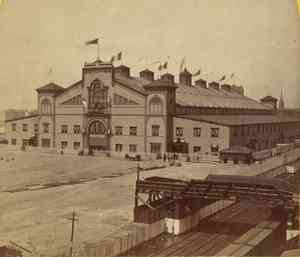 Peace Jubilee Coliseum 1872 Source: Good Old Boston 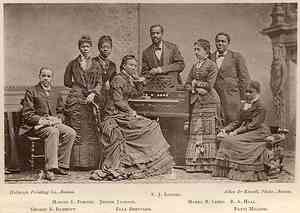 Fisk Jubilee Singers Source: Antiwar Songs |
|
Born on 28 Nov 1829 what is presently Maldova south of
Ukraine,
Anton
Rubinstein's
father owned a pencil factory. He was the brother of composer, Nikolai
Rubinstein. A piano virtuoso, Rubinstein began to play the instrument at age
five. He was eventually placed under the tutorship of music teacher,
Alexander Villoing, who recognized Rubinstein's potential, brought it to
fruition and took him on a tour of Europe in 1940, starting in Paris. A
second tour at age fourteen, confined to Russia, followed in 1843 with his
brother, Nikolai, age eight. Rubinstein's Op 1 is assigned to 'Ondine', an
etude for piano in D flat major composed in '42 and published in '43
[*;
audio].
In 1844 Rubinstein's mother took her boys to Berlin. She returned with
Nikolai to Russia in 1846, Anton leaving a time later for Vienna, hoping to
study with Franz Liszt, to disappointment. He was seventeen at the time and
could no longer be billed as a child prodigy. Persuaded to return to Russia
by the Revolution of 1848, he found a patron in Saint Petersburg in Princess
Charlotte of Württemberg, sister to Tsar Nicholas I. Teaching and giving public concerts as well, by 1852 his was a
leading name in the burgeoning growth of that city's musical climate, not
yet Paris, but with ambitions that would soon see it a major player in
classical music to come. Rubinstein completed his first opera, 'Dmitry Donskoy', in 1852, its overture
composed and performed in 1850 all that has survived
[1,
2;
audio (Overture): 1,
2,
3].
The remainder of the opera was delayed due to Russian censors who wished to
manage the portrayal of Donskoy and rename the work to 'The Battle of
Kulikovo' which Donskoy had won against the Mongol Golden Horde on Sep 8 of
1380. Nigh as soon as Russian composers began their rise to prominence in
romantic classical music "authorities" were there to meddle in the interest
of authority. Such was simply the state of affairs over which Rubenstein
didn't lose any sleep: authorities only wished Donskoy to be portrayed more
a hero than a lover. But the matter reveals the degree to which Russian
government, Tsarist at the time, already expected to influence music, and
raises the matter of the role of government in the music, largely
borderless, of any nation. [Adrian Bryttan touches on such as Donskoy in relation to Russian
propaganda
in modern Ukraine.] Be as may, since the premiere of 'Dmitry Donskoy' (as
'The Battle of Kulikovo') was unsuccessful,
Rubenstein repeated what seemed to work - touring, as of old since the
troubadours - and traveled Europe in 1854. In 1862
Rubinstein founded the St. Petersburg Conservatory [1,
2,
3], a major endeavor that
helped put St. Petersburg on the musical map, despite later detractors such
as
Balakirev and the Free School.
Rubenstein became the second major
composer in these histories to visit the United States in 1872-73 (Strauss
II just prior in the summer of 1872). He left such wind through the States, playing 215 concerts in 239
days at $200 per, as to earn $43,000 (worth well over a million dollars in
today's money). Rubinstein found America wearisomely unsophisticated, an
audience alike one drags along only so long as one must, then went back to
Russia to buy a house (nothing grand considering his wealth). Rubenstein's
survey of America would become a familiar one in Europe for decades to come.
Though notably immature by general consensus in artistic matters, Americans
were notable at something else which appeared a good exchange: the honey
that was money. Americans came a little in the rough, but they came rich and
seemingly free with it. Though
Rubenstein had completed his opera, 'The Demon' ('Демон') in 1871 it didn't
see performance until 25 Jan 1875 at St. Petersburg's Hopfoper
[1,
2,
3,
4;
audio:
1,
2;
CD]. In 1887
Rubenstein
reassumed his position at the Saint Petersburg Conservatory. He resigned
that post in 1891 upon Imperial demand that Conservatory admittance be per
racial quota rather than skill. As that was disadvantageous to Jews, of
which he was one, he moved to Dresden, there to teach as well as give
largely charity concerts in locations in Germany and Austria. Rubinstein
gave his last concert in St. Petersburg on 14 Jan 1894. He died nine months later
on 20 November of heart disease at his home in Petergof (St. Petersburg).
IMSLP lists Rubenstein's final assigned opera composed in 1894 as 'Souvenir
de Dresde for Piano' Op 118 [*;
audio;
score (Polonaise): 1,
2]
and 'Suite for Orchestra' Op 119 [*;
audio: 1,
2,
3;
score].
Writing nearly 20 works for stage, Rubinstein also composed chamber music,
concertos, symphonies and pieces for solo piano or voice.
References: 1,
2.
Compositions:
by genre: 1,
2,
3,
4,
5;
by Opus;
by title: 1,
2.
Authorship: correspondence.
Editions & scores: English: 1,
2,
3;
German: 1,
2.
Sheet music.
Audio: 1,
2,
3,
4,
5,
6,
7;
cylinder.
Discos: 1,
2,
3,
4,
5.
Rubenstein in modern media.
Iconography.
Bibliography: English: 'Anton Rubinstein: An Annotated Catalog of Piano Works and Biography' by Larry Sitsky (Greenwood Publishing Group 1998)
*;
'Anton Rubinstein: A Life in Music' by Philip S. Taylor (Indiana U Press 2007)
*;
Russian (русском): 'Anton Grigorʹevich Rubinshteĭn: ocherk ego zhizni i muzykalʹnoĭ di︠e︡i︠a︡telʹnosti' by Nikolai Fedorovich Fendeizen (P. I︠U︡rgenson 1907)
*.
Other profiles: English: 1,
2,
3,
4,
5,
6;
French;
German;
Russian (русском): 1,
2,
3,
4,
5;
Spanish.
Anton Rubinstein Op 34 Boris Gmyrya 1871 Opera 3 acts Latvian National Opera Normunds Vaicis Op 102 Sonata in D major 1869 Op 79 Symphonic poem Russian State Symphony Orchestra Igor Golovchin 1864 Op 70 3 movements USSR TV & Radio Symphony Orchestra Boris Khaikin Piano: Grigory Ginzburg Piano Concerto 5 in E flat major 1874 Op 94 3 movementsSlovak Radio Symphony Orchestra Bratislava Robert Stankovsky Piano: Joseph Banowetz Sonata for Viola and Piano in F minor 1855 Op 49Piano: Marina Baudoux Viola: Ilario Gastaldello 1854-55 Op 56 Slovak Radio Symphony Orchestra Robert Stankovsky |
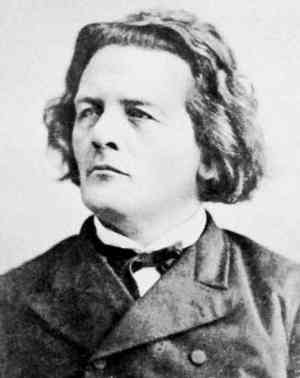 Anton Rubinstein Source: Bach Cantatas |
|
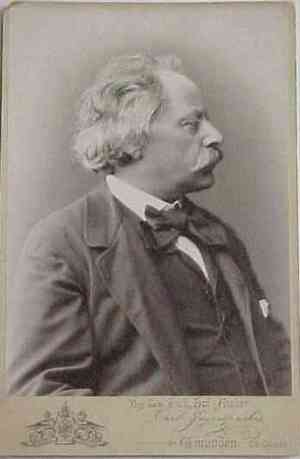 Karl Goldmark Source: Princeton |
Born on 18 May 1830 in Keszthely, Hungary,
Karl Goldmark
was a Jew born of a birthing machine, being one of 20 children. He began to
study violin at an academy in Sopran in 1842. He began his studies in Vienna
in 1846 where he would also teach and become a music critic. IMSLP provides
data to as early as Goldmark's Op 4 composed in the latter fifties, 'Piano
Trio No.1' [1,
2], published in 1865.
Ten opera later arrived 'Suite No.1 for Violin and Piano' in D major Op 11,
published in 1869 [1*;
audio: 1,
2]. Goldmark
premiered his initial opera, 'Die Königin von Saba' ('The Queen of Sheba'),
at the Hofoper in Vienna on 10 March of
1875 [1,
2,
3,
4].
His
'Rustic Wedding Symphony' in E flat major Op 26 was first performed in
Vienna on 5 March 1876 [1,
2,
3;
audio: 1,
2].
The next year he performed and published his 'Violin Concerto No.1' in A
minor Op 28 [1,
2,
3;
audio;
score].
Come his opera, 'Merlin', ten years later on 3 Jan of 1887
[*;
audio;
libretto: 1,
2].
Living well into the 20th century, he apparently began to write the memoir,
'Erinnerungen Aus Meinem Leben', in 1910, published posthumously twelve
years later [1,
2]. IMSLP lists opus number assignments to as late as 'Piano Quintet No.2' in C
sharp minor Op 54 [*;
audio] composed in 1914,
published posthumously in 1916. Goldmark died in Vienna at
eighty-four years of age on 2 January 1915, World War I yet raging. Though not particularly
prolific, he was considerably capable in what he produced.
References: 1,
2.
Compositions:
by genre:
by Opus;
by title: 1,
2.
Editions & scores: English: 1,
2,
3,
4;
Francais: 1,
2.
Audio: 1,
2,
3.
Discos: 1,
2,
3,
4,
5.
Other profiles: English: 'Jewish Encyclopedia':
1904,
1906,
1941;
German;
Hungarian;
Italiano;
Russian.
Karl Goldmark 1894 Op 44 Overture Hungarian Radio Symphony Orchestra Adam Medveczky Symphony 1 (Landliche Hochzeit): 1 'Rustic Wedding Symphony' E flat major1875 Op 26 Hochzeitsmarsch: Variationen Singapore Symphony Orchestra/Lan Shui Symphony 1 (Landliche Hochzeit): 2 'Rustic Wedding Symphony' E flat major1875 Op 26 Brautlied: Intermezzo Singapore Symphony Orchestra/Lan Shui Symphony 1 (Landliche Hochzeit): 3 'Rustic Wedding Symphony' E flat major1875 Op 26 Serenade: Scherzo Singapore Symphony Orchestra/Lan Shui Symphony 1 (Landliche Hochzeit): 4 'Rustic Wedding Symphony' E flat major1875 Op 26 Im Garten: Andante Singapore Symphony Orchestra/Lan Shui Symphony 1 (Landliche Hochzeit): 5 'Rustic Wedding Symphony' E flat major1875 Op 26 Tanz: Finale Singapore Symphony Orchestra/Lan Shui 1887 Op 35 4 movements Rhenish Philharmonic Orchestra Michael Halász 1877 Op 28 3 movements Budapest Festival Orchestra Michael Schonwandt Violin: Joseph Lendvay |
|
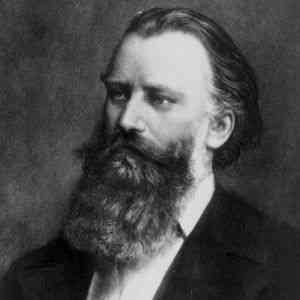 Johannes Brahms Source: Bio |
Born on 7 May 1833 in Hamburg,
Johannes Brahms
had a professional multi-instrumentalist for a father, playing largely horn
and double bass. He began to play piano at age seven. He first began touring
in 1853, soon meeting Franz Liszt in Weimar. Brahms began
living with Robert Schumann
in Düsseldorf in 1853, working with him until the latter's confinement to a
sanatorium the next year. During that time Brahms' Op 1, 'Piano Sonata No.1'
in C major, was performed on 17 Dec 1853 in Leipzig at Gewandhaus
[1,
2;
audio;
score].
Brahms began composing his 'Symphony No.1' Op 68 in 1854 but it wasn't
finished and performed until 1876 (below).
'Piano Sonata No.2' in F sharp minor Op 2 saw performance in Frankfurt in
Dec 1855 [*;
audio: 1,
2,
3;
score]. Upon Schumann's death in 1856 Brahms fell in love
with his widow, Clara, a professional pianist who loved him as well, though
as a son. So he formed and conducted a ladies choir in Hamburg that year,
working as well as a court conductor and teacher in the Principality of Lippe. It was during the fifties and sixties that what came to be called the
War of the Romantics
occurred. Conservatives largely wished to preserve
Schumann's direction,
Brahms' main
man, thereat putting distance away from heroic
Richard Wagner and the remarkable
Franz Liszt. The movement's
'Manifesto', probably written by Brahms, saw publishing in 1860.
It was in that climate that Brahms' 'Piano Concerto No.1' in D minor Op 15
saw its first performance in Hanover on 22 Jan 1859 [1,
2;
audio:
1,
2,
3].
Brahms wrote a setting to the 'Ave Maria' that saw performance on 2 Dec of
1859 in Hanover [*;
audio: 1,
2,
3;
score: 1,
2]. Brahms arrived in Vienna
in 1862, there to become conductor at the Wiener Singakademie (an institute
of vocal training). By that time Brahms was a rich man, largely from
publishing his works. He kept a housemaid but lived in a modest apartment.
His mother died in Feb of 1865, likely inspiring 'A German Requiem' Op 45
first performed in Leipzig at the Gewandhaus on 18 Feb 1868
[1,
2,
3;
audio: 1,
2,
3].
Making his name
throughout Europe with that, from 1872 to 1875 he was concert director for the Gesellschaft der Musikfreunde.
Brahms finally finished 'Symphony No.1' in C Minor
Op 68 in 1876 for premiere on 4 Nov.[1,
2,
3,
4;
audio: 1,
2,
3]. He composed his 'Symphony No.2' in F
sharp minor Op 73 in much less time in the summer of '77, first performed on
30 Dec that year
[1,
2,
3;
audio:
1,
2,
3;
score]. In 1877 Brahms declined an honorary doctorate
from the University of Cambridge, but accepted the same from the University
of Breslau in 1879, composing his 'Academic Festival Overture' Op 80 in
appreciation in 1880 [1,
2; audio:
Chicago SO;
Nuremberg SO]. That was one of a pair written in the summer of
1880, the next being 'Tragic Overture' Op 81 [1,
2;
audio: 1,
2,
3,
4].
Come the first performance of 'Piano Concerto 2' in B flat major Op 83 in
Budapest on 9 Nov 1881 [1,
2,
3,
4;
audio].
'Symphony No.3' in F major Op 90 premiered in Vienna on 2 Dec of 1883
[1,
2,
3,
4,
5;
audio].
'Symphony No.4' in E minor Op 98 followed on 25 Oct 1885
[1,
2,
3;
audio: 1,
2].
Brahms' last work to receive an opus number was 'Eleven Choral Preludes' for
organ Op 122 composed in 1896, performed and published posthumously in 1902
in Vienna [1,
2,
3; audio:
1,
2].
Brahms is the first composer in these histories to have recorded music on
cylinder, that for Thomas Edison on 2 December of 1889
[audio: 1,
2,
3,
4;
signal analysis]. He is not,
however, the first to record music on cylinder. Edison came up w the
phonograph that played his cylinders on 18 July of 1877 [1, 2, 3], the invention that altered the course of music like Gutenberg's printing press put major changes to literature back in the 15th century. The oldest playable cylinder recording is Handel's 'Israel in Egypt' (1739) documented at the Crystal Palace in London by a chorus of 4000 w conducting by August Manns on 29 June of 1888 [audio]. Arthur Sullivan's 'The Lost Chord' may have been recorded in August of 1888 [audio], his Dinner Toast' to Edison on 5 Oct of '88 [audio]. See other early cylinder recordings preceding Brahms as well as the UCSB Cylinder Audio Archive. As for Brahms, he died on 3 April 1897 of cancer. Though raised a Lutheran he is thought to have been agnostic or atheist. In addition to orchestral works noted above he wrote numerously for chamber, piano and voice [song texts: 1, 2, 3]. References: 1, 2, 3, 4. Chronologies: 1, 2, 3, 4, 5. Compositions: alphabetical: English: 1, 2, 3, Finnish, German, Spanish; by genre: English: 1, 2, 3, 4, French; Klassika (German); by Opus: English: 1, 2, 3, French, Russian, Spanish. Editions & scores: English: 1, 2, 3, 4; French; German: 1, 2. Sheet music: 1, 2, 3, 4; choral works. Audio: 1, 2, 3, 4, 5, 6, 7, 8, 9; cylinder. Recordings of: discos: 1, 2, 3, 4 5, 6; 'Organ Works' by Robert Parkins: 1, 2. Brahms in modern media: 1, 2. Iconography: 1, 2, 3, 4, 5, 6. Collections: Brahms Institute. Further reading: CLASSIC fM; Wilhelm Furtwängler (1934); grand piano of; symphonies and; Tcheikovsky and. Bibliography: 'The Music of Brahms' by Michael Musgrave (Routledge 1985); 'The Songs of Johannes Brahms' by Eric Sams (Yale U Press 2000). Societies: American; Austrian; Baden-Baden; Hamburg; Schleswig-Holstein. Other profiles: English: encyclopedic: 1, 2, 3, 4, 5, 6, 7; musical: 1, 2, 3, 4, 5, 6; Finnish; French: 1, 2, 3, 4; German; Russian: 1, 2, 3, 4; 5; Russian archived: 1, 2, 3; Spanish. Brahms' first piano concerto is played by Arthur Rubinstein in Early Modern. Johannes Brahms 1865–68 Op 45 7 movements Philharmonia Chorus London Reinhold Schmid Philharmonia Orchestra London Otto Klemperer 1854–59 Op 15 3 movements Concertgebouw-Orchester Amsterdam Bernard Haitink Piano Concerto 2 in B flat major 1878–81 Op 83 4 movementsWiener Philarmoniker/Leonard Bernstein Piano: Krystian Zimerman 1862–76 Op 68 4 movements Vienna Philharmonic/Istvan Kertesz 1877 Op 73 4 movements SO des BayerischenRundfunks Mariss Jansons 1883 Op 90 4 movements Orchestra of the University of Music Nicolás Pasquet 1884–85 Op 98 4 movements Wiener Philharmoniker/Leonard Bernstein |
|
|
Born in Saint Petersburg on 12 Nov 1833,
Alexander Porfiryevich Borodin
was the illegitimate son of a Georgian nobleman, Luka Gedevanishvili. He was
registered as the son of a serf, Porfiry Borodin, but not neglected. He
entered the Medical–Surgical Academy in Saint Petersburg to study chemistry
in 1850. Upon graduation he served for a year as a surgeon at a military
hospital, then undertook three years of advanced study in western Europe. He
assumed the chair in chemistry at the Imperial Medical-Surgical Academy in
1862, the same year he studied with
Mily Balakirev
and began composing, to become one
Balakirev's
Mighty Handful (The Five), a group of musicians who set themselves the
challenge of composing in manner peculiar to Russia, distinct from western
Europe. The remarkable thing about Borodin was that he was a serious
chemical scientist highly accomplished in that field whilst at once
producing an oeuvre in music that alone would have been a life well spent.
He himself describing his music as "relaxation from more serious
occupations," Borodin went unknown in Europe and left behind a number of
unfinished works to be completed by either Alexander Glazunov or
Rimsky-Korsakov,
both with whom he collaborated. Borodin wrote his first of four operas, 'The
Tsar's Bride', in 1867-68, incomplete and now lost, nor to be confused w
Rimsky-Korsakov's
'The Tsar's Bride' of 1898.
The only opera that Borodin completed, 'Bogatyri' ('The Heroic Warriors'), was
largely based on the work of other composers, premiering at the Bolshoi
Theatre on 6 November 1867 w libretto by Viktor Krylov
[1,
2]. Though he'd begun composing 'Symphony
No.1' in E flat major in 1862, it wasn't
performed until 1869 at a concert of Imperial Russian Music, conducted by
his mentor,
Balakirev [1,
2;
audio].
His second opera was actually only Act 4 of 'Mlada', a collaboration
of acts divided in 1872 between himself,
César Cui,
Modest Mussorgsky
and Rimsky-Korsakov
that was never finished nor staged, nor to be confused w
Rimsky-Korsakov's
'Mlada' of 1892.
Borodin's second of four orchestral works was 'Symphony No.2'. Begun in
1869, it eventually saw its premiere on 10 March of 1877
[1,
2;
audio: 1
(More about),
2].
His next was the symphonic poem, 'In the Steppes of Central Asia'
[1,
2,
3,
4;
audio: 1,
2,
3]. Dedicated
to
Franz Liszt
whom he'd met in the summer of 1875, that saw conducting by
Rimsky-Korsakov
in St. Petersburg on 20 April 1880. 'String Quartet No.2' in D major was
composed and published in 1881 [1,
2;
audio
1,
2,
3].
IMSLP has his 'String Quartet No.1' in A major written from 1874 to 1879 but
not published until 1884
[*;
audio: 1,
2,
3;
score].
He had dedicated that to
Rimsky-Korsakov's
wife. His 'Petite Suite' saw print in 1885 dedicated to Countess Louise de
Mercy-Argenteau of Belgium [1,
2,
3;
audio;
score]. Among Borodin's
scherzo's was
'Scherzo' in A Flat major, that also published in 1885 [1,
2;
audio: 1,
2;
see also scherzo].
Borodin had begun working on 'Symphony No. 3' in A minor in '82, eventually
published in 1889 [1,
2;
audio: 1,
2,
3,
4].
Borodin's last operatic work, 'Prince Igor', was left incomplete upon his
death on 27 Feb 1887 in St. Petersburg. It was first performed posthumously
on 4 Nov 1890 in St. Petersburg at the Mariinsky Theatre after editing and completion by
Glazunov (above) and
Rimsky-Korsakov.
Conducting was Karl Kuchera [1,
2,
3,
4,
5,
6,
7 (Russian);
live performance by the Kirov Opera Company & Kirov Ballet;
score: 1,
2;
text by Borodin.
The most popular section of 'Prince Igor' is 'Polovtsian Dances' at the end of
Act 2 [*;
audio: 1,
2,
3,
4,
5;
scores]. Borodin also wrote some 13 chamber works and a
nice number of solo pieces for piano and voice
[song texts].
References: English: 1,
2,
3,
4,
'Aleksandr Porfir’evich Borodin: A Chemist’s Biography' by N.A. Figurovskii and Yu.I. Solov'ev (Springer Science & Business Media 2012)
*;
Russian.
Compositions:
chronological;
by genre English: 1,
2,
3,
4;
German;
Japanese;
Russian;
by title;
Klassika: English,
German;
operas.
Authorship (chemistry): 1,
2;
'A Simplification of Azotometric Method' (1886): 1,
2.
Editions & scores: English: 1,
2;
French: 1,
2;
German: 1,
2.
Sheet music.
Audio: 1,
2,
3.
Recordings of:
discos: 1,
2,
3,
4,
5; review of
'Symphonies Nos. 1, 2 and 3' by the Slovak Radio Symphony Orchestra w Stephen Gunzenhauser
conducting arrangements by
Alexander Glazunov.
Performances of on Broadway.
Usage in modern media.
Further reading: Borodin as chemist: English,
Italian;
CLASSIC fM;
Tchaikovsky Research.
Iconography: 1,
2.
See also the Borodin (State) Quartet formed in 1945: 1,
2,
3,
4,
5.
Other profiles: English: 1,
2,
3,
4,
5,
6,
7,
8;
German;
Italian: 1,
2;
Japanese;
Norwegian;
Russian: 1,
2;
Russian Wikisource:
1,
2,
3;
Spanish.
Alexander Borodin In the Steppes of Central Asia 1880 Symphonic poemUSSR Symphony Orchestra Evgeny Svetlanov 1869-87 Opera State Academic Bolshoi Theatre of Russia Musical director: Vassily Sinaisky Stage director: Yuri Lyubimov 1877 Moscow String Quartet 1881 Cleveland Quartet 1862–67 USSR State TV & Radio Symphony Orchestra Gennady Rozhdestvensky 1869-76 Royal Concertgebouw Orchestra Karel Mark Chichon |
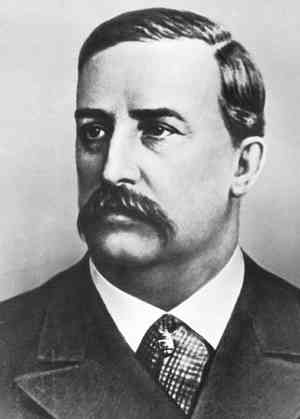 Alexander Borodin Source: Le Blog de JazzNicknames |
|
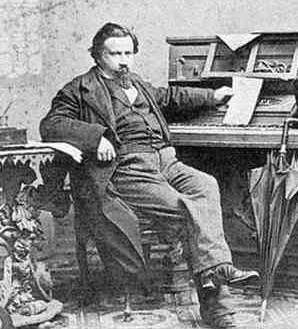 Amilcare Ponchielli Source: Last Verista |
Born near Cremona, Italy, on 31 August 1834,
Amilcare Ponchielli
won a scholarship to study at the Milan Conservatory at age nine. He'd
written his first symphony by age ten. Klassika has Ponchielli composing his
Op 1 from 1850 to 1854, an obscure opera titled 'Maometto'. He was seventeen when one of his
tasks at the Conservatory was the introduction along with an aria toward 'Il Sindaco Babbeo', an operatic collaboration with three other students that
premiered in March of 1851. Graduating from the Conservatory in 1852, he
filled dead-end jobs as he ventured into his early career, also working as a bandmaster in Piacenza and Cremona. His
second opera, 'I Promessi Sposi' ('The Betrothed') Op 2, appeared at the Teatro Concordia in
Cremona on 30 August 1856 [1,
2,
3,
4;
audio;
libretto]. Ponchielli yet wanted experience in opera such
that his later 1872 revision came to considerably greater success.
Ponchielli premiered three more operas before his set of variations for
various instruments, 'Carnevale di Venezia'
Op 140, arrived in April of 1868.
His 'Concerto per Flicorno Basso' (euphonium)
Op 155 saw its first
performance on 17 March of 1872 [1,
2].
He solidified his position in Milan in '72 via contacts with music
publisher, Ricordi & Company, the Conservatory establishment and the Teatro
alla Scala. Ponchielli premiered his sixth opera, 'I Lituani' ('The
Lithuanians') Op 7, at La Scala in Milan on 7
March 1874 [1,
2,
3,
4,
5;
audio].
His opera, 'I Mori di Valenza
Come' Op 8, of 1874 was left unfinished, later completed by his son,
Annibale Ponchielli, and Arturo Cadore to eventually premiere at the Théâtre
du Casino in Monaco on 17 March 1914. 'La Gioconda' Op 9 was performed at La Scala on 8 April 1876
[1,
2,
3;
audio: 1,
2,
3,
4;
libretto], that including the
Finale, 'Dance of the Hours' [audio: 1,
2;
live performance
by the Orchestra del Teatro La Fenice directed by Lorin Maazel].
'Dance of the Hours' was featured in Walt Disney's animation extravaganza,
'Fantasia', in 1940. 'Il Figliuol Prodigo' Op 10 w libretto by Angelo Zanardini premiered at La
Scala on 26 December 1880 [1,
2;
audio]. 1881 brought a radical change from working for stage when
Ponchielli became maestro di cappella at Bergamo Cathedral. He also began
teaching composition at the Milan Conservatory that year. He premiered his
final opera, 'Marion Delorme' Op 11, at La Scala on 17 March 1885
[1,
2,
3].
Ponchielli died of pneumonia the next year on 16 Jan 1886 in Milan.
References: English: 1,
2;
Japanese.
Compositions:
by genre: 1,
2;
by title: 1,
2;
operas: 1,
2,
3.
Editions & scores: English: 1,
2,
3,
4;
French;
German;
Italian.
Sheet music: 1,
2.
Audio: 1,
2,
3,
4,
5;
cylinder.
Discos: 1,
2,
3,
4,
5.
Ponchielli in modern media:
film;
video games.
Other profiles: English: 1,
2;
Finnish;
French;
German;
Italian: 1,
2;
Treccani: 1,
2;
Russian: 1,
2;
Spanish.
See also: Project a Ponchielli.
Amilcare Ponchielli 1889? Op 80 Oboe: Gianfranco Bortolato Piano: Riccardo Caramella 1865 Op 76 3 movements Clarinet: Philippe Cuper & Jean Luc Votano 1885 Opera 4 acts Latvian Radio Chorus Montpellier Opera Chorus Orchestre du Languedoc Roussillon Friedemann Layer 1876 Op 9 Opera 4 acts C & O del Teatro alla Scala di Milano Piero Cappuccilli Antonino Votto |
|
|
Born on 18 January 1835 in present-day Lithuania,
César Cui
had a French soldier in the Napoleonic army for a father, who had remained
in Russia upon Napoleon's defeat in 1812. Cui began his own career in the
military at age 16, entering the Chief Engineering School in Saint
Petersburg. After further studies at what is presently the Military
Engineering-Technical University, Cui entered the service as an instructor
in fortifications in 1857. He would eventually attain the rank of general in
1906. But in 1856 he had met
Mily Balakirev
and begun composing. He had experimented with composition since a teenager,
but now it became an intent and mature pursuit.
Balakirev
was beginning to shape what became known as The Five, a group of composers
to which Cui belonged which interest was Russian individuality in
composition versus the conservatory-bred music of western Europe. Classical
music had seen it's medieval apex in France, its early Renaissance in the
Low Countries to full bloom in Italy, the Germanic in general at the wheel
during the Baroque and Classical, and now Russia wanted to hog the Romantic
minus Mozart. Cui's first publicly performed composition was 'Scherzo 1' Op 1,
a piano 4 hands composed in 1857 and published in 1859
[*;
audio:
1,
2].
He began his opera, 'Prisoner of the Caucasus' in 1857 though that wouldn't
be finished until 1883 (below). Come his incomplete 'Neuhausen Castle' in
1859 though 'The Mandarin's Son' privately premiered on 6 March that year in
St. Petersburg [1,
2;
audio
(overture);
score]. He wrote his first of nigh 800 articles in music
criticism in 1864. It appeared in the 'Vedomosti' in Saint Petersburg, Russia's first newspaper established 1702-03. He also wrote some ten
texts during his life concerning military fortifications
[authorship]. Cui's
next of seventeen operas was 'William Radcliff' [1,
2;
audio] staged on 26 Feb 1869 at the Mariinsky
Theatre [1,
2,
3] in Saint Petersburg.
The Mariinsky Theatre was only nine years old at the time, having held its
grand opening on 2 April of 1860 w a performance of
Mikhail Glinka's
'A Life for the Tsar'. 'Mlada'
was a collaboration
of acts divided in 1872 between Cui,
Alexander Borodin,
Modest Mussorgsky
and Rimsky-Korsakov
that was never finished nor staged, nor to be confused w
Rimsky-Korsakov's
'Mlada'
of 1892. Come 'Angelo' at the Mariinsky on 1 February 1876 [1,
2]
with libretto by Viktor Burenin from Victor Hugo's play of the same name. It
was 16 Feb of 1883 when Cui's 'Prisoner of the Caucasus' [1,
2;
audio
(overture)] finally saw production at the Mariinsky, Cui having begun the
first and third acts back in 1857. That same year ('83) he and
Rimsky-Korsakov
resigned from the Mariinsky Theatre selection committee due to its rejection of
Mussorgsky's
'Khovanshchina'. Cui's 'Le Flibustier' premiered in Paris on 22
Feb 1894 [1,
2]
w libretto by Jean Richepin. Works by Cui other than operas include 'Kaleidoscope'
Op 50, a set of 24 pieces for violin and piano published in 1894
[1,
2,
audio;
scores].
From 1896 to 1904 Cui directed the Russian Musical Society, Russia's first
public music school founded back in 1859. Among choral works was his 'Pesn'
Presvyatïya Bogoroditsï' ('Song of the Most Holy Theotokos') Op 93 of 1914
[audio: 1,
2,
3].
Cui's next to last opera was written for children to perform, 'Ivan the
Fool' [1,
2] w libretto by Nadezhda Nikolaevna Dolomanova. Ivan the Fool is a
Russian folklore character whom the author(s) at Wikipedia
relate to the modern blonde joke, such as: "If a brunette and a blonde fall
off a skyscraper at the same time, which splatters first? . . . The brunette,
since the blonde has to stop to ask for directions."
'Puss in Boots' was Cui's final opera, a fairy tale for children staged in
Rome in 1915 as Il gatto con gli stivali' [1,
2;
audio]. Cui began composing by dictation in 1916,
becoming blind. His last assigned opus is of that year, 'Petite Sonatine' for
keyboard Op 106. Cui died on 13 March 1918 in Petrograd nine months before
the end of World War I. Along with
operas, choral works and pieces for keyboard or voice he wrote for chamber
and orchestra. References: 1,
2,
3.
Compositions:
by genre 1,
2;
by Opus: 1;
2,
3;
by title: 1,
2,
operas: 1,
2,
3.
Editions & scores: English: 1,
2,
3;
French: 1,
2.
Audio: 1,
2,
3.
Discos: 1,
2,
3,
4,
5.
Further reading: Lyle K. Neff (operas): 1,
2;
'Russian Elements in Selected Piano Compositions' by
Raymond T. Ryder;
Tchaikovsky Research.
Other profiles: English: 1,
2,
3,
4,
5;
Galician.
César Cui 1903 Op 64 Piano: Lyle Neff 1903 Op 64 Piano: Jeffrey Biegel 1903 Op 64 Piano: Margaret Fingerhut 1903 Op 64 Piano: Margaret Fingerhut 1903 Op 64 Piano: Miguel Ángel Barca Sancho 1893 Op 50 Piano: Aaron Shorr Violin: Peter Sheppard Suite concertante for violin: 1-2 1884 Op 25Hong Kong Philharmonic Orchestra Conductor: Kenneth Schermerhorn Violin: Takako Nishizaki Suite concertante for violin: 3-4 1884 Op 25Hong Kong Philharmonic Orchestra Conductor: Kenneth Schermerhorn Violin: Takako Nishizaki |
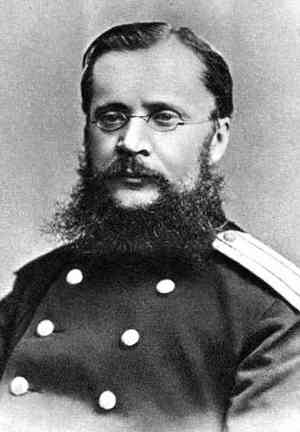 Cesar Cui Source: Find a Grave |
|
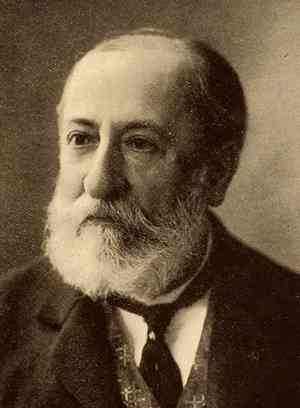 Camille Saint-Saens Source: M Files |
Born in Paris on 9 Oct 1835,
Camille
Saint-Saëns
was the only child of an official in the Ministry of Interior who died when
Camille was not yet two months old. He was, however, a
prodigy who started playing piano at age two. Beginning to compose at age
three, his earliest surviving composition is dated 22 March 1839 when he was
age four, that a piece for piano housed at the Bibliotheque Nationale de
France. At age ten Saint-Saens made his public debut at the Salle Playel
with renditions of
Beethoven's
'Piano Concerto No.3' (comp 1800) and
Mozart's 'Piano
Concerto No.15' in B flat major (K 450 comp 1784). He matriculated into the
Paris Conservatoire at age 13 in 1848. He there studied organ while
composing numerous works dated circa 1850 including a choral titled 'Les Djinns'
after the poem by Victor Hugo,
an Overture in E minor, a Scherzo in A major and his 'Symphony in A major' R
159 [1,
2,
3;
audio: 1,
2].
R numbers in Saint-Saens are per Sabina Ratner's Thematic Catalogue of 2002
published by Oxford University Press. Saint-Saens' Op 1, however, isn't assigned an R
number, '3 Morceaux pour Harmonium' composed in 1852, published in 1858
[1,
2;
audio;
score]. Upon graduating from the Conservatoire in
1853 Saint-Saens became an organist at the Church of Saint-Merri. With more
than 26,000 parishioners in that church, basic stipend plus funerals plus a
couple hundred marriages per year made Saint-Saens a comfortable musician.
His 'Symphony No. 1' in E flat major Op 2 was first performed on 18 Dec 1853
[1,
2;
audio].
'Symphony No. 2' in A minor Op 55 arrived to the Salle Pleyel in Paris on 25
March 1860 [1,
2,
3;
audio]. In 1861 he began teaching at the École de Musique Classique et Religieuse, a
school founded by Louis Niedermeyer in 1853. He performed his 'Piano
Concerto No.2' in G minor Op 22 R 190 w Anton Rubinstein conducting on
13 May 1868 [1,
2,
3;
audio: 1,
2]. In 1870 the Franco-Prussian
War began [1,
2,
3,
4,
5,
6], Saint-Saens serving in the French militia. His
tone poem (symphonic poem),
'Le Rouet d'Omphale' in A major Op 31, appeared in 1871, performed in 1872
[1,
2,
3;
audio: 1,
2]. Saint-Saens first ventured into
theatre with the brief one-act 'Yellow Princess' Op 30 premiering at Opéra Comique
(Salle Favart Theatre) in Paris on 12 June 1872 [1,
2;
audio]. 1874
brought another of his four symphonic poems, 'Danse Macabre' in G
minor Op 40 [1,
2,
3;
audio],
published the next year. During
the sixties and early seventies Saint-Saens had been living with his mother
in a large fourth-story apartment. In 1875 that changed, Saint-Saens
entering into an unhappy marriage. His first full-length opera arrived to
the Théâtre de la Gaîté on 23 Feb 1877 per 'Le Timbre d'Argent' ('The Silver Bell')
[1,
2,
3;
audio].
Saint-Saens had composed that back in '65 w libretto by Jules Barbier
and Michel Carré. He dedicated the
work to one Albert Libon, who died three months later, leaving Saint-Saens a
beneficiary of his legacy such that he would never have to be employed
again. That working out better than his marriage, he quit playing church
organ altogether in '77 and premiered his next opera, 'Samson et Dalila' Op
47, at the Grand Ducal Grossherzogliches Theater (now the Staatskapelle) in Weimar
on 2 Dec 1877 [1,
2,
3;
audio]. He was elected to the Institut de France in
1881, the same year he permanently parted from his wife. Possibly his most famous work was for chamber, 'The Carnival of the
Animals' R 125 which initial private performance was held on 9 March 1886
[1,
2,
3;
audio: 1,
2,
3].
Movement 13 of 14 entire is his popular 'Le Cygne'
['The Swan': *;
audio]. Saint-Seans
conducted his concertante [def],
'Symphony No.3' ('Organ Symphony') in E minor Op 78 in London
at St. James Hall on 19 May 1886 [1,
2,
3;
audio],
that a huge
success and the first of a number of notable appearances in England.
Saint-Saens published his prose work 'Portraits et Souvenirs' in 1900
[1,
2].
He is the earliest-born composer in these histories to record, not on cylinder,
but flat disc, the latter for G & T [Gramophone and Typewriter Company:
1,
2,
3,
4,
5]
in 1904 including 'Africa',
'Piano Concerto No.2' and
'Rhapsodie d'Auvergne'.
(He isn't, however, the first classical composer of note to document
his music on flat disc.
DAHR
has 'The Thunderer March' going down by the Souza Band on Berliner
matrix 30 on 10 August 1897. Female composer and pianist, Cecil Chaminade,
recorded on flat disc in London in 1901 followed by
Edvard Grieg
in 1903 ('To Spring' et al).
Claude Debussy recorded 'Pelleas et Melisande' sometime in
1904, a duet w soprano, Mary Garden.
See Saint-Saens and early flat disc classical recording at 1,
2
(alt);
disco. The main discographical authority on the internet in early
flat disc recording is DAHR
(Discography of American Historical Recordings) by the ADP (American
Discography Project) at the University of California Santa Barbara which
documents Saint-Saens recording four more titles for Gramophone on 24 Nov of
1919 [*].
Saint-Saens is also the earliest-born composer in these histories to appear
in film, that a silent produced in 1914 by Sacha Guitry of
Saint-Saens performing 'Valse Mignonne'
Op 104 (1896). That is synched by an unknown to his 1919 recording of the same at
Jack Gibbons YouTube (highlight). Having entered the 20th century yet touring throughout
Europe, Saint-Saens is also among the earliest composers in these histories to
have visited the United States, reaching New York in 1906 and 1909 to
considerable celebration. Others preceding him to America had been
Johann
Strauss II in the summer of 1872, Rubinstein
later that year,
Leopold Godowsky in 1884,
Kreisler in 1888,
Busoni,
Paderewski and Tchaikovsky
in 1891, and Dvorák in 1892.
Saint-Saens' endeavor to boycott German music from Paris during World War I had
little success. In 1915 he published his text, 'On the Execution of Music,
and Principally of Ancient Music' [*],
the same year his conservatism put distance between himself and a younger
generation of composers including
Debussy,
comparing the latter's "atrocious" 'En Blanc et Noir' of 1815 to
Cubism.
In 1919 he published 'Musical Memories' [1,
2]. He gave his last concert in Paris at age 86, as lively as
ever, then went to Algiers where he died of heart attack on 16 December 1921,
the earliest-born composer in these histories to live past World War I.
His last assigned Opus is 'Feuillet d'Album' Op 169 published posthumously
in 1922 [*;
audio;
score: 1,
2].
His prodigious oeuvre also includes chorals and solo pieces for voice. True to
musical practice since the troubadours,
Saint-Saens toured extensively, said to have performed in 27 countries,
placing him among the first truly international classical musicians.
References: 1,
2,
3,
4;
'Danse Macabre and Other Works for Solo Piano' by Victor Rangel-Ribeiro (Dover Publications 1999)
1999/2013).
Compositions:
by genre: 1,
2,
3,
4,
Russian;
by Opus:
by title;
Klassica (Deutsch).
Editions & scores: English: 1,
2,
3,
4;
French: 1,
2.
Sheet music: 1,
2,
choral.
Audio: 1,
2,
3,
4,
5,
6,
7,
recommend.
Discos: 1,
2,
3,
4.
Usage in modern media.
My Nicholas.
Tchaikovsky Research.
Other profiles: English: encyclopedic: 1,
2,
3,
4,
5,
6;
musical: 1,
2,
3,
4,
5,
6;
Estonian;
Finnish;
French;
Russian: 1,
2.
Saint-Saens' second piano concerto is
performed by Arthur Rubinstein in
Early Modern. R
numbers below per Sabina Ratner's Thematic Catalogue of 2002. Camille Saint-Saëns 1886 R 125 Chamber Ensemble Music Academy Piano: Daniel Gasparovic & Nikola Kos 1874 R 171 Op 40 Symphonic poem in G minor Marcin Józef Zebrowski Music School Zygmunt Nitkiewicz 1858-96 Op 103 Concertgebouw Orchestra Piano: Jean-Yves Thibaudet 'The Spinning Wheel of Omphale' 1872 R 169 Op 31 Symphonic poem in A major Philharmonia Orchestra/Charles Dutoit 1853 Op 2 Orchestra: Wiener Symphoniker Georges Prêtre 1859 Op 55 Orchestre National de l'ORTF Jean Martinon 1886 R 176 Op 78 'Organ Symphony' South German Philharmonic Orchestra Alfred Scholz Organ: Walter Neumann |
|
|
Born on 2 Jan 1836 in Nizhny Novgorod about 260 miles
east of Moscow,
Mily Balakirev
was leader of The Five
[the
Mighty Handful:
1,
2,
3,
4,
5,
6,
7,
Russian,
Spanish] which group concerned itself
with weaning composition away from western European conservatory-grown
standards to give it a Russian character of its own. The other members of
that group were
Alexander Borodin,
César Cui, Modest
Mussorgsky and
Rimsky-Korsakov. Though a champion of
Mikhail Glinka,
Balakirev was largely an autodidact in composition, having no
use for academic routine. Emphasizing individual direction from brick one
would find Balakirev in conflict with
Anton Rubinstein's St. Petersburg Conservatory
founded in 1862
[1,
2,
3].
Another major factor in his work was, as indicated, his firm sense of
Russian nationalism. Though Balakirev's father
who would die in 1869 was of a line of Russian
nobility a few centuries old he occupied only the status of a titular
councilor, the civilian equivalent of a military captain in Peter the
Great's Table of Ranks created in 1722
[1,
2;
table: 1,
2,
3].
Such the rank meant that Mily's father couldn't exceed his station in appointment to a
government position, nor be passed up by someone of lower rank. His noble
status, however, was no guarantee of a noble lifestyle, David Wright
describing him as a poor clerk, Mily himself to struggle with poverty. Mily's mother, of a more
recent line of "nobility" than her husband, began to instruct him in piano when he was age four. He first saw
Moscow for piano instruction at age ten, and was boarded at the Alexandrovsky Institute upon his mother's death
of smallpox in 1847. Balakirev led his first
performance, Mozart's
'Requiem Mass in D minor', at age fourteen. His earliest surviving pieces
were composed at age fourteen in 1852, an incomplete septet and 'Grande Fantasie on
Russian Folksongs' Op 4 [1,
2,
3;
audio;
score: 1,
2],
the latter not published until 1954. He matriculated into the University of Kazan, about 450
miles east of Moscow, in 1853. Studying mathematics, he also began teaching
piano. In 1855 he met Glinka
on a trip to St. Petersburg, thereat encouraged to exchange math for music.
The next year saw the unfinished writing of his Op 1, 'Piano
Concerto No.1' in F sharp minor [1,
2;
audio;
score],
one movement of which he performed at the University of Kazan in February of
1856. IMSLP has 'Piano Concerto No.1' waiting until 1952 to be published. It was 1856
when The Five (above) came together with blessings from Alexander Serov and
Dargomyzhsky. IMSLP has
Balakirev composing 'Polka in F sharp
minor in 1857, the date of 1859 at multiple sources including IMSLP perhaps
referring to publication [*;
audio: 1,
2,
3].
Balakirev composed his 'Overture on 3 Russian (Folk) Themes No.1' ('Увертюра
на трёх русских народных песен') in 1858, not published until 1882
[*;
audio: 1,
2;
score]. His
second overture on Russian themes followed in 1864. Relevantly,
Rimsky-Korsakov also
composed an 'Overture on 3 Russian Themes', his Op 28 of 1866
[audio]. Balakirev first published
in 1859, a set of 12 unidentified songs. He also composed 'Hebrew Melody' No.13
in '59 [audio], that set to Lord George Byron's 'My Soul Is Dark' from his collection of 30
poems in 'Hebrew Melodies' published in 1815 [1,
2]. With Byron's
text translated
by Mikhail Lermontov, AllMusic has 'Hebrew Melody' published in 1861,
apparently one of '20 Songs'
[*;
audio].
According to Richard Stokes,
Balakirev set music to only one of
Byron's 'Hebrew Melodies'. Balakirev
formed the Free School of Music in 1861 w Garial Lomakin, such become needful to establish
legitimacy amidst the greater prestige of musical institutions in general. Balakirev
directed the orchestral part of things, Lomakin the choral.
Anton Rubinstein's
Russian Musical Society
(RMS) was also in
the operation of education and giving concerts, the difference that
Balakirev's school emphasized singing and was, as implied in its name, less
conservative and tuition-free. Notable in 1864 was his eloquent
transcription of 'The Lark'
[audio]
that was Song 10 of 12 in Glinka's 1840 'A Farewell to Saint Petersburg'
[*].
Balakirev had also begun to write 'Symphony No.1' in C Major in 1864, not to
be finished for another thirty-three years toward its first performance in
St. Petersburg on 23 April 1898 [1,
2;
audio: 1,
2;
CD]. Balakirev's 'Collection of Russian Folksongs' saw print in 1866
[*],
the year he made an adversary of Smetana w a criticism of the latter's
production of
Glinka's 1836
'A Life for the Tsar' [*]. From 1867 to '69 he shared directorship of
Rubinstein's
Russian Musical Society (RMS)
with Nikolai Zaremba, even as his Free School was an emphatic rival, he
assuming full directorship in 1867 upon Lomakin's resignation. Balakirev's
piano piece, 'Islamey' Op 18, saw performance at his Free School in Moscow
on 12 Dec 1869, although including passages that Balakirev, a virtuoso,
couldn't himself play [1,
2,
3,
4,
5;
audio: 1,
2,
3,
4;
score]. 1871
saw Balakirev collapsing from the drive, he removing himself from the music
profession, though he had to take a job as a railroad clerk in Warsaw the
next year. His mother died and he joined the Russian Orthodox Church that
year as well. Rimsky-Korsakov
assumed his vacant spot as director of the Free School in 1874. He slowly
waded back into the music profession as a private teacher of theory in 1876.
Resuming his place at the Free School in 1881, he finished the Oriental symphonic
poem on which he'd been working since '67, 'Tamara', in 1882 [1,
2,
3,
4,
5;
audio:
1,
2,
3].
Balakirev became director of the Imperial Chapel Choir in 1883, also
conducting for the Imperial Music Society. Retiring from the Imperial Chapel
in 1895, he entered the 20th century composing waltzes, his Waltz
No.1 in G major arriving in 1900 [*;
1,
2;
audio of Balakirev's waltzes
entire]. It was 1907 when his third version of the symphonic poem, 'Rus'
('Russia'), arrived [*;
audio].
That had developed from out of his second Overture
on Russian themes in 1864 toward its first version in 1869 as a "musical
picture" rather than symphonic poem called '1000 Years'. It's second version
of 1990 was titled 'Rus'. Balakirev had begun his 'Symphony No.2' in D minor
in 1900 toward its completion in 1908, its first performance in 1909 in St.
Petersburg conducted by his student, Sergei Liapunov
[1,
2;
audio: 1,
2
3;
CD by the Russian State Symphony Orchestra w Igor Golovschin conducting:
*;
review].
Balakirev died on 29 May 1910 and was buried in St.
Petersburg. Among his more important professional associations beyond The
Five had been Tchaikovsky
[Tchaikovsky Research].
He had been a kind man to the point of becoming a vegetarian, though he was
anti-Semitic, accepting no Jews at the Free School. References: 1,
2,
3.
Compositions: alphabetical: 1,
2;
chronological: 1,
2;
by genre: 1,
2,
Russian.
Editions & scores: 1,
2,
French.
Sheet music: 1,
2.
Song texts.
Audio: 1,
2,
3,
4,
5,
6,
7.
Recordings of: discos: 1,
2;
'Balakirev: Complete Romances 1855-1909' *.
Further reading: Austin M. Doub on the Mighty Bunch;
Robert Greenberg (biographical);
'The Penguin Book of English Song' by Richard Stokes (Penguin UK 2016).
Other profiles: English: 1,
2,
3,
4,
5,
6;
French;
Russian: 1,
2,
3,
4,
5,
6,
7.
Per below, a humoresque is simply a brief and stimulating piece of music
[def: 1,
2]. The
Mazurka is a lively Polish dance in triple time
[def: 1,
2]. Mily Balakirev 1903 Humoresque Piano: Alexander Paley 1869 Op 18 Fantasie for piano Piano: Sandro Russo 1864-1906 Piano: Alexander Paley 1898 B flat minor Piano: Alexander Paley 1901 Piano: Alexander Paley 1902 Piano: Ryan Layne Whitney 1858 State Academic Symphony Orchestra Evgeny Svetlanov 1863–64 Revised 1890 & 1907 Symphonic poem State Academic Symphony Orchestra Evgeny Svetlanov 1: 1856 2: 1900 3: 1901 Piano: Alexander Paley 1864–66 1893–97 4 movements Russian State Symphony Orchestra Igor Golovschin 1908 4 movements Russian State Symphony Orchestra Igor Golovschin 1867–82 Symphonic poem Russian State Symphony Orchestra Igor Golovschin |
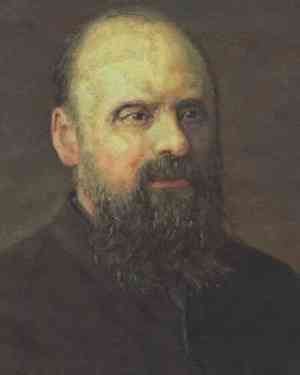 Mily Balakirev Source: America Pink |
|
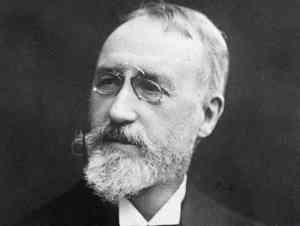 Theodore Dubois Source: Mixtur |
Born on 24 August 1837 in Rosnay in northeastern France,
Théodore Dubois
initially studied at Reims cathedral under Louis Fanart, then the Paris
Conservatoire under composer,
Ambroise Thomas ('Mignon', 'Hamlet'). Winning the Prix de Rome
scholarship in 1861 found him studying in Italy. One fine example of his
work during his early career is his oratorio of 1867, 'The Seven Last Words
of Christ' [1,
2], which final movement is 'Adoramus te, Christe' ('Christ, We
Do All Adore Thee') [*;
audio;
score: 1,
2,
3]. The original Latin text may well precede 990 AD by an
unknown author, translated into English by Theodore Baker in 1899.
In 1868 he became choirmaster at the Church of the Madeleine, at the
Basilica of Sainte-Clotilde in 1871, also teaching at the Paris
Conservatoire. Returning to the Church of the Madeleine as an organist in
1877. Into his prime he premiered another oratorio, his 'Le Paradis Perdu', in Paris in 1878
[*;
audio: 1,
2]. in 1896 he became director of the Paris Conservatoire until 1905.
Among samples of his latter works is his academic 'Treatise on Counterpoint
and Fugue' published in 1901 in Paris by Heugel.
[*; editions:
1,
2,
3]. Dubois largely composed chamber, orchestral works
and operas along w a couple ballets and sacred music including Masses. Among the more obscure composers, Dubois
is an
apt example of firm French academic during the Romantic period. He passed
away on
11 June
1924. References: Wikipedia.
Compositions: alphabetical: 1,
2,
3;
by genre: 1,
2;
by instrument;
w scores;
auf Deutsch.
Editions & scores: English: 1,
2,
3,
4,
5,
6;
French: 1,
2.
Authorship.
Sheet music.
Audio: 1,
2,
3,
4,
5,
6,
7.
Discos: 1,
2,
3,
4,
5.
Iconography: 1,
2.
Other profiles: English: 1,
2,
3;
French: 1,
2,
3;
German.
Italian.
Russian: 1,
2.
Spanish.
Théodore Dubois Published 1906 3 movements Cello: Yasutaka Takeuchi Piano: Satomi Hayakawa Chorale La Villanelle/Odile Chateau Published 1897 Wiener Philharmoniker/Zubin Mehta Piano: Lang Lang Published 1904 4 movements Chagall Trio Plus One 1889 Organ: David Patrick |
|
|
Born in Boulogne-sur-Mer in northern France on
12 March 1837,
Félix-Alexandre Guilmant
was an organist and teacher. His Opus One was 'Ave Verum pour Choeur et
Orgue' in 1856. He became organist at the Catholic Église de la
Sainte-Trinité [*] in Paris in 1871, where he kept for the next three decades
to create a legacy the largest portion of which is works for organ.
Four years later in '75 he published 'Organ Sonata No.1' in D minor Op 42
[*;
audio: 1,
2,
3]. A virtuoso at organ, Guilmant toured the United States and Canada in
1893. In 1894 he assisted composers, Charles Bordes and Vincent
d'Indy, in the foundation of the
Schola Cantorum de Paris [1,
2,
3], an intended alternative to the Paris
Conservatoire. He there taught the remainder of his career. Among his mature
works is his 'Morceau Symphonique' in E flat major for trombone and piano
Op 88 published in 1902 [*;
audio: 1,
2].
Guilmant's works are assigned opus numbers to as far as Op 94, that his 'Trois
Oraisons pour Orgue' published in 1910 [*; audio;
score]. Guilmant died the next year on 29 March 1911. References: 1,
2.
Chronology.
Compositions: alphabetical: 1,
2.
3;
chronological (en Francais);
by genre;
by Opus: 1,
2;
Klassika (auf Deutsch).
Editions & scores: English: 1,
2,
3,
4;
French: 1,
2;
German;
Spanish.
Audio: 1,
2,
3.
Discographies: 1,
2,
3,
4,
5;
Deutsch.
Further reading: Guilmant Organ School;
students of Guilmant.
Bibliography.
Other profiles: English;
French: 1,
2;
German;
Russian.
Alexandre Guilmant Op 74:1 For organ C minor Bamberger Symphoniker/Sebastian Weigle Organ: Edgar Krapp Op 80 For organ Organ: Thomas Nipp Op 42 For organ 3 movements Bamberger Symphoniker/Vladimir Fedoseyev Organ: Vladimir Fedoseyev Op 91 For organ Bamberger Symphoniker/Sebastian Weigle Organ: Edgar Krapp |
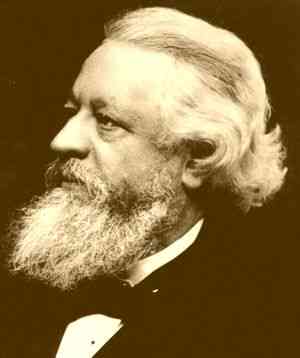 Alexandre Guilmant Source: Guilmant |
|
|
Born 6 Jan 1838 in Cologne, Germany,
Max Bruch's
mother was a singer and his father a lawyer and vice president of the
Cologne police. His first composition was at age nine, a song for his
mother's birthday, after which he began to write all variety of compositions
including a fugue and orchestral prelude. Next to none of his early pieces
survive, though in 1849 at age eleven he wrote 'Septet in E-flat major' Op posth [*;
audio].
Bruch had received first instruction in music in Bonn in 1849 from Heinrich
Carl Breidenstein. Such as a lost 'String Quartet' followed in 1850. His
performance of a 'Symphony in E minor' in March of 1852 was his first, the
year 'String Quartet in C minor' Op posth
[audio]
won him a scholarship from the
Mozart Foundation in Frankfurt [1,
2,
3,
4,
5]. That would enable Bruch to study in
Cologne under Ferdinand Hiller. Bruch's Op 1 was assigned to 'Scherz, List
und Rache' ('Joke, Cunning and Revenge'), a one-act opera comique premiering
in Cologne on 14 Jan 1858 though published the prior year
[1,
2;
audio]. Ludwig Bischoff
provided the libretto borrowed from Goethe's 'Scherz, List und Rache' of
1847. Bruch might have replied "Strings, duh" upon being asked what the cosmos
are made of, as violin was his forte and for what he is known, such as his
'Violin Concerto No. 1' in G minor Op 26 premiering 24 April 1866
[1,
2,
3,
4;
audio:
1,
2].
Into and throughout the seventies he composed, taught and conducted at various
locations in Germany. He conducted three seasons at the Liverpool
Philharmonic Society in England beginning in 1880. He married the singer,
Clara Tuczek, in Berlin on 3 January 1881. Bruch visited Scotland at an
undetermined time in the early eighties, though probably not before his
'Scottish Fantasy' Op 46 for violin and orchestra premiered in Liverpool on 22 February 1881, that an exploration of Scottish folk
melodies w a dedication to violin virtuoso, Pablo de Sarasate
[*;
audio: 1,
2,
3,
4].
Wikipedia has
Bruch acquainting himself with Scottish music at the library in
Munich to compose 'Scottish Fantasy' quite before visiting Scotland. Though Bruch was
Protestant, not Jewish, he next turned to Jewish folk music to write 'Kol
Nidrei' for violoncello and orchestra Op 47 published in 1881 w a dedication
to cellist, Robert Hausman [1,
2,
3,
4,
5;
audio: 1,
2;
1920 Edison
cylinder
recorded by Lauri Kennedy (violoncello) & Dorothy Kennedy (piano). In 1890 Bruch began teaching
composition at the Berlin University of the Arts [1,
2,
3] from where he would retire
twenty years later. They were Scottish and Irish melodies that he published
in 1891 per 'Adagio on Celtic Melodies' for cello and orchestra Op 56
[1,
2;
audio:
1,
2,
3;
score].
"Adagio" means slowly, another composed in 1893 per 'In Memoriam' in C sharp
minor [1,
2,
3;
audio: 1,
2]. Coming with not a few of the usual WoO,
Bruch's last Op number was assigned to 'Five Songs for Voice and Piano' Op
97 written circa 1919. He died in his home in Friedenau, now part of Berlin, on
2 Oct 1920. References: 1,
2.
Chronology.
Compositions:
by genre: 1,
2,
3,
4,
5,
6;
by Opus;
by title: 1,
2.
Editions & scores: English: 1,
2,
3;
French: 1,
2;
German: 1,
2.
Collection (Musicological Institute of the University of Cologne).
Sheet music: 1,
2;
choral works.
Audio: 1,
2,
3,
4,
5,
6.
Recordings of: discos: 1,
2,
3,
4,
5;
'String Quartets' by the Diogenes Quartet.
Usage in modern media.
Iconography.
Max Bruch Society Sondershausen.
Further reading: 'Masters of German Music: Max Bruch' by J.A. Fuller-Maitland (Charles Scribner's Sons 1894);
students of Bruch.
Bibliography: 'Max Bruch: His Life and Works' by Christopher Fifield (Boydell & Brewer 2005).
Other profiles: Catalan;
English;
German: 1,
2,
3;
Norwegian;
Spanish.
Max Bruch 1912 Op 88a 4 movements Philharmonia Orchestra/Semyon Bychkov Pianos: Katia & Marielle Labèque 1877–1878 Op 45 Cantata/oratorio Mezzosoprano: Renée Morloc 1911 Op 88 3 movements OS Simón Bolívar de Venezuela Gregory Carreño Viola: Frank Di Polo Scottish Fantasy 1880 Op 46 4 movements Orquesta Sinfónica de Galicia/Rumon Gamba Violin: Stefan Jackiw Symphony 2 in F minor Op 36 1868–70 3 movements Kölner Philharmoniker/James Conlon Violin Concerto 1 in G minor 1866-68 Op 26 3 movements Staatskapelle Weimar/Pavel Baleff Violin: Sophie Wang Violin Concerto 2 in D minor 1877 Op 44 3 movements Russian Philharmonic Orchestra Dmitry Yablonsky Violin: Maxim Fedotov Violin Concerto 3 in D minor 1891 Op 58 3 movements Russian Philharmonic Orchestra Klavier: Fritz Bernhard Violin: Maxim Fedotov |
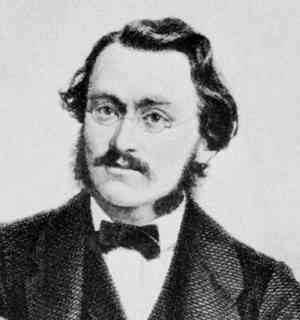 Max Bruch Source: Britannica |
|
|
Born in Paris on 25 Oct 1838,
Georges Bizet is
a major composer who had
a singing teacher for a father. Showing sufficient ability in piano and
singing to enter the Paris Conservatoire at age nine (the minimum age of ten
waived), he there excelled in composing and piano. As he continued through
his youth at the
Conservatoire his major instructor and influence would become Charles
Gounod. Bizet's earliest surviving
compositions are a couple of wordless songs for soprano circa 1850 which Klassika identifies as 'Vokalise für Tenor' WD 109 and a barcarolle titled 'Vokalise
für Zwei Soprane' in F Dur WD 110 ('Vokalise for Two Sopranos' in F major).
Such are the first encounter with vocalise
[1,
2] in these histories. Vocalise
had developed only recently as a tool of instruction in the 18th century.
Generally sung to one or so vowels, vocalise isn't to be confused with its
jazzier modern counterpart arriving a century later than Bizet: "vocalese"
[*] that is lyrics added to preexisting wordless music exemplified by such as
Eddie Jefferson's
1968 rendition of
Coleman Hawkins' 1939 solo during his orchestra's 11 Oct
1939 recording of 'Body and Soul' (Johnny Green 1930). Another sort of
wordless singing to arrive a century later via jazz is the scat
[*] of
such as
Ella Fitzgerald consisting of nonsensical syllables on such as her 1947
bop rendition of 'How
High the Moon' (Morgan Lewis-Nancy Hamilton 1940). More relevant to Bizet, "WD"
numbering above also followed a century later per 'Werkverzeichnis nach
Winton Dean' published in 1948 by Dean. Bizet had
been with the Conservatoire 6 of 9 years when he published a couple songs in
1854 titled 'Petite Marguerite' WD 69 and 'La Rose et l'Abeille' WD 70 w
texts [1,
2] by Olivier Rolland. Also composed that year included
a waltz (WD 48), a nocturne (WD 49) and a fugue (WD 62). Along with works written in 1855
including a fugue (WD 63), a waltz (WD 112), a cantata (WD 117) and perhaps
an overture (WD 32), Bizet spent a month at age seventeen on the student task of 'Symphonie
C-Dur' WD 33 [1,
2,
3;
audio: 1,
2,
3].
Bizet began the opera, 'Ivan IV', in 1856 toward completion in '57 or '58.
Thought to have never been performed, it is now lost. He began a second
version in 1862, possibly performed in 1863 in Baden-Baden. That work
disappeared as well until discovered in 1929 for a possible first
performance in 1940, another in '43 [1,
2;
audio: 1,
2]. Bizet's first opera to be performed was
'Le Docteur Miracle' composed in 1856, premiering in Paris at the Théâtre
des Bouffes Parisiens on 9 April of '57 [1,
2,
3;
audio: 1,
2]. Also in
1857 Bizet won the Prix de Rome for solfège (music theory), his particular scholarship to study 2 years
in Rome, 1 year in Germany and two more in Paris. He was accommodated the
next year in Rome at the Villa Medici [1,
2], the French Academie's quarters there.
He obtained permission to study in Italy another year instead going to
Germany. Upon completing his Prix de Rome Bizet became a teacher and
accompanist. He also arranged, transcribed and didn't get very far as a
music critic. Among works for piano was his 'Variations Chromatiques de
Concert' WD 54 composed in 1868 [1,
2;
audio w Julia Severus at piano;
scores: 1,
2,
3]. Like
Saint-Saëns, Fauré and
Messager,
Bizet was a defender of the Third Republic and joined the National Guard. He
also fled Paris during the subsequent Commune of '71, returning a month later. From
1873 to '74 Bizet composed one of the more memorable in the history of
opera, that his final titled 'Carmen' [1,
2,
3,
4,
5,
6,
7,
8,
9,
10;
audio:
1,
2]
which included his two famous arias,
'Habanera' [1,
2,
3,
4;
score] and
'Toreador Song' [1,
2;
score: 1,
2]. Less than well
received at the time, 'Carmen' was about a woman who rolled cigarettes at a
tobacco factory in Seville. Tagged as "vice" at the time, Carmen was a rough
stage character who not only smoked in public in the story, but smoked on stage
via the first woman to play Carmen's role, Célestine Galli-Marié, at the
Opéra-Comique in Paris on 3 March 1875. It was a shameless faux pas for a
female to light up in public in the latter 19th century and Bizet paid the
price for the theme
[see also 'Carmen' and cigarettes: 1,
2,
3]. Tobacco
(along with cacao and sugar for chocolate) had been crossing the Atlantic from the New World to Europe since
the 16th century [1,
2,
3,
4,
5,
6] and Bizet himself was a smoker, presumably cigarettes.
Other early smoking composers had been Bach, Handel and Beethoven who all
used pipes. Mozart didn't smoke but was partial to snuff. Both Berlioz and
Chopin fired up opium while Brahms preferred cigars [see also smoking
composers at 1,
2,
3].
Bizet died three months to the day after 'Carmen' premiered, that on 3 June 1875
of a second heart attack, he only 36 years of age.
References: 1,
2,
3,
4.
Chronology.
Compositions: auf Deutsch;
by genre: 1,
2,
3,
auf Deutsch,
en français,
på norsk (vidd datoene),
по русски;
by title: 1,
2,
3;
by WD: *,
auf Deutsch;
operas: 1,
2,
på norsk.
Transcriptions of other composers.
Correspondence.
Editions & scores: 1,
2,
3,
4;
French: 1,
2;
German: 1,
2.
Sheet music: 1,
2,
3.
Audio: 1,
2,
3;
cylinder.
Recordings of: discos: 1,
2,
3,
4,
6,
7;
'Songs'
by Dame Ann Murray (mezzo-soprano) & Graham Johnson (piano).
Notable performances 20th century.
Performances of on Broadway.
Usage in film;
in video games.
Iconography:
last home along the Rue de Mesmes in Bougival
where 'Carmen' was completed;
marriage certificate.
Further reading: CLASSIC fM;
religion or absence of.
Bibliography: 1,
2;
'Georges Bizet: Carmen' by Susan McClary (Cambridge U Press 1992).
Other profiles: didactic;
encyclopedic: 1,
2,
3,
4,
5,
6,
7;
musical: 1,
2,
3,
4,
5,
6,
7;
Catalan;
French: 1,
2;
German;
Japanese;
Norwegian: 1,
2;
Russian;
Spanish: 1,
2.
Georges Bizet 1873-74 WD 31 Opera 4 acts Wiener Staatsoper Choir and Orchestra Choirmaster: Thomas Lang Conductor: Andris Nelsons Director: Franco Zeffirelli Carmen: Nadia Krasteva 1856 First performance 1857 Operette 1 act L'Ensemble de Montréal 1871 WD 56 12 piano pieces 4 hands Piano: Alfons & Aloys Kontarsky 1866 WD 15 Opera 4 acts Cori spezzati (split choirs): Olivier Opdebeeck Orchestre d'État Hongrois Failoni Direction musicale: Jérôme Pillement Direction: Pierre Jourdan 1855 WD 33 4 movements Kislovodsk Philharmonic Orchestra Conducting: Ricardo Araújo 1860-68 Revised 1871 WD 37 4 movements University of Chicago Orchestra |
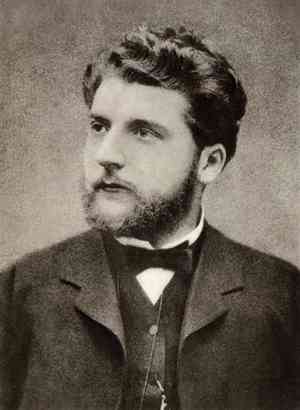 Georges Bizet Source: Britannica |
|
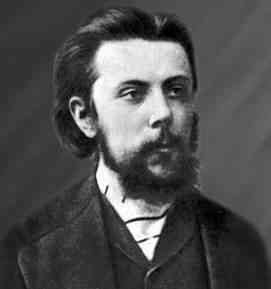 Modest Mussorgsky Source: Audio Sparx |
Born on 21 March 1839 in Kerova, some sixty miles
northeast of modern Belarus,
Modest Pyotrovich Mussorgsky was a
member the Mighty Handful (The Five) led by
Mily Balakirev.
The Five
(the Пятерка, the Kuchka)
were a group of composers who met in St. Petersburg from 1856 to
1870 in the interest of creating music peculiar to Russia rather than
drumming European styles. Other members were
Alexander Borodin,
César Cui
and
Nikolai Rimsky-Korsakov. Mussorgsky's father was a wealthy landowner
whose son published his first piano
piece, 'Porte-enseigne Polka', at age twelve in 1852
[*;
audio: 1,
2,
3,
4]. The next year he
became a cadet in the School of Guards, graduating to the Russian Imperial
Guard in 1856, the year he met
Borodin,
also in the military. Soon attending soirees held by
Alexander Dargomyzhsky,
his abilities at piano began to impress such that
he resigned from the military in 1858 to pursue music. Easier planned than
done, it was needful for him to be employed as a civil servant, which steady
status ended in 1867, becoming a supernumerary, leaving him to make a living
largely by music alone. Mussorgsky composed both the music and librettos for
a load of operas, leaving all but one unfinished, meaning that not all the
Mussorgsky one might hear may actually be by Mussorgsky, having been
completed by others. Mussorgsky's first such incomplete opera was 'Oedipus in
Athens' ('Эдип в Афинах') written between 1858 and '61
[audio]. 'Salammbô'
('Саламбо' or 'Ливиец') was left incomplete after working on it from 1863 to
'66 [1,
2;
audio: 1,
2].
He left 'Marriage' ('Zhenitba' or 'Женитьба') unfinished in summer of
'68 [1,
2].
Excerpts from that first saw stage at the Mariinsky Theatre
[1,
2] in St.
Petersburg in 1873. The only opera Mussorgsky finished was
'Boris Godunov' [1,
2,
3,
4,
5,
6,
7,
8].
The libretto again by Mussorgsky refers to the Tatar (Chet) Tsar of Russia
from 1598 to 1605 following Ivan IV.
The first version [audio] was written from Oct of 1868 to
Dec of 1869, performed at the Mariinsky Theatre in 1870. The second version
[audio] went down at the Mariinsky Theatre on 27 Jan 1874.
Later that year Massorgsky finished another of his best-known works, 'Pictures at an
Exhibition' [1,
2,
3,
4,
5,
6;
audio: 1,
2,
3], a suite of ten movements for piano in honor of a friend of his
who had died the year before, the artist, Viktor Hartmann.
Each movement refers to a painting by Hartmann [1,
2,
3]. In 1880
Mussorgsky was resigned from the civil service
altogether, alcoholism making him unable to function. Mussorgsky is the
first composer in these histories notable for considerable use of
alcohol, a love of
drink that had begun in the military. Armies had been marching for centuries
on mead or beer and militaries in general promoted such as
drunken Saturday nights as bravado. Mussorgsky's Imperial Guard was notable in
such during his two years in its service back in 1856-58. As well, liquor was interwoven with the
Russian "romantic" lifestyle. Mussorgsky drank such as cognac and vodka, but his taste for wine was preceded by
Beethoven
who may have developed cirrhosis of the liver for it. Other big drinkers of wine were
Liszt and
Brahms,
lending rise to the phrase, "Let's get Brahms and Liszt" for "Let's get
drunk". Others known to have liked their wine were
Rossini
and
Schumann [see alcohol and
classical composers: 1,
2,
3,
4,
5; alcohol and Mussorgsky:
1,
2,
3]. In 1881
Mussorgsky endured four seizures, then died
on 28 March that year, having drank himself to death at age forty-two. Mussorgsky
had composed chiefly operas, choral and orchestral works as well as pieces for
solo piano or voice. References: 1,
2.
Compositions: by genre: 1,
2,
3,
4;
by title: 1,
2.
Editions & scores: 1,
2,
3,
4,
French.
Sheet music.
Audio: 1,
2,
3,
4,
5,
6,
7.
Discos: 1,
2,
3,
4,
5.
Usage in modern media.
Iconography.
Further reading: relationship w Rimsky-Korsakov.
Other profiles: encyclopedic: 1,
2,
3,
4,
5,
6,
7,
8;
musical: 1,
2,
3,
4,
5,
6,
7;
French: 1,
2,
3;
Spanish.
Per below, Mussorgsky wrote the libretto and music to
his final opera,
'Khovanshchina', from 1872 to 1880, leaving its orchestration undone.
It was completed the first time by
Rimsky-Korsakov
between 1881 and '83, a second by
Shostakovich
in 1958-59. Mussorgsky's 'Night on Bald Mountain' was featured in the Walt
Disney animation film, 'Fantasia', in 1940. Modest Mussorgsky 1868-72 Opera Bolshoi Theatre Chorus & Orchestra Boris Khaikin Boris: Yevgeny Nesterenko Khovanshchina (Хованщина) Act 1 1872–80 IncompleteSofia National Opera Chorus & Opera Emil Tchakarov Khovanshchina (Хованщина) Act 2 1872–80 IncompleteSofia National Opera Chorus & Opera Emil Tchakarov Khovanshchina (Хованщина) Act 3 1872–80 IncompleteSofia National Opera Chorus & Opera Emil Tchakarov Khovanshchina (Хованщина) Act 4 1872–80 IncompleteSofia National Opera Chorus & Opera Emil Tchakarov Khovanshchina (Хованщина) Act 5 1872–80 IncompleteSofia National Opera Chorus & Opera Emil Tchakarov 1867 Symphonic poem Ludwig Symphony Orchestra Thomas Ludwig 1874 Pieces for piano Piano: Jose Andres Navarro Silberstein |
|
|
Born on 7 May 1840 deep in Russia (780 miles east of
Moscow in Votkinsk in present-day Udmurt Republic),
Pyotr Ilyich Tchaikovsky
is written Пётр Ильич Чайковский in his native language. Before slipping too
far down this column Tchaikovsky Research
(TR)
needs to be cited as a major
reference in addition to Wikipedia. References to "CW" numbering are from
'The Thematic and Bibliographical Catalogue of P. I. Čajkovskij's Works' by
Vaidmanx, Korabelnikova & Rubtsova in 2003/2006
[*]. "TH" numbering is per 'The Tchaikovsky Handbook' by
Poznansky & Langston (Indiana University Press 2002)
[*]. Tchaikovsky
had an engineer and lieutenant colonel serving in the Department of Mines
for a father. Groomed for life as a civil servant, Tchaikovsky was 10 when
he was sent away from Votkinsk to complete studies needful to enter the
Imperial School of Jurisprudence in St. Petersburg. His first composition is
commonly cited to be an unidentified waltz at age fourteen in honor of his
mother upon her death of
cholera in 1854. That isn't to be confused w the 'Anastasie-valse' in F major ČW
95 TH 119
that he dedicated to his governess, Anastasiya Petrova, in August of 1854 a couple months after his mother's death
[1,
2;
audio: 1,
2]. Another of Tchaikovsky's early
works while at the School of Jurisprudence was his lost one-act opera, 'Hyperbola' ČW 446 TH 201, written in autumn of '54 [*]. In 1859 Tchaikovsky was employed at the Ministry of Justice for the
next three years, having been taught piano sporadically by a couple teachers
by then, but not to much actual intent. He began to get serious in 1861,
studying music theory at classes arranged by the Russian Musical Society
(RMS) in St. Petersburg, that founded in 1859 by Grand Duchess
Elena Pavlovna and
Anton Rubinstein.
Tchaikovky's 'Mezze Notte' ČW 209 TH 91 of 1860 or '61 was his first composition to be published,
that by Yury Leibrock in Saint Petersburg in an edition of 'Musée Musical',
lost thereafter until discovery in 1903
[1,
2;
audio: 1,
2;
score;
text].
See other early works by Tchaikovsky. In 1862 Tchaikovsky enrolled in
Rubinstein's
Saint Petersburg Conservatory. Among his first explorations during that period was
'Characteristic Dances' ČW 428 TH 37 also serving as the first public
performance of one of his works, that conducted by
Johann Strauss II
at Pavlovsk Park on 11 September 1865 [*].
He wrote 'Piano Sonata' in C sharp minor ČW 97 TH 123 Op posth 80 during his
last year of study at the Conservatory, that not published until 1900
[1,
2,
3;
audio w piano by Emil Gilels: 1,
2].
He was just beginning a professorship at the Moscow Conservatory when he began 'Symphony 1 in G minor'
('Winter Daydreams') CW 21 TH 24 Op 13 in 1866,
that getting conducted at an RMS concert in Moscow by Nikolai Rubinstein (younger brother to
Anton
above) on 15 Feb of 1868, that also dedicated to Nikolai who had initially invited him
to the Conservatory. Tchaikovsky's
initial Opus is assigned to 'Scherzo à la Russe' in B-flat minor CW 98 TH
124 Op 1 No.1 performed by Nikolai in Moscow on 31 March of '67
[1,
2,
3;
audio w piano by
Valentina Lisitsa,
Orly Watson,
Earl Wild].
'Impromptu' in E-flat minor CW 99 TH 122 Op 1 No.2 had actually been composed
in '63 or '64 [*;
audio w piano by
Valentina Lisitsa]. Tchaikovsky's
first of eleven operas listed at TR was 'The Voyevoda' ČW 1 TH 1 Op 3, premiering at the
Bolshoi Theatre in Moscow on 11 Feb 1869 [1,
2,
3;
audio of Overture;
score]. That isn't to be confused w his
later unrelated symphonic ballad of 1890-91, 'The Voyevoda' Op 78 (below). Tchaikovsky premiered his symphonic poem, 'Fatum' ČW 38 TH 41 Op 77,
four days later on 15 Feb 1869 at the
eighth concert held in Moscow by the RMS, again conducted by Nikolai
[1,
2,
3;
audio;
score]. By that time the last fourteen years had
witnessed the rift between
Anton Rubinstein, a musical conservative
who emphasized the importance of western European composition, and
Balakirev,
whose Free School distanced itself from European influence, emphasizing
individuality in the creation of a music that Russia could call its own.
Tchaikovsky was caught in between, sympathizing with both, neither
absolutely, and distancing himself from both, neither absolutely. Tchaikovsky
and Rubinstein
had their disagreements on the direction Russian music ought go but worked together
closely off and on until
Rubinstein's death in 1881.
Balakirev nevertheless
contributed in a consultative manner to Tchaikovsky's symphonic poem, 'Romeo and Juliet' ČW 39 TH 42,
that premiered on 16 March
of 1870 based on the 1591-95 eponymous play by Shakespeare
[1,
2,
3,
4,
5;
audio of Overture]. Come
Tchaikovsky's second opera, 'Undina' ČW 2 TH 2, at the Bolshoi on 28
March 1870 [1,
2,
3;
score;
audio of the aria, movement 2 of five, 'Undina's Song':
1,
2].
Tchaikovsky wrote his 'Guide to the Practical Study of Harmony'
('Руководство к практическому изучению гармоний') ČW 513 TH 255 in July and
August of 1871 toward publishing in 1872
[1,
2;
Preface]. Tchaikovsky also received
Balakirev's
blessing on his 'Symphony
No.2' in C minor ('Little Russian') Op 17, composed in
1872, after which Tchaikovsky and the
Free School
would remain on generally friendly terms. The Finale of 'Little Russian' was
privately performed at the residence of
Rimsky-Korsakov,
youngest member of
Balakirev's
Five,
on 7 Jan 1873 in St. Petersburg. Its entirety w Nikolai Rubinstein again
conducting premiered in Moscow on 7 February. His second version premiered
several years later on 12 Feb 1881 in St. Petersburg for the RMS
[audio].
Pyotr Jurgenson published Tchaikovsky's 'A Short Manual of Harmony' ČW 514
TH 256 in 1875 [entire: 1,
2;
Preface].
It was 1876 when he began corresponding for the next fourteen years with a
patroness he would never meet, Nadezhda
von Meck [1,
2,
3], the widow of a wealthy railroad magnate. Meck
paid Tchaikovsky 6,000 rubles a year, equivalent to about $160,000 today.
Come his ballet, 'Swan Lake' ČW 12 TH 12 Op 20, at the Bolshoi Theatre on 4
March 1877 performed by the Bolshoi Ballet [1,
2,
3,
4,
5;
audio]. It was 1880 when Tchaikovsky
spent six weeks composing his '1812 Overture' ČW 46 TH 49 Op 49 toward its
premiere in Moscow on 20 August of 1882 w Ippolit Al'tani conducting
[1,
2,
3,
4,
5;
audio].
In 1884 Tchaikovsky was awarded the Order of St. Vladimir by Tsar Alexander
III. Already a tycoon, in 1885 he was awarded an annual pension of 3,000 rubles, worth about
$80,000 today, by Tsar Alexander III. Tchaikovsky visited St. Petersburg in
Nov 1887, initiating his relationship w the Belyayev circle [1,
2,
3], a group of
nationalistic composers including
Rimsky-Korsakov
who gravitated about the publisher, Mitrofan Belyayev [1,
2].
Tchaikovsky's 'Symphony No. 5' in E
minor premiered at the Mariinsky Theatre in St. Petersburg on 17 November
1888 [1,
2,
3,
4;
audio: Leningrad Philharmonic,
Qatar Philharmonic,
Royal Philharmonic,
SO des Bayerischen Rundfunks].
He conducted his overture-fantasia, 'Hamlet' ČW 50TH 53 Op 67, a week later
on 24 Nov 1888 for the RMS in St. Petersburg, again borrowing from
Shakespeare
[1,
2,
3;
performances of the Overture: Israel Philharmonic,
London SO,
SYO Philharmonic].
His ballet, 'The Sleeping Beauty' ČW 13 TH 13 Op 66, arrived to the
Mariinsky Theatre in St. Petersburg on 15 January 1890
[1,
2,
3,
4;
audio]. Tchaikovsky is among the first composers in these histories to have visited
the United States, conducting his first concert at Carnegie Hall on 25 April 1891
[1,
2].
Wikipedia has Tchaikovsky's performance of 5 May as Carnegie's official
opening date. Tchaikovsky had been preceded to the States by
Strauss II
in summer of 1872 followed by Anton Rubinstein
later that year. Leopold Godowsky
arrived to the States in 1884,
Fritz Kreisler in 1888. Both
Busoni
and Paderewski
also first visited the States in 1891. Back in Russia that year, Tchaikovsky
conducted his symphonic ballad, 'The Voyevoda' in A minor ČW 51 TH 54
Op 78 on 18 November 1891 in St. Petersburg
[1,
2,
3,
4;
audio: All-Union Radio SO,
Chicago SO,
Zaporizhzhya Academic SO]. That isn't to be confused
with his first opera, Op 3, of 1869 by the same title (above). Tchaikovsky's
string of ballets, 'Nutcracker Suite' ČW 32 TH 35 Op 71a, premiered for the
RMS in St. Petersburg on 19 March 1892 [1,
2,
3;
audio;
score]. Eight of those were borrowed from
his ballet, 'The Nutcracker' ČW 14 TH 14 Op 71, that later premiered on 18
December 1892 [1,
2,
3,
4,
5,
6,
7,
8;
audio;
score].
With Antonietta Dell'Era in the role of the Sugar Plum Fairy, she received 5
encores. Included in both the 'Nutcracker Suite' and 'The Nutcracker' is the
'Dance of the Sugar Plum Fairy', the ballet version, No.14 Var.2, being
longer by 32 bars [live performances: Lauren Cuthbertson,
Nina Kaptsova].
Tchaikovsky premiered his last opera, 'Iolanta' ČW 11 TH 11 Op 69, on the
same date as 'The Nutcracker' as a double billing (18 Dec '92)
[1,
2,
3,
4;
live performance] He conducted his last concert
on 28 Oct 1893 at the debut of 'Symphony No. 6' ('Pathétique') in B minor ČW 27 TH 30
Op 74 in Saint
Petersburg [1,
2,
3,
4,
5;
live performance by the Portland Youth Philharmonic].
Tchaikovsky died nine days later on 6 November 1893. It isn't known what killed him, cholera
from drinking bad water the general consensus
[1,
2,
3]. Tchaikovsky had twice
married, but as neither wife understood his homosexuality any more than he, neither marriage had been successful.
He had completed three
ballets, 11 operas, seven symphonies, various chamber, orchestral and choral
works, as well as a strong number of arrangements of other composers. His 'Nutcracker Suite'
was featured in the Walt Disney animation film, 'Fantasia', in 1940.
References: 1,
2,
3,
4,
5.
Chronology.
Compositions:
alpha;
chrono:
by genre: 1,
2,
3,
4,
5,
6,
7;
by Opus: 1,
2,
3,
4;
for piano;
by TH.
Authorship: personal:
diaries;
letters: 1,
2.
Editions & scores: English: 1,
2,
3;
French;
'Academic Edition of the Complete Works' (2013-2018)
*;
'Complete Collected Works' in 107 volumes (1940-1990)
*;
'New Complete Edition' in 76 volumes (1993-2001)
*.
Sheet music: 1,
2.
Song texts.
Audio: 1,
2,
3,
4,
5,
6,
7,
8.
Discos: 1,
2,
3,
4.
Performances of on Broadway.
Usage in film: 1,
2;
in video games.
Iconography: 1,
2.
Further reading by source:
Jacy Burroughs (biographical);
'The Life & Letters of Peter Ilich Tchaikovsky' by
Modest Chaikovskii.
Further reading by topic:
associates: 1,
2;
Belyayev Circle: 1,
2;
folk fairy tales;
relationship w the Five: 1,
2;
music by genre;
symphonies;
travels;
usage of
triad chords.
Bibliography:
'Pyotr Tchaikovsky' by Philip Bullock (Reaktion Books 2016);
'Aspects of Sexuality and Structure in the Later Symphonies of Tchaikovsky' by
Timothy Jackson ('Music Analysis' 1996);
'Tchaikovsky Papers: Unlocking the Family Archive' by Polina Vaidman (Yale U Press 2018).
Other profiles: English: cultural (Russian);
didactic:
1,
2;
encyclopedic: 1,
2,
3;
musical: 1,
2,
3,
4;
travel;
archived: 1,
2;
French;
German;
Italiano;
Japanese in English.
Pyotr Tchaikovsky 1880 Op 49 Symphonic St. Germain Orchestra Vladimir Szell 1892 Op 71 Ballet RTV Moscow Large Symphony Orchestra Vladimir Fedoseyev Piano Concerto 1 in B flat minor Three versions: 1874-90? Op 23Finnish Radio Symphony Orchestra Hannu Lintu Piano: Yuja Wang Three versions: 1869-80 Symphonic poem (overture-fantasie) Philadelphia Orchestra/Eugene Ormandy 1888–89 Op 66 Ballet The National Philharmonic Orchestra Richard Bonynge premiere: 1877 Op 20 Ballet Moscow Radio Symphony Orchestra Gennady Rozhdestvensky Symphony 6 in B minor (Pathétique) 1893 Op 74Royal Philharmonic Orchestra Conducting: Yuri Temirkanov |
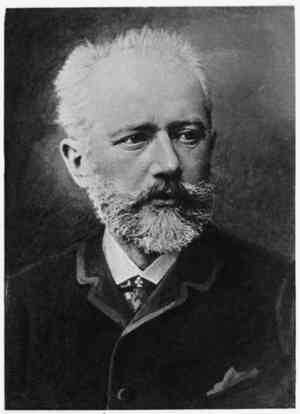 Pyotr Tchaikovsky Source: Wikipedia |
|
|
This history of the first several decades of the Romantic period suspends with Tchaikovsky. |
|
Blues
Early Blues 2: Vocal - Other Instruments
Modern Blues 2: Vocal - Other Instruments
Romantic: Composers born 1770 to 1840
Early Jazz 1: Ragtime - Bands - Horn
Early Jazz 2: Ragtime - Other Instrumentation
Modern 4: Guitar - Other String
Modern 5: Percussion - Other Orchestration
Modern 7: Latin Jazz - Latin Recording
Modern 8: United States 1960 - 1970
Modern 9: International 1960 - 1970
Latin Recording 2: The Caribbean
Latin Recording 3: South America
Rock & Roll
Total War - Sixties American Rock
Classical - Medieval to Renaissance
Classical - Baroque to ClassicalBoogie Woogie - Doo Wop - R&B - Rock & Roll - Soul - Disco
Sixties American Rock - Popular
Latin Recording - Europe
![]()
vfssmail (at) gmaill (dot) com